Q-n-A Webinar 2: May 14
Q-n-A with Craig Morrow, second webinar, May 14th 2025
Welcome, everybody.
If you can hear me, say hello in the chat and let me know that you can hear me.
Let me know my microphone is working correctly, loud and clear.
All right.
Wow.
Those things popped up pretty fast.
All right.
Hello, everybody.
Mike, Thomas, James, Bob, Doug.
All right.
Perfect.
Chris B is in the house.
Fantastic.
We got the troublemaker Alex in the house.
That's scary.
Y 'all want to stay away from that one.
All right, everybody.
Welcome to Q &A session two.
I will be your humble swing guide or attempt to be your humble swing guide today.
And thanks for spending your evening with me.
I hope everybody enjoyed.
Session number one, I hope you got a whole lot out of it.
I think that we covered some really good topics.
I think tonight there might be some kind of reruns because questions are the same, but as we all know, further clarification can't hurt.
So what I'm going to do is I'm going to give it a couple minutes because I see the numbers popping up on my screen right here.
And I'm letting everybody kind of pile in the room before I get started.
Hey, Steve, how are we doing today?
Dennis?
David, fantastic.
So we all learned something, right?
I hope so.
Hopefully we'll learn a little bit more tonight.
And I want to start by saying just a little bit.
Everybody's going to get answered, okay?
I'm going to answer everybody.
Remember, this series is going to be going on through this month and next month.
So keep posting your questions.
Keep putting everything in the community.
You're going to get answered.
All right.
I may not be able to get to some people because I had some postings today saying, hey, Craig, can you throw this in tonight's webinar?
And I'm like, well, you know, the early bird gets the worm.
I've got a lot of people ahead that I want to get answered that are really eager or that were really eager to get their questions posted.
But fear not.
If you don't get your question answered today, I will answer it.
That's why this series is going on for the next two months is because.
We got time to do it.
So I'm going to get everybody answered, all right?
And remember, there are no dumb questions.
If you think it's a silly question, still post it.
I might go ahead and answer it on the community, but it may be something that I want to elaborate on a little bit more because it needs more talking about.
So don't fret.
Don't be scared to post anything.
All right.
Hey, Carver, how are we doing today?
All right, I'm going to give it about one more minute and then we will get going because I keep seeing y 'all can't see it.
But on my end, I got these numbers kind of climbing on my screen.
And well, actually, I can talk about this while we're doing that.
We had one question that came in through the first session that I didn't answer.
And I want to let that person know that I do have their question and their question was.
Living in the Northeast with limited indoor space makes working on the swing difficult for roughly half the year and would love a sequential set of drills and exercises that could be used during the downtime with or without club usage that would fit into lessons kind of working on the trail side pattern.
Now, I spoke to Chuck about that one, and that's actually going to be a series that he's going to be working on.
So it's not that I ignored your question.
But that's actually something that he's working on on the back end that will explain it much better than I ever will.
Because I got a really good response on the first webinar where somebody said this was the good cliff notes to Chuck's master literature.
And I was like, all right, just enough to pass the test up here.
It's like that's how I got through school.
Hello, Fred.
Hey Steven, how are we doing today?
Brent, how do you view and post on the community?
Brent, if you go to the main page or the home screen, you will see up at the top, you'll see a big thing that says community.
When you go to community, when you go there, the very first pinned post, you're going to see a button that says start here, and that'll tell you what each category is for.
Now for these sessions, you must post in the live sessions section.
That's where I'm looking.
If you post in GOAT code, if you post in C4, if you post in 19th hole, I'm going to go ahead and answer those thinking that's just something you kind of want a quick report to.
All right.
Larry.
Now, Larry, you know where to post the questions.
Why is the takeaway so important?
Well, it's important.
You don't hit the ball with it, but it's important.
Can you elaborate on eliminating push from the arm or wrist?
I can, but I got my list to get through, bud.
Put that up on the community.
It might be in today's.
I think somebody asked somewhat the same question.
But since my ticker is kind of slowing up, let's get started.
So round two.
And remember, when you post a question, I'm like Ron Burgundy up here.
I'm going to read it how it's written.
I'm not going to change anything.
So when you post it, make sure it's how you want it said.
So session number two, let's get started with a good one.
Where I left off was active or passive risk.
So this one's going to be finish, finish, finish.
I can't seem to cover the ball.
And then finish with my weight transfer to my front foot, standing upright, looking at the target.
So I'm taking that, as you can't seem to finish, in a nice full roundabout way.
How can I get the weight transfer to happen naturally?
How can I get the weight transfer to happen naturally?
Well, that's a little bit of a different question than staying covered over the ball.
But I do have some thoughts on that.
So how can I get the weight transfer to happen naturally?
Because that's part of the trail side is really using feel.
So there's two ways that I like to do it in particular.
And for those of you that have been with Rotary and even watched some of my C4 videos back in the day, one great thing that I always do is I get alive with my feet.
That's the easiest way to start understanding weight transfer and getting moving in the swing.
And what I mean by getting alive in the feet, is just start waking them up.
There's nothing wrong with moving a little bit laterally like this when you're trying to waken up your body, when you're trying to feel what natural weight transfer is.
Yeah, I can get a five-year-old to do this.
If you start to make some swings and just take swing out of the equation right now.
Right now, you're trying to feel moving weight.
Allow your feet to lift.
So start to make a swing where you start to go back and you let your left foot lift and then start to let your right foot lift.
Just getting your feet awake like this, this will help you start to feel what it's like to move weight from your trail side to your lead side back and forth.
And like I said, if you take golf out of the equation for a second, just hit a couple shots that way.
We're not going for perfection right now.
You're trying to feel some weight transfer.
So get a club in your hand.
You can do this in small nine to three swings.
You can do this in three quarter swings.
But get a club in your hand.
And I think I actually grabbed the wrong club.
If I hit the ceiling, you'll be in for it.
So as you start to go back, just start to lift your feet a little bit.
Just so you can feel moving from one side to another.
Don't worry about perfection of what's going on with the club head or anything.
But let your feet lift so that one's lightening and the other one's getting a little bit heavier that way.
And then you can actually start to feel how you can ramp up your speed.
All right.
Because you'll start to kind of feel it almost, I call it in my swinger view, it's kind of like a rudder system.
You know, if you think about like, you know, a duck paddling or a rudder moving back and forth like this, if you get the feet alive and moving, you can start to move really fast, but you can feel naturally how to get into your trail side and how to get into your lead side.
Now, the other part of that question.
was can't seem to cover the ball, finish the weight, transfer on the right foot.
Full finish.
If you're transferring your weight, okay, if you're transferring your weight, but you're not finishing, more than likely, and you're not covering the ball, more than likely what's happening is as you're coming down, you're early extending, all right?
You're starting to create a little bit of stand-up right here.
which is going to raise your chest okay so if i start to early extend too soon for my trail side my chest is going to raise my head's going to come up and as i come through the strike it's going to be really hard to get to a full finish because look at what happens i'm going to kind of exaggerate a little bit if i really push from that side what happens you can see i'm falling back on my trail foot right now so reading this user's questions I would make sure that you're not early extending and pushing that hip too far towards the ball because what you're missing is the fact that as you start to release the club and your core and your lead leg has posted correctly, that momentum is going to whip you around to a full follow through.
I don't have to try to finish.
It's one Our kind of pet peeves is working the swing backwards that way.
The finish is a great diagnostic tool.
Looking at somebody's finish can tell you a lot about what they did in their swing.
But it's a byproduct.
It's a safe deceleration of motion.
So you should never have to try to finish.
If you're moving through your core correctly, you're posting up, and you're letting the snap and the whip, you should be able to reach a full finish without any problems.
But what I would check, is i would check to make sure that you're not early extending all right question number two supination exactly when do we do this move i think it has to be at the very end of the backswing when the club has stopped moving momentarily the club kind of never really stops but yes it's at the top of the backswing is this is going to be where we really start to kind of supinate so if i exaggerate right now i'm here, and then I move into supination.
All right.
So as soon as I get to the top and I move into the transition, that's going to be where I'm moving into supination.
Otherwise, you're just trying to steer the club.
Correct.
Because most players, they get here and they get so concerned with the fact that they have to square up the club or they have to power it that they start pushing and throwing too soon.
Now, let me clarify that because this popped in my head literally as I was saying that.
There's a difference between a proper throw and a cast, okay?
So as they're up at the top and they start throwing the angle of their wrist too soon, that would be steering the club.
So I need to get this built in as long club shots are tending to go left.
If your long club shots are tending to go left, then more than likely you are pushing and steering from the top.
that as you're starting to drive down, you're taking the trail shoulder, you're taking the trail arm, you're taking the trail hand, and you're starting to steepen the pitch of this shaft early in an attempt to get power or square up the club because that feels like a very powerful motion.
And when you start to do this, you can see that the pitch of the shaft and the club are starting to swing this little bit left.
And so that can definitely bring about the potential of hitting a pole.
What does the lead wrist have to do to support the trail wrist that is supinating?
Well, that's a good question.
So what is the lead wrist really doing right here?
What is the lead wrist really there for?
We know that we use it in the takeaway, just as for those that watch the hand webinar.
We know that it's helping set the club up as we're going down our railroad tracks right here.
But what is the lead wrist really doing as I start to transition?
Well, I'm kind of just letting it get out of the way, to be honest with you.
Both arms and hands are still doing something.
Both sides of your body are still doing something.
But my lead wrist, what I'm really trying to do is let it react to what my trail wrist is doing.
So my lead wrist is in a supporting role because of my grip in the fingers, palm, pushing down on the club, supporting the weight.
But as I start to supinate.
and I start to make my motion coming down, I'm trying to let this lead wrist react to the fact that my extension is going to get a little bit greater, that I'm supinating with my trail, because if I let my lead wrist react, then I really don't have to worry about trying to create a massive amount of flexion and impact or a massive amount of bow, because your lead wrist is going to react to your trail wrist.
So if I'm standing right here, if I.
take my trail wrist and go into extension what does my lead wrist do well my lead wrist goes into flexion right here and vice versa so if i'm at the top and i'm taking my trail wrist this way what was my lead wrist doing my lead wrist is going into flexion i didn't have to make that happen okay as if i get up here and i start to push the button to get a quick supination right here As I make that motion right there, I'm allowing my lead wrist to follow because this is a trail side guided swing.
So if you're struggling with what to do with the lead wrist up there at the top, you don't want to kind of do anything with it.
You don't need to do anything with it.
If you need to do some specialty shots, yeah, you have to add more.
But for a standard stock every day, I'm going to make my golf swing.
I'm going to get up here to the top.
And as I get up here to the top, I'm going to supinate.
I'm letting my lead wrist kind of go along for the ride because my trail side is directing the entire motion so hopefully that helps that member all right let's see number three i would like some clarification on lateral movement and how it works in a trail side pattern i know there has to be lateral movement Correct.
But I don't quite understand how you can have lateral movement and the ideas of pivoting off the trail foot and staying back behind the ball all at the same time.
If you could demystify this tonight, it would be grateful.
Okay.
Let me see if I can demonstrate this or explain it as clearly as I can.
Yes, there is lateral motion in the swing.
All right.
So one thing that you have to realize is that as I start to go throughout the swing and I move up towards the top, I will start to have some recentering and my pelvis will have to start to move laterally.
You're not trying in the golf swing to literally hang back and stay on this trail leg.
So the pelvis right here, there has to be some lateral motion.
It's the same thing even if you think about the old lead side pattern.
As this moves laterally, my spine.
is going to start to tilt back as i move into side bend right here so you can see how my hips and pelvis are moving right now as i move into side bend what are my hips doing okay my hips are shifting laterally right here okay so in a trail side pattern when i move into side bend that's what's shifting my pelvis laterally this way And the ideas of pivoting off the trail foot and staying behind the golf ball.
Well, the ideas of pivoting off the trail foot and staying behind the golf ball isn't that you're trying to stay on this back leg and hit.
Okay, that's not what you're trying to do.
What you're trying to do is not get towards the top and shift all your mass to your lead side to where you get into a position that you can't add any rotational speed.
So if I'm pivoting off my trail leg and I'm trying to get some rotational speed, and I get up to the top and I dump all my mass, okay?
And let me kind of clarify this.
Mass, this is mass, all right?
This is my weight, like my big body moving from right to left right here.
I'm shifting my mass.
Pressure is what I'm getting from the ground, okay?
So pressure.
Like right now, my pressure is rapidly changing.
Like you can have fun with this on a force plate.
If I'm going like this, I'm changing what my ground force leverage is right now.
I'm changing my vertical force right here.
All right.
That's pressure.
What I'm getting back and from the ground right here.
Mass is me, like my big weight.
And staying behind the ball at the same time.
Well, that's the thing.
As I move up here towards the top and I start to pivot with my trail side, my pressure is going to increase on my lead side.
It has to.
My trail foot's starting to get light right now, so it's got to be going somewhere.
Right now, both my pressure and my mass are on this side, but as my trail foot starts to unweight right here, my pressure is starting to increase here on my lead side.
Chuck is trying to say is if you take your mass and you shift all your mass over in your transition, like literally go like this.
Well, from this position, I've got nothing I can add for my trail side to get any rotational speed flow.
So the feeling to still be able to get rotational speed from here is to allow my pressure is still going to increase on that side, but to get this driving.
to provide juice, but not jump all of my mass over there at once because now I have nothing I can really fire with.
Okay?
I think that's all the question.
And so when I do that and I drive from this side and I move into side bend, head behind the ball, at making this motion into side bend and allowing my pelvis to shift over here, I can stay behind the ball this way.
Okay?
because i don't want to dive and get out ahead of the golf ball this is what i call like in you know my lessons like a heavy lead leg when you get a heavy lead leg too soon you're never going to get it posted up there's too much mass on it there's too much pressure right here you're never going to get this posted i can't i don't have enough time to try to get that posted up before i get to the golf ball so when i start to shift my pressure over here and might start to move laterally as I move into side bin, that motion's pretty snappy, okay?
Because I don't want to get too heavy because I'll never get posted up, and then I will start sliding out ahead of the golf ball.
So hopefully that helps.
All right.
Let's see.
I just wanted to make sure there was nothing going on up here that's.
Okay.
So hopefully that helps clarify for that member.
and y 'all at home okay let's see number four i'm trying to extend my trail arm into the backswing and you're encouraging me to do so yes so we want the trail arm to maintain its width in the backswing maintaining the extension of that trail arm It takes me back with my core and keeps me from just lifting.
Good.
I'm noticing that Rory and Hogan triggered their backswings by extending their arms before starting their swings.
Does that seem like a good way to initiate the feel?
There are other ways.
Well, I can't really say for Hogan, but I have watched Rory enough.
I don't want to per se.
and say that Rory is starting it with his arms?
Because when you watch Rory as he starts back, you will see how he kind of gets this kind of extended squeezing of the arms look, a la Hogan, but this really tight and locked in look.
But as he starts to go back, he's not doing this and then starting back with his arms.
Like that's not triggering it and then moving.
If you watch Rory, if you watch Tiger and you watch.
A lot of the great players, their first move.
Roy right here, in my eyes, as he's getting here and as he gets this locked out, you're going to see that once he sets this into position, he starts to move laterally.
so I don't want the trigger.
Ideally, I don't want the trigger for your golf swing to be arms.
All right, because typically once you get the arms going, they're off to the races is really.
Nothing you can do about the arms once they kind of get going too much and there's kind of nothing involved in the body.
What I see from Roy is that he gets here and he gets the arms locked out tight, really tightens this core right here.
And you'll really see it's not like as dramatic as a Henrik Stenson, but you'll really see that his first move is really getting that lateral motion, getting that weight into this side right here.
So instead of using the arms, to kind of trigger, use that as like the last line before the trigger.
All right, I'm going to get here.
If you like that feeling, get here.
I'm going to get my arms, my trail arm, my lead arm are all locked out.
They're nice and straight.
But to get the train moving off the tracks, I want to see some movement.
I want to see some early load as being a little bit more of the trigger.
Because I'm afraid if you try to do this and then move your arms, that's all you're going to do is sit there and then move your arms.
Because most players you will see started with some type of lateral motion.
So hopefully that helps.
All right.
Number five.
I understand the takeaway.
That's good.
And how important it is to get to the good top position of the backswing.
But after getting to a good position at the top, The transition to transfer the weight to the front leg, shallow the club, is more difficult because it's dynamic, okay?
Please explain or maybe give a drill to do a good transition and also explain what the muscles in what order to use, legs, hands, arms during the downswing.
Well, I'll kind of go backwards on that.
So as you're starting to make the transition, as you're starting to go through, the first thing that's going to happen is that as you start to reach the top, you are going to start to recenter and start to shift your pressure back a little bit to the lead side right here.
Now, in what order to use the legs, hands and arms?
Well, the first one, I don't really want you using your arms at all.
All right.
I want you to kind of go back and think about some of Chuck's videos where Chuck talks about how, you know, the arms are kind of the spokes on a wheel.
All right.
I don't really want you even kind of trying to do anything with your arms, but legs or hands.
Well, this movement right here, this is all kind of simultaneous right here.
All right.
I'm not trying to move my hand independently of moving my leg, but as I start to move my pressure back right here and my core starts to drive, my inner adductors are going to fire right here to help me start pulling some weight to my lead side as my trail leg.
And for me, I'm kind of in the adage of squishing the bug where I'm really kind of getting that trail toe, trail knee, trail leg, trail side driving.
I'm really trying to pivot off that side so I can make that as fast as possible.
So to me, this motion is a unit.
I don't like segmenting that.
And I think that's part of the problem, especially since we're trying to recruit the fascia and we're trying to make the swing dynamic.
is if you break it off into too many components, then you start to lose a little bit of the force through the trees because that's not how it works.
I mean, you can, if you were to, if we're just going to use like a baseball analogy, now I'm not a major league pitcher.
So anybody out there, but I'm not going to sit here and teach somebody to throw like this.
I'm not going to say, okay, step your foot, get your arm here.
Use your chest, use your arms, use your hand.
I mean, I'm already tongue-tied trying to do that.
I would have the person first start moving.
I'd have the person start trying to develop a little bit of coordination with this, okay?
And so what ends up happening is this motion, even though, yes, I'm getting back over this side and I'm starting to pull and my hands are starting to go on, all of this.
is kind of going all at once because that's what I'm trying to get to happen even though everybody's kind of going at a different rate everybody's kind of going at a different distance I'm trying to get all of this to be one motion and I think that if you try to split it up or if you get into your head and you're like okay I've got to do this I've got to do this okay now I've got my shoulder blade going down so I can get that scapula locked right here and I'm going to use my adductors right here to kind of squeeze my knees because I don't want to squat this way and as I start to use that and I drive for my trail The golf swing doesn't work like that.
This movement is supposed to be more of a natural feel.
This movement is supposed to be more of taking the concept of understanding the conveyor belt, where you're getting into the supination, the deviation, and the rotation, and then starting to feel, okay, well, how can I take that motion and make it snappier?
How can I take that skipping of the stone analogy or the underhanded softball pitch?
So I don't want you to really.
Think about all that.
That's kind of our job is to figure out like what's kind of going on, but I think that will actually break it.
So maybe give a good drill for the transition.
Well, it kind of depends on what you need because you gave me a lot right there.
So it kind of depends on what you need.
If you're not feeling the body, one of the ones that I really like, like if you're, if you have the tendency to just go to the top and when you get up here towards the top, Every motion is just firing.
That's the first thing that I want to do.
No matter what I do, I can't seem to comprehend moving my body without firing my arms immediately first.
We'll take the arms out of the equation first.
I love kind of taking that and doing the old resting on the shoulder where you get up here and you just rest it on your shoulder right here.
How am I going to get this club to this ball right here?
How am I going to get this club to this ground?
I don't want you to swing this club or swing your arms.
So if I wasn't allowed to move my arms and hands right now, they're here.
They're dead on my shoulder right here.
The only way I can do that is move my body.
I'm not allowed to do anything with my arms and hands right now.
So the only way I can move this is move my body and then let the club come down and swing.
So you can see.
It's not going to be as pretty as it would be in a normal golf swing.
But what you're going to notice, if you get up here and just kind of rest this, and then you start to just sequence your body down, you can see what's happening.
If I do nothing with my arms and hands and my core starts to lead the way, the club is going to come down from a shallow position and then start getting into the release.
And this is literally me just taking all my arms out of the swing.
And so you can take that same feeling right here.
And then you can start putting your arms here and saying, OK, well, I know what it feels like to not do anything with my arms.
So let me go through that.
Let me feel the same thing of kind of almost leaving my arms there for a second just to get my body going.
If you just really have that hard time of kind of firing arms and hands.
Now, a second drill I really like for that.
which kind of puts them all in perspective, because as you're saying, like what goes first, the hands, the legs, the arms and hands is kind of like the super supinator drill.
And I can actually show you and actually now I'm thinking about it, I can actually show you Chuck doing it.
So that would literally be getting here and then feeling this whole motion.
So I'm getting into this position and I'm feeling the supination, the side bend.
And my hips starting to move a little bit laterally like this because I'm feeling a little bit of kind of, you know, squishing the bug, so to speak.
So I'm right here and just doing this, just getting all these pieces together where I'm feeling kind of the tip of the shaft, the supination or the pushing of the button.
So I'm feeling the supination.
I'm feeling the side bend and I'm letting my trail side and I'm letting my core start to pivot.
Like this is a really good one.
to get the feel of what you're trying to do coming down and i'll show you actually a good one over here let's see well i thought i knew what i was doing but apparently i don't all right there we go all right so hopefully you should be able to see my screen right now okay and if you can see my screen can everybody see my screen i don't don't know back to tab all right you can everybody can see my screen right now now that i just did what i did okay perfect all right so if i let me go to my system right here and we're gonna get to chuck And let's go over here.
Right here.
Okay.
So like what I was just showing you right there, and this is a friendly reminder, if you don't follow us on all socials, it's a good thing to do.
You can learn some stuff there too.
So watch Chuck right here.
What I want you to take notice of, and this is kind of what he's doing is like the super supernator.
So you're going to see he's letting the shaft pitch back, moving into side bent.
And look at how he's allowing his trail side and his core to move through.
And you can see that his pelvis is starting to move a little bit laterally right there.
But his head and his mass aren't diving forward.
So he's going to sit there for a second.
He's going to sit there for a second, do a couple pumps, do a couple pumps.
And then as he gets that feel for it, he's going to blend it all into one motion and take it all the way to the ball.
So you can see now in perfect GDP, getting the impact and letting the club release.
But that all started because he's trying to feel that throw of the hands and he's letting the throw of the hands, the supination, the side bend and the pivoting from the trail side, bring everything into impact.
He really hasn't had to do much of anything to get to that position.
So that's a really good drill.
Hopefully that kind of expands upon a little bit of where we're at with this.
No video, just Demio screen.
Uh-oh.
Wait a minute.
It said it was there.
Let's try this again.
See, I can't see the notes once this happens.
What about now?
Nope.
All right.
Well, we'll work on that one.
I'll put it up on the next time.
My apologies.
So we got it to work, but it's not working now, but Essentially the main thing is It's getting this to pitch as this is driving so you can see my head and nothing's going crazy with this and then as I'm doing this Coming down and blending it all into one motion, so I'll figure out Why it's not it started to switch was there for a second Let's see.
I'll give it one more go and then I'm going to go to the other ones because I don't want to waste anybody's time.
All right.
What about now?
Anything?
All right.
Chris, all right.
Perfect.
Maybe.
Got something?
All right, I'm going to minimize this.
Everybody seeing this?
We got one, two.
I get three.
Okay, everybody's seeing this.
Perfect.
So we'll try this again.
So here's Chuck, and this is kind of what we call the supination or the super supernator right here.
And so what you'll see is that as he's moving through this, you'll see he's moving into side bend.
The pitch of the shaft is supinating and you'll see how his lower half is starting to move forward because that trail side is getting involved right there.
So as you move into side bend right there, that's going to be how that pelvis kind of starts to move laterally naturally back that way.
So just kind of starting at the top and getting the feel for kind of making all these movements synonymous right here.
Just blending the supination, the side bend, letting the pelvis move.
And so you'll see that after he does that a couple times, now he's going to take that same feeling and let it work into the strike right here and into the release.
So all that is just trying to make all of this just that throwing pattern where we get into the supination, the side mid, and letting that lateral motion and pivoting off of that trail leg right there.
Make sense?
Hopefully.
All right.
So I'm glad I got that to work.
Where is that video posted?
It's somewhere.
That one is on Instagram.
It's somewhere on the site.
If not, I'll put it on the community for you, David.
But that's a really good way of getting that.
Okay.
I lost my notes.
So hopefully that helps out with kind of getting a good feeling with that.
Because one of the main things is by the time you kind of get down to the ball.
The downswing happens so fast.
And remember, when you're trying to make this downswing, we have to shallow out the club, obviously.
And we've got to get to a point where this club starts to deviate or your wrist starts to deviate and squares up.
So we've got to have this speed component with the squaring.
You can't really think your way through that.
All right.
It's kind of like you think you're dead.
It's got to be a movement.
And that's why, you know, just with Chuck sitting there doing that, he's training the blending of that.
What's the feel of what I'm trying to do?
How can I get this faster?
How can I speed all this up and make this all this kind of one piece motion?
I mean, if you follow to axiom, you can really get that same feel the same way where, you know, we're really focusing on getting this kind of look to the swing.
well as i'm sitting here doing this like if i just sit here and i get the club going like that so i'm staying in pronation then i'm moving into supination all right and if you're doing this at home you can start to put this together yourself so just stand right here and go into pronation and go into supination well if i just did it with my arm right there all right and i just did it right here i'd start to kind of bottom out right here all right But if I wanted to kind of make this into a golf swing, I'd go pronation, supination.
I'd start letting my body react to this motion.
Well, how would I speed all this up?
Well, if I move a little bit more in the side bin, I pivot a little bit more off my trail leg, I can start to create a lot more snap that way.
And you can see I'm still sitting here talking to you.
So it's got to be some effortless speed in there.
It's not me trying to force that.
I'm using the combination of the conveyor belt with letting my pivot and my rotational force really help ramp it up.
So I can create a lot of speed that way.
Okay.
Well, after failure number one on screen share, we've learned that.
So I learned something today.
So I'm going to take that.
Number six.
Would you please show proper wrist hand position for the entire swing, especially during the takeaway and the top of the backswing?
For the entire swing?
Okay.
As a side note, what I would do is I would go watch the hack motion videos.
that Chuck shot, he'll talk about the flexion and extension, and he'll actually has one.
I think it's the day where he shot 66, I think.
But if you just type hack motion in the search box, Chuck will give you much better detail than I can here, but I'll shoot for the stars.
And for posterity, I'll do it from both views.
So from this view, the wrist position from the takeaway on.
All right.
So as I start to move back in my backswing right here, my trail wrist right now, and I'll do it from face off, my trail wrist right now is inflection and my lead wrist is in extension.
And as I start to make my takeaway right here, you can see I start to add just a little bit of setting or a little bit of radial deviation with my lead wrist right here.
Not a whole lot, but that's just getting me.
I can feel a little bit of the weight of the club.
It's what's supporting it.
So to this point right here, I haven't done a whole lot with my wrist.
All right.
My lead wrist is still an extension.
My trail wrist is still inflection.
Now, as I move from the takeaway and I continue to go towards the top, I'm going to continue to add a little bit of setting.
My lead wrist right there as my trail wrist starts to set and I move into a little bit of extension.
But what I really want you to pay close attention to as I'm doing that, my shoulder plane and stuff are changing because I'm.
you know, want to look at y 'all.
But as I'm doing that, my wrist really aren't doing a whole lot.
All right.
And that's usually what I find much more often than not, is that players, especially in their backswing, I was taught this by a well-known instructor.
A lot of other people I know were taught this by certain instructors of really getting those arms and hands active very, very soon to kind of get them out of the way.
But as I'm going through here, I want to maintain a lot of width and I want my arms and hands quiet.
And so as I'm moving this way, my wrists are quiet.
I start to add a little bit of set right here.
My trail wrist is staying in flexion right here.
My lead wrist is staying in extension.
And as the club starts to set up right here, it's not really changing that much.
I'm still in a little bit of extension.
up here at the top and i think that some players try to get this look to it they're like oh i gotta be flat at the top so they end up like this they end up super bowed you have your anomalies david duvall dustin johnson what have you but that's not really how you need to do it you actually want to try to feel like you're maintaining this cupping and this lead wrist all the way to the top which for a trail wrist player that means this trail wrist is still doing very little Okay, now as we get here and I start to supinate, my extension is going to increase a little bit in my trail wrist.
My lead wrist is going to get into a little bit more flexion right here.
As I start to supinate and come down, I start to pivot.
But until about this point right here, still not a whole lot has happened with my wrist.
Still very quiet.
I'm getting into some supination right here.
You're not really going to see.
a whole lot of change in this pattern until you start trying to square up the club and this is where the speed picks up and the squaring of the face happens because now i'm going to start to move into deviation with my wrist in pronation so i got to start to have some rotation right here but that really doesn't happen a whole lot until i'm down here into gdp and that's going to be where i'm really going to see this ramp up as i start to work through here And then for me, my feeling is once I get to here, I almost have that feeling of letting the button of the club point back towards the camera.
And so as I get to here and I let this snap right here, I have that feeling of almost letting this button in the club point back towards the camera where you can see my trail wrist is now in a lot of flexion and my lead wrist is back in a lot of extension right here.
And that's going to be where I kind of have that.
going back the other direction that's going to be that snap right there from face on as i'm setting up here and i'm getting into my grip and this is why you know if you want to exaggerate it a little bit it's a really good way to get the feeling or get the hands out where you really get your goat grip right here but you kind of have that feeling where you've got this cupping right here this is almost feeling bowed right here and as i start to go back i'm rotating loading when I get into this position I haven't done a whole lot my lead wrist my trail wrist haven't done a whole lot I've got a little bit of set and that's just because this is pushing down that's helping keeping that club out as I move from here I'm still feeling like my lead wrist is staying in extension as the club starts to set up now as I move from here I'm moving into supination my lead wrist is starting to move up to a little bit of flexion.
So my trail wrist moves into a little bit more extension.
But as I move into GDP right here, I haven't really done a whole lot.
And then from here, this is going to be where I have that deviation into rotation.
And now I'm down here into impact.
And then I have that feeling of this, where it almost feels like the butt end of the club is working behind me.
Because remember, in a trail side release, I'm not trying to go like this.
I'm not trying to release it like this.
I'm feeling supination, deviation, rotation.
Supination, deviation, rotation.
So as I do that, that's going to be how my lead wrist is bowed right here, or inflection.
And then I let it kind of almost feel like it's almost swatting.
from underneath.
And the beauty about it is it's still de -lofting the club as you're doing that because not only is your lead wrist forward, it's de-lofting, but you're still getting that nice forward lane right there.
So for whoever asked that question, I hope that answers it.
All right.
Number seven.
How do you rate an order of importance What all the hands should be doing in the golf swing.
How do you rate in an order of importance?
Also, how do the arms relate to that?
Well, the arms should be doing very low.
So you shouldn't really be thinking a whole bunch about your arms.
Also, how low should the hands be in the golf swing, especially during impact?
Well, you never want to try to force your hands low.
All right.
And then we could get really crazy on this because we could start getting into like what happens during parametric acceleration and stuff like that.
but you should never be striving to force your hands to be low um how would you define handing having a high handle at impact so a high handle at impact as you start to come down having a high let me put this down for a second having a high handle at impact would be getting into here and being like this that would be kind of having a high handle and i think there was a follow-up to that Why would you not want to be doing this in your golf swing or would you?
Well, that's a good question.
What is typically going to cause a high handle?
A high handle is typically going to be caused by me early extending and then casting, pushing on the club too soon.
I've got to do something to get out of the way of hitting the ground.
So I'm standing up too soon because I'm pushing this way and I'm still trying to get some speed.
So I'm snapping it in.
this way and also try not to take you know one of those big old divots but that doesn't mean that the hands aren't a little bit higher and I think maybe that's kind of where you're going with that question because if you think about setup right here when I get into my setup and I get into position I've got some angle right here.
So you can see like from my elbow down my forearm to my wrist to the club, I've got some angle right here.
Well, if I'm going to have max speed, it's not going to be returning right back to that same angle.
Okay.
It's going to be the wrist snapping.
So there's going to be some shaft droop and I'm going to be moving into some owner deviation right here.
That's going to be much more powerful.
for me to hit the ball allowing this to have some snap in it right here versus keeping it the handle low like this because typically if you're going to keep the handle low like that through there you're actually going to kind of delete some face rotation because you're going to be holding on to something so there's a difference between having a little bit of normal shaft droop and a little bit of higher hands at impact because you're maxing out on your release because when i'm getting down here i'm trying to throw this as hard as i can This is going to be kind of max position I can get to.
So having the handle a little bit higher and having a little bit of shaft group, that's why if you draw a line on somebody, you're not typically going to see that their hands are perfectly where they were at address.
And since we know that this thing works right now, we will do it that way.
So let's use the master himself.
And so if I, now this is a wedge, so this isn't going to kind of be maxed.
But if I kind of draw a little bit of a line right here, I'll just draw a little bit of a line right there just as a frame of reference.
You'll see as he goes through a swing, where are his hands right now at impact?
They're slightly higher and above because he's maxing out.
on that owner deviation right there.
I mean, this one is not maxed out on it, but he has much more here than he did at address.
Okay.
That's different than having a high handle.
Okay.
So hopefully y 'all saw that first thing.
And secondly, that kind of helps answer that question.
All right.
Let's see.
I saw something on the screen.
All right.
Thank you, David.
Okay.
Question number eight.
I've always thought about throwing baseball, passing a football as an action where the throwing arm is not straight, but in the goat swing, I'm learning that I need to keep my trail arm straight in the backswing.
until at least left arm parallel, okay?
I thought I could carry over what I knew about other sports to the GOAT method, where a lot is said about throwing the club.
Talk about this and why it's important.
Keeping the width with this or the throw?
The width is important because it's free speed.
All right, so I'll answer both of them.
So the first thing is, we don't want to use our arms in the swing.
And so as this trail arm stays straight, All right.
This is going to be what helps allow us to create a wide swing arc because more width is free speed.
Think about the merry-go-round.
You picture a merry-go-round.
You put a kid on the inside and you put a kid on the outside.
A kid on the inside is like, yeah, I'm having a blast.
But the one on the outside is like going whee.
So we want to try to keep our trail arm straight so we can maximize our width going back.
But it also helps.
as in we start to make this backswing motion because we know we kind of have to have that feeling of almost that scapula working up and as this trail arm stays straight it's really easy to get that motion and that feel of that scapula moving correctly so as i do that it's very easy for me to get a full turn and move into extension with my spine right there where i start to kind of see my back shoulder there I can see why he said the GOAT method is more of an underneath softball pitch where the throwing arm is straighter.
But it does relate to the same thing with football and baseball and all that, the throwing action, because you're still moving the body.
You're still pivoting all the same way.
Now, when I'm throwing a football, I don't want my arm and hand way out here because what's going to happen?
I'm going to get a strip sack.
it's the same thing where if my arm's right here and i'm throwing a ball what happens with my arm when i start to pivot all right what happens with my arm i start to get a little bit more stretch right here my body starts to pivot it around right here there's a lot of diminishing returns depending on where it is but it's going with my body right there so as you're throwing and you're moving this way i'm able to add this rotational speed to my arm right here okay Now the throw is the same thing as if I were to take, I should have a baller in here somewhere.
Taking this ball, keeping my trail arm straight, and I'm letting this wrist start to set back on itself, getting nice and high and wide.
And as I start to do that, this is still a throw.
If you took a baseball, you wouldn't take a baseball like this and throw it like that.
I don't think.
What you would do if you wanted to throw this harder but with connection is you would have some width up here.
You'd pivot your body and you'd toss it like that.
So it is still a throw.
There are different parameters with the golf club because we want to take advantage of having that width and free speed.
But the throwing pattern is pretty much the same.
The second question to this is when I move to a full swing, I'm chronically hitting behind the ball about an inch.
Okay.
This is a good question.
The divot pattern is a perfect dollar bill.
All right.
So we're hitting behind the ball.
So to clarify what he's saying, he's hitting behind the ball, but he's got a perfect divot.
And on the target line, when I do make crisp contact, it's a perfectly straight shot.
Okay.
So to me, what it sounds like is you're flipping.
your trail hand too soon so it's keeping the face square so you're not kind of seeing this pattern of diving left or pushing right but you're getting this divot pattern where you're kind of throwing your hand a little bit too soon but the face is square because if you think about kind of how the wrist moves okay if you think about how the wrist moves right here it kind of hinges back on itself like this so if i'm doing this my face really isn't doing a whole bunch okay it's not really doing a whole bunch right here so this is what i'm saying that you're doing is you're probably doing this manually too soon which is keeping the face square so you get that perfect dollar bill but you're hitting behind it so what are the common causes fixes for hitting behind the ball well one pushing with your trail hand too soon.
So instead of staying in supination and allowing for proper deviation and rotation right here, you might be starting to supinate and then you're pushing at it with this hand or you're pushing at it with the shoulder this way.
If you stay in supination and your hips and core are pivoting this way, this is going to keep it extremely shallow.
Like almost every single time that I do that too much, I'm bottoming out up here at my lead foot.
So the first thing that I would check is to make sure that you're supinating properly because more than likely you're starting to supinate or you're not supinating at all.
And what's happening is you're just flipping the club.
You're starting to throw this into pronation too soon or into flexion too soon.
Also, what can happen is the fact that you're not moving any weight.
And this kind of goes back to an earlier question with lateral motion and weight and what have you.
if you are just staying back here on your leg like this and you're pushing on the club you're going to hit it fat remember there's still going to be this little bit of recentering and lateral motion as you start to shallow and you start to pivot from this side so if you do hang back and you try to throw it like this that is going to bottom out too soon so i would one check to make sure that you still are getting to your lead side as you're starting to drive right here and also make sure that you're not going into pronation too soon or into collection as well with your wrist because that's why I see players make this mistake all the time where they look at their divot and they're like, oh, I'm swinging perfect.
Look at my divot.
I mean, it gives me some feedback, but it really doesn't tell me everything.
So you can kind of cheat that.
Does ball position change with length of club and goat code?
Well, define length of club.
So if you think about kind of going through the whole gambit, as you start with chipping right here, you're going to kind of be going off your back toe.
The same thing with pitching.
So as you're going from a little chip right here and you start to move into a little bit of pitching right here, you're going to kind of be going off that back toe.
And as you start to move into wedge play, you're going to start to be just a little bit more inside this trail foot.
Now, as you move from wedge play and you start hitting a little bit normal shots, I'm just slightly ahead of center right here, so it still kind of has that look of where it's kind of off the lead ear right here.
You want to be careful kind of getting it a little bit too far up, but it's going to kind of be just ahead of center right here.
For all clubs, your 9-iron, your 7-iron, your 5-iron, as you go through your bag and your iron territory, there's no reason to change that ball position.
Because even though the club's getting longer, what adjustment are you going to be making?
You're going to be getting taller, okay?
Just because you're hitting a seven iron versus a four iron, you didn't grow in between shots.
I mean, if you did, that'd be awesome, but you didn't grow in between shots.
And so as you get a longer club.
you're going to start to have a little bit of less hinge right here, and you're going to start to get taller.
And that's going to make up for the fact that the club's longer.
But this ball position really doesn't need to vary a lot unless you're trying to do some specialty shots.
And then as you start to get into the woods, and more specifically driver, if you're trying to blast it, I mean, that ball position, when I get here, I'm typically going to be just off this instep right here, just off my lead foot instep.
Because if you look at this position, if you look at my ball, Where is my ball right now?
My ball is just slightly ahead of me, and it's almost just slightly ahead of the shoulder right here, which is going to help promote as I start to snap this through here, getting it at a little bit more of a positive angle attack.
All right.
So you can kind of play around with your ball position a little bit, but it doesn't need to vary between each and every club.
You know, that's just going to create a.
set up nightmare because you're going to be on the course and taking two minutes to try to figure out whether you got a perfect ball position for your seven iron or your six iron.
All right.
Oh, it's already eight o 'clock.
Well, I think that's about all the time that I have.
I see a couple questions on the screen and you'll see a couple pop-ups right now for half off my unlimited during This series right here for the first month and also a live lesson if you want to take it.
I do see some questions popping up right here.
If you can, all right, if you can put those on the community, I promise I will get to you just as every question tonight.
I'm literally just pulling these off the community, clicking the print button and coming out here in front of you guys.
All right.
And gals.
All right.
So if you put them there, I promise you I'll get to you.
But like for me, this screen is like a half a mile away from me.
So it's hard for me.
I don't want to go back and forth.
And when we're talking to players about previous webinars, we kind of get caught up answering questions instead of the presentation.
So if you have it, go get in that community.
I promise I'll get to you.
We've got plenty of time to do it.
I thought I was going to be able to get to 10.
That was my goal.
We will do that in the next session.
And that's actually a fantastic question.
And that might actually take like a 15-minute dissertation, seeing it right now.
So you're in store for a good one on that one.
So thank you for stopping by.
Mark, thank you.
I appreciate it.
Dennis, thank you.
Thank you.
Gerald, thank you.
Thank you, David.
Michael, much appreciated.
Mary, thank you as well.
I don't want to keep you here too long.
Thanks for stopping by.
If you have any questions not pertaining to wanting to add to the webinar, you know where to find us.
Go under a video.
Go to the community.
Send in a review.
Do a live lesson.
Send a smoke signal.
You can find us.
I promise you.
We're not going to leave you.
Go on social media.
I promise you we will answer all these questions.
No man or woman in their golf swing left behind is going to be my motto in this Q &A format.
So thank you for attending.
I hope you enjoyed.
I hope it was as good a session.
I don't think it was as good as the first one.
Maybe I'm a little bit more low energy today.
I don't know.
Thank you for coming by.
And the replays will go out as soon as it is rendered.
And I hope you enjoy the rest of your week.
Enjoy some golf.
And I will see you all next Wednesday.
Thank you, Veronica.
I appreciate that.
Bienvenue à tous.
Si vous pouvez m'entendre, dites bonjour dans le chat et faites-moi savoir que vous pouvez m'entendre.
Faites-moi savoir que mon microphone fonctionne correctement, fort et clair.
D'accord.
Ouah.
Ces choses sont apparues assez rapidement.
D'accord.
Bonjour tout le monde.
Mike, Thomas, James, Bob, Doug.
D'accord.
Parfait.
Chris B est dans la maison.
Fantastique.
Nous avons le fauteur de troubles Alex dans la maison.
C'est effrayant.
Vous voulez tous rester loin de celui-là.
Très bien, tout le monde.
Bienvenue à la deuxième session de questions-réponses.
Je serai votre humble guide de swing ou tenterai d'être votre humble guide de swing aujourd'hui.
Et merci d'avoir passé ta soirée avec moi.
J'espère que tout le monde a apprécié.
Première séance, j'espère que vous en avez tiré beaucoup de bénéfices.
Je pense que nous avons abordé de très bons sujets.
Je pense qu'il pourrait y avoir une sorte de rediffusion ce soir parce que les questions sont les mêmes, mais comme nous le savons tous, des éclaircissements supplémentaires ne peuvent pas faire de mal.
Alors ce que je vais faire, c'est que je vais lui donner quelques minutes parce que je vois les chiffres apparaître sur mon écran ici.
Et je laisse tout le monde s'entasser dans la pièce avant de commencer.
Hé, Steve, comment ça va aujourd'hui ?
Denis ?
David, fantastique.
Alors nous avons tous appris quelque chose, n'est-ce pas ?
Je l'espère.
J'espère que nous en apprendrons un peu plus ce soir.
Et je voudrais commencer par dire juste un petit mot.
Tout le monde va avoir une réponse, d'accord ?
Je vais répondre à tout le monde.
N’oubliez pas que cette série se poursuivra ce mois-ci et le mois prochain.
Alors continuez à poster vos questions.
Continuez à tout mettre dans la communauté.
Vous allez obtenir une réponse.
D'accord.
Je ne pourrai peut-être pas joindre certaines personnes car j'ai publié aujourd'hui des messages disant : « Hé, Craig, peux-tu inclure cela dans le webinaire de ce soir ? »
Et je me dis, eh bien, vous savez, l'avenir appartient à ceux qui se lèvent tôt.
J'ai beaucoup de gens devant moi auxquels je souhaite obtenir des réponses, qui sont vraiment impatients ou qui étaient vraiment impatients de voir leurs questions publiées.
Mais n’ayez pas peur.
Si vous n'obtenez pas de réponse à votre question aujourd'hui, j'y répondrai.
C'est pourquoi cette série se poursuit pendant les deux prochains mois.
Nous avons le temps de le faire.
Alors je vais répondre à tout le monde, d'accord ?
Et rappelez-vous, il n’y a pas de questions stupides.
Si vous pensez que c'est une question idiote, postez-la quand même.
Je pourrais peut-être y répondre sur la communauté, mais c'est peut-être quelque chose sur lequel je veux élaborer un peu plus car il faut en parler davantage.
Alors ne vous inquiétez pas.
N'ayez pas peur de publier quoi que ce soit.
D'accord.
Hé, Carver, comment ça va aujourd'hui ?
Très bien, je vais lui donner encore une minute et ensuite nous allons continuer parce que je continue à voir que vous ne pouvez pas le voir.
Mais de mon côté, j'ai vu ces chiffres grimper sur mon écran.
Et bien, en fait, je peux en parler pendant que nous faisons ça.
Nous avons eu une question qui est arrivée lors de la première séance à laquelle je n'ai pas répondu.
Et je veux faire savoir à cette personne que j'ai sa question et que sa question était.
Vivre dans le Nord-Est avec un espace intérieur limité rend le travail sur le swing difficile pendant environ la moitié de l'année et j'aimerais un ensemble séquentiel d'exercices et d'exercices qui pourraient être utilisés pendant les temps d'arrêt avec ou sans utilisation de club qui s'intégreraient dans des leçons travaillant sur le modèle du côté du sentier.
Maintenant, j'ai parlé à Chuck de celui-là, et c'est en fait une série sur laquelle il va travailler.
Ce n’est donc pas que j’ai ignoré votre question.
Mais c'est en fait quelque chose sur lequel il travaille en arrière-plan et qui l'expliquera bien mieux que je ne le ferai jamais.
Parce que j'ai eu une très bonne réponse lors du premier webinaire où quelqu'un a dit que c'étaient les bonnes notes de falaise sur la littérature principale de Chuck.
Et je me suis dit, très bien, juste assez pour réussir le test ici.
C'est comme ça que j'ai réussi mes études.
Bonjour, Fred.
Hé Steven, comment ça va aujourd'hui ?
Brent, comment visualisez-vous et publiez-vous sur la communauté ?
Brent, si vous allez sur la page principale ou sur l'écran d'accueil, vous verrez en haut, vous verrez un gros truc qui dit communauté.
Lorsque vous accédez à la communauté, lorsque vous y accédez, dès le premier message épinglé, vous verrez un bouton indiquant « Commencer ici », qui vous indiquera à quoi sert chaque catégorie.
Maintenant, pour ces sessions, vous devez publier dans la section sessions en direct.
C'est là que je regarde.
Si vous postez en code GOAT, si vous postez en C4, si vous postez au 19e trou, je vais continuer et répondre à ceux qui pensent que c'est juste quelque chose sur lequel vous voulez un rapport rapide.
D'accord.
Larry.
Maintenant, Larry, tu sais où poser les questions.
Pourquoi les plats à emporter sont-ils si importants ?
Eh bien, c'est important.
Vous ne frappez pas la balle avec, mais c'est important.
Pouvez-vous expliquer comment éliminer la poussée du bras ou du poignet ?
Je peux, mais j'ai ma liste à parcourir, mon pote.
Affichez cela auprès de la communauté.
Cela pourrait être le cas aujourd'hui.
Je pense que quelqu'un a posé à peu près la même question.
Mais comme mon rythme cardiaque ralentit un peu, commençons.
Alors, deuxième tour.
Et rappelez-vous, lorsque vous posez une question, je suis comme Ron Burgundy ici.
Je vais le lire comme c'est écrit.
Je ne vais rien changer.
Alors, lorsque vous le publiez, assurez-vous que c'est comme vous voulez que ce soit dit.
Alors, deuxième séance, commençons par une bonne séance.
Là où je me suis arrêté, c'était le risque actif ou passif.
Alors celui-ci va être fini, fini, fini.
Je n'arrive pas à couvrir le ballon.
Et puis je termine par mon transfert de poids sur mon pied avant, debout, en regardant la cible.
Alors je prends ça, comme tu n'arrives pas à finir, d'une manière agréable et détournée.
Comment puis-je faire en sorte que le transfert de poids se fasse naturellement ?
Comment puis-je faire en sorte que le transfert de poids se produise naturellement ?
Eh bien, c'est une question un peu différente de celle de rester couvert sur le ballon.
Mais j’ai quelques réflexions à ce sujet.
Alors, comment puis-je faire en sorte que le transfert de poids se produise naturellement ?
Parce que cela fait partie du côté du sentier qui utilise vraiment la sensation.
Il y a donc deux manières particulières dont j'aime le faire.
Et pour ceux d'entre vous qui ont été avec le Rotary et qui ont même regardé certaines de mes vidéos C4 à l'époque, une chose formidable que je fais toujours est de m'animer avec mes pieds.
C'est la manière la plus simple de commencer à comprendre le transfert de poids et de se mettre en mouvement dans le swing.
Et ce que je veux dire par rendre les pieds vivants, c'est simplement commencer à les réveiller.
Il n'y a rien de mal à bouger un peu latéralement comme ça lorsque vous essayez de réveiller votre corps, lorsque vous essayez de ressentir ce qu'est le transfert de poids naturel.
Ouais, je peux demander à un enfant de cinq ans de faire ça.
Si vous commencez à faire quelques swings et que vous retirez simplement le swing de l'équation dès maintenant.
En ce moment, vous essayez de sentir le poids bouger.
Laissez vos pieds se soulever.
Commencez donc à faire un swing où vous commencez à revenir en arrière et vous laissez votre pied gauche se soulever, puis commencez à laisser votre pied droit se soulever.
En réveillant simplement vos pieds comme ça, vous commencerez à ressentir ce que c'est que de déplacer le poids de votre côté de piste vers votre côté de tête dans les deux sens.
Et comme je l'ai dit, si vous retirez le golf de l'équation pendant une seconde, frappez simplement quelques coups de cette façon.
Nous ne recherchons pas la perfection pour le moment.
Vous essayez de ressentir un transfert de poids.
Alors, prenez un club dans votre main.
Vous pouvez le faire en neuf à trois petits coups.
Vous pouvez le faire en trois quarts de swing.
Mais prenez un club dans votre main.
Et je crois que j'ai en fait pris le mauvais club.
Si je touche le plafond, tu vas en avoir pour ton argent.
Alors, lorsque vous commencez à reculer, commencez simplement à lever un peu vos pieds.
Juste pour que vous puissiez sentir le mouvement d'un côté à l'autre.
Ne vous inquiétez pas de la perfection de ce qui se passe avec la tête du club ou quoi que ce soit.
Mais laissez vos pieds se soulever pour que l'un s'allège et que l'autre devienne un peu plus lourd de cette façon.
Et puis vous pouvez réellement commencer à ressentir comment vous pouvez augmenter votre vitesse.
D'accord.
Parce que vous commencerez à le ressentir presque, je l'appelle de mon point de vue swinger, c'est une sorte de système de gouvernail.
Vous savez, si vous pensez à un canard qui pagaye ou à un gouvernail qui se déplace d'avant en arrière comme ça, si vous faites bouger les pieds, vous pouvez commencer à bouger très vite, mais vous pouvez sentir naturellement comment entrer dans votre côté de piste et comment entrer dans votre côté de tête.
Maintenant, l’autre partie de cette question.
je n'arrive pas à couvrir le ballon, à finir le poids, à transférer sur le pied droit.
Finition complète.
Si vous transférez votre poids, d'accord, si vous transférez votre poids, mais que vous ne terminez pas, très probablement, et que vous ne couvrez pas le ballon, très probablement ce qui se passe, c'est que lorsque vous descendez, vous vous étendez trop tôt, d'accord ?
Vous commencez à créer un peu de stand-up ici.
ce qui va soulever votre poitrine, d'accord, donc si je commence à m'étendre trop tôt pour mon côté arrière, ma poitrine va soulever ma tête va se lever et lorsque j'arrive à la frappe, il va être vraiment difficile d'arriver à une finition complète parce que regardez ce qui se passe, je vais un peu exagérer un peu si je pousse vraiment de ce côté, que se passe-t-il, vous pouvez voir que je retombe sur mon pied arrière en ce moment, donc en lisant les questions de cet utilisateur, je m'assurerais que vous ne vous étendez pas trop tôt et que vous ne poussez pas cette hanche trop loin vers la balle parce que ce qui vous manque, c'est le fait que lorsque vous commencez à relâcher le club et que votre tronc et votre jambe avant se sont correctement positionnés, cet élan va vous fouetter pour un suivi complet.
Je n'ai pas besoin d'essayer de finir.
C'est l'un des.
Ce qui nous agace le plus, c'est de faire tourner le swing vers l'arrière de cette façon.
La finition est un excellent outil de diagnostic.
Regarder la finition de quelqu'un peut vous en dire beaucoup sur ce qu'il a fait dans son swing.
Mais c’est un sous-produit.
C'est une décélération sûre du mouvement.
Vous ne devriez donc jamais avoir à essayer de terminer.
Si vous bougez correctement votre tronc, que vous vous positionnez et que vous laissez le claquement et le fouet, vous devriez être en mesure d'atteindre une finition complète sans aucun problème.
Mais ce que je vérifierais, c'est que je vérifierais que vous ne faites pas d'extension prématurée, d'accord, question numéro deux, supination, quand exactement faisons-nous ce mouvement ? Je pense que cela doit être à la toute fin du backswing, lorsque le club a arrêté de bouger momentanément, le club ne s'arrête jamais vraiment, mais oui, c'est au sommet du backswing, c'est là que nous allons vraiment commencer à supiner, donc si j'exagère maintenant, je suis là, puis je passe à la supination.
D'accord.
Donc, dès que j'arrive au sommet et que je passe à la transition, c'est là que je vais passer à la supination.
Sinon, vous essayez simplement de diriger le club.
Correct.
Parce que la plupart des joueurs arrivent ici et sont tellement préoccupés par le fait qu'ils doivent aligner le club ou le mettre en puissance qu'ils commencent à pousser et à lancer trop tôt.
Maintenant, laissez-moi clarifier cela, car cela m’est venu à l’esprit littéralement au moment où je disais cela.
Il y a une différence entre un lancer correct et un plâtre, d'accord ?
Donc, lorsqu'ils sont en haut et qu'ils commencent à lancer l'angle de leur poignet trop tôt, cela reviendrait à diriger le club.
Je dois donc intégrer cela car les longs coups de club ont tendance à aller vers la gauche.
Si vos coups longs avec le club ont tendance à aller vers la gauche, il est plus que probable que vous poussiez et dirigiez depuis le haut.
que lorsque vous commencez à descendre, vous prenez l'épaulement du sentier, vous prenez le bras du sentier, vous prenez la main du sentier, et vous commencez à accentuer la hauteur de ce manche tôt dans le but d'obtenir de la puissance ou de mettre le club en carré, car cela ressemble à un mouvement très puissant.
Et lorsque vous commencez à faire cela, vous pouvez voir que la hauteur du manche et du club commencent à osciller un peu vers la gauche.
Et cela peut certainement entraîner la possibilité de heurter un poteau.
Que doit faire le poignet principal pour soutenir le poignet arrière qui est en supination ?
Eh bien, c'est une bonne question.
Alors, que fait réellement le poignet principal ici ?
À quoi sert réellement le poignet en plomb ?
Nous savons que nous l'utilisons à emporter, tout comme pour ceux qui regardent le webinaire à la main.
Nous savons que cela contribue à la création du club alors que nous suivons nos voies ferrées ici même.
Mais que fait réellement le poignet principal lorsque je commence la transition ?
Eh bien, pour être honnête avec vous, je laisse simplement cela de côté.
Les deux bras et les deux mains font encore quelque chose.
Les deux côtés de votre corps font encore quelque chose.
Mais ce que j'essaie vraiment de faire avec mon poignet principal, c'est de le laisser réagir à ce que fait mon poignet arrière.
Mon poignet principal joue donc un rôle de soutien en raison de ma prise dans les doigts, la paume, qui pousse vers le bas sur le club, supportant le poids.
Mais alors que je commence à supiner.
et je commence à faire mon mouvement vers le bas, j'essaie de laisser ce poignet principal réagir au fait que mon extension va devenir un peu plus grande, que je suis en supination avec mon poignet arrière, parce que si je laisse mon poignet principal réagir, alors je n'ai vraiment pas à m'inquiéter d'essayer de créer une quantité massive de flexion et d'impact ou une quantité massive d'arc, parce que votre poignet principal va réagir à votre poignet arrière.
Donc si je me tiens ici, si je.
prends mon poignet de piste et passe en extension, que fait bien mon poignet de tête ? Mon poignet de tête passe en flexion ici et vice versa, donc si je suis en haut et que je prends mon poignet de piste de cette façon, que faisait mon poignet de tête ? Mon poignet de tête passe en flexion, je n'avais pas besoin de faire en sorte que cela se produise, d'accord, comme si je me levais ici et que je commençais à appuyer sur le bouton pour obtenir une supination rapide ici. Pendant que je fais ce mouvement, je permets à mon poignet de tête de suivre car il s'agit d'un swing guidé côté piste.
Donc, si vous avez du mal à savoir quoi faire avec le poignet principal en haut, vous ne voulez rien faire avec.
Vous n'avez rien à faire avec.
Si vous avez besoin de faire des prises de vue spéciales, oui, vous devez en ajouter davantage.
Mais pour un stock standard tous les jours, je vais faire mon swing de golf.
Je vais monter jusqu'au sommet.
Et lorsque j'arriverai au sommet, je vais supiner.
Je laisse mon poignet principal suivre le mouvement car mon côté piste dirige tout le mouvement, donc j'espère que cela aide ce membre, très bien, voyons le numéro trois, j'aimerais avoir des éclaircissements sur le mouvement latéral et comment cela fonctionne dans un modèle côté piste, je sais qu'il doit y avoir un mouvement latéral. C'est vrai.
Mais je ne comprends pas très bien comment vous pouvez avoir un mouvement latéral et l'idée de pivoter hors du pied arrière et de rester derrière le ballon en même temps.
Si vous pouviez démystifier cela ce soir, je vous en serais reconnaissant.
D'accord.
Laissez-moi voir si je peux démontrer cela ou l’expliquer aussi clairement que possible.
Oui, il y a un mouvement latéral dans le swing.
D'accord.
Donc, une chose que vous devez comprendre, c'est qu'au fur et à mesure que je progresse dans le swing et que je monte vers le haut, je vais commencer à me recentrer et mon bassin devra commencer à bouger latéralement.
Vous n'essayez pas, dans le swing de golf, de rester littéralement en arrière et de rester sur cette étape du sentier.
Donc, au niveau du bassin, ici, il doit y avoir un certain mouvement latéral.
C'est la même chose même si vous pensez à l'ancien modèle côté plomb.
Alors que cela bouge latéralement, ma colonne vertébrale.
va commencer à s'incliner vers l'arrière lorsque je me déplace vers le côté, ici, afin que vous puissiez voir comment mes hanches et mon bassin bougent en ce moment lorsque je me déplace vers le côté, que font mes hanches, d'accord, mes hanches se déplacent latéralement ici, d'accord, donc dans un modèle de côté de piste lorsque je me déplace vers le côté, c'est ce qui déplace mon bassin latéralement de cette façon. Et les idées de pivoter hors du pied de piste et de rester derrière la balle de golf.
Eh bien, l'idée de pivoter hors du pied arrière et de rester derrière la balle de golf ne signifie pas que vous essayez de rester sur cette jambe arrière et de frapper.
Ok, ce n'est pas ce que tu essaies de faire.
Ce que vous essayez de faire, c'est de ne pas vous diriger vers le haut et de déplacer toute votre masse vers votre côté avant jusqu'à ce que vous vous retrouviez dans une position où vous ne pouvez ajouter aucune vitesse de rotation.
Donc, si je pivote sur ma jambe arrière et que j'essaie d'obtenir une certaine vitesse de rotation, et que j'arrive au sommet et que je jette toute ma masse, d'accord ?
Et laissez-moi clarifier cela.
La masse, c'est la masse, d'accord ?
C'est mon poids, comme mon gros corps qui se déplace de droite à gauche ici.
Je déplace ma masse.
C'est la pression que je reçois du sol, d'accord ?
Donc la pression.
Comme en ce moment, ma pression change rapidement.
Comme si vous pouviez vous amuser avec ça sur une plaque de force.
Si je continue comme ça, je vais changer mon levier de force terrestre en ce moment.
Je change ma force verticale ici.
D'accord.
C'est de la pression.
Ce que je reçois en retour et depuis le terrain ici même.
La masse, c'est moi, comme mon gros poids.
Et rester derrière le ballon en même temps.
Eh bien, c'est ça le problème.
Au fur et à mesure que je monte vers le sommet et que je commence à pivoter avec mon côté arrière, ma pression va augmenter du côté avant.
Il le faut.
Mon pied de trail commence à devenir léger en ce moment, donc il doit aller quelque part.
En ce moment, ma pression et ma masse sont toutes deux de ce côté, mais à mesure que mon pied arrière commence à se soulager ici, ma pression commence à augmenter ici, du côté de mon pied avant.
Chuck essaie de dire que si vous prenez votre masse et que vous déplacez toute votre masse lors de votre transition, cela se passe littéralement comme ça.
Eh bien, à partir de cette position, je n'ai rien à ajouter pour que mon côté piste obtienne un flux de vitesse de rotation.
Donc, le sentiment de pouvoir encore obtenir une vitesse de rotation à partir d'ici est de permettre à ma pression d'augmenter encore de ce côté, mais d'obtenir cette conduite.
pour fournir du jus, mais pas pour envoyer toute ma masse là-bas d'un coup parce que maintenant je n'ai rien avec quoi je puisse vraiment tirer.
D'accord?
Je pense que c'est toute la question.
Et donc, quand je fais ça et que je conduis de ce côté et que je me déplace en virage latéral, la tête derrière le ballon, en faisant ce mouvement en virage latéral et en permettant à mon bassin de se déplacer ici, je peux rester derrière le ballon de cette façon.
D'accord?
parce que je ne veux pas plonger et prendre de l'avance sur la balle de golf, c'est ce que j'appelle, comme vous savez, mes leçons comme une jambe d'avance lourde quand vous obtenez une jambe d'avance lourde trop tôt, vous n'allez jamais la poster, il y a trop de masse dessus, il y a trop de pression ici, vous n'allez jamais la poster, je ne peux pas, je n'ai pas assez de temps pour essayer de la poster avant d'arriver à la balle de golf, donc quand je commence à déplacer ma pression ici et que je commence à bouger latéralement lorsque je me déplace dans le bac latéral, ce mouvement est assez rapide, d'accord ?
Parce que je ne veux pas devenir trop lourd, car je ne serai jamais posté, et alors je commencerai à glisser devant la balle de golf.
J'espère donc que cela aide.
D'accord.
Voyons.
Je voulais juste m'assurer qu'il ne se passait rien ici.
D'accord.
J’espère donc que cela aidera à clarifier les choses pour ce membre.
et vous êtes tous à la maison, d'accord, voyons le numéro quatre, j'essaie d'étendre mon bras arrière dans le backswing et vous m'encouragez à le faire, oui, nous voulons donc que le bras arrière maintienne sa largeur dans le backswing en maintenant l'extension de ce bras arrière. Cela me ramène avec mon tronc et m'empêche de simplement soulever.
Bien.
Je remarque que Rory et Hogan ont déclenché leurs backswings en étendant leurs bras avant de commencer leurs swings.
Cela semble-t-il être une bonne façon d’initier la sensation ?
Il existe d’autres moyens.
Eh bien, je ne peux pas vraiment dire pour Hogan, mais j'ai suffisamment regardé Rory.
Je ne veux pas en soi.
et dire que Rory commence avec ses bras ?
Parce que lorsque vous regardez Rory alors qu'il commence à reculer, vous verrez comment il obtient ce genre de compression prolongée des bras, à la manière de Hogan, mais ce look vraiment serré et verrouillé.
Mais quand il commence à reculer, il ne fait pas ça et recommence ensuite avec ses bras.
Comme si ça ne déclenchait pas ça et que ça bougeait.
Si vous regardez Rory, si vous regardez Tiger et vous regardez.
Beaucoup de grands joueurs font leur premier pas.
Roy ici, à mes yeux, alors qu'il arrive ici et qu'il verrouille cela, vous allez voir qu'une fois qu'il a mis cela en position, il commence à se déplacer latéralement.
OK, donc je ne veux pas de déclencheur.
Idéalement, je ne veux pas que le déclencheur de votre swing de golf soit les bras.
Très bien, car généralement, une fois que vous avez réussi à faire bouger les bras, ils sont vraiment prêts à partir.
On ne peut rien faire au sujet des bras une fois qu'ils commencent à trop bouger et qu'il n'y a plus rien d'impliqué dans le corps.
Ce que je vois de Roy, c'est qu'il arrive ici et qu'il verrouille fermement ses bras, ce qui resserre vraiment ce noyau ici.
Et vous verrez vraiment que ce n'est pas aussi dramatique qu'un Henrik Stenson, mais vous verrez vraiment que son premier mouvement consiste à obtenir ce mouvement latéral, à mettre ce poids de ce côté-là.
Donc, au lieu d'utiliser les bras pour déclencher, utilisez-les comme la dernière ligne avant le déclencheur.
Très bien, je vais venir.
Si vous aimez cette sensation, venez ici.
Je vais récupérer mes bras, mon bras arrière, mon bras avant sont tous verrouillés.
Ils sont beaux et droits.
Mais pour que le train déraille, je veux voir du mouvement.
Je veux voir une charge précoce comme étant un peu plus le déclencheur.
Parce que j'ai peur que si vous essayez de faire cela et que vous bougez ensuite vos bras, tout ce que vous allez faire, c'est rester assis là et bouger vos bras.
Parce que la plupart des joueurs que vous verrez ont commencé avec un certain type de mouvement latéral.
J'espère donc que cela aide.
D'accord.
Numéro cinq.
Je comprends ce qu’il faut retenir.
C'est bien.
Et combien il est important d’atteindre la bonne position supérieure du backswing.
Mais après avoir atteint une bonne position en haut, la transition pour transférer le poids sur la jambe avant, peu profonde le club, est plus difficile car c'est dynamique, d'accord ?
Veuillez expliquer ou peut-être donner un exercice pour faire une bonne transition et également expliquer quels muscles dans quel ordre utiliser, jambes, mains, bras pendant le downswing.
Eh bien, je vais en quelque sorte revenir en arrière sur ce point.
Alors, lorsque vous commencez à faire la transition, lorsque vous commencez à avancer, la première chose qui va se produire, c'est qu'à mesure que vous commencez à atteindre le sommet, vous allez commencer à vous recentrer et à déplacer un peu votre pression vers le côté principal, ici.
Maintenant, dans quel ordre utiliser les jambes, les mains et les bras ?
Eh bien, le premier, je ne veux pas vraiment que tu utilises tes bras du tout.
D'accord.
Je veux que vous reveniez en arrière et que vous réfléchissiez à certaines des vidéos de Chuck dans lesquelles Chuck parle de la façon dont, vous savez, les bras sont en quelque sorte les rayons d'une roue.
D'accord.
Je ne veux pas vraiment que tu essaies de faire quoi que ce soit avec tes bras, mais avec tes jambes ou tes mains.
Eh bien, ce mouvement ici, tout cela est en quelque sorte simultané ici.
D'accord.
Je n'essaie pas de bouger ma main indépendamment du mouvement de ma jambe, mais lorsque je commence à déplacer ma pression vers l'arrière ici et que mon tronc commence à conduire, mes adducteurs internes vont se déclencher ici pour m'aider à commencer à tirer du poids vers mon côté avant comme jambe arrière.
Et pour moi, je suis en quelque sorte dans l'adage de l'écrasement du bug où j'obtiens vraiment cet orteil de sentier, ce genou de sentier, cette jambe de sentier, cette conduite sur le côté du sentier.
J'essaie vraiment de m'éloigner de ce côté pour pouvoir le faire le plus rapidement possible.
Donc pour moi, ce mouvement est une unité.
Je n'aime pas segmenter ça.
Et je pense que c'est une partie du problème, surtout que nous essayons de recruter le fascia et que nous essayons de rendre le swing dynamique.
c'est que si vous le divisez en trop de composants, vous commencez à perdre un peu de force à travers les arbres, car ce n'est pas ainsi que cela fonctionne.
Je veux dire, vous pouvez, si vous le deviez, si nous devions simplement utiliser une analogie avec le baseball, maintenant je ne suis pas un lanceur de ligue majeure.
Alors, quelqu'un est là, mais je ne vais pas m'asseoir ici et apprendre à quelqu'un à lancer comme ça.
Je ne vais pas dire, ok, mets ton pied, amène ton bras ici.
Utilisez votre poitrine, utilisez vos bras, utilisez votre main.
Je veux dire, je suis déjà bouche bée en essayant de faire ça.
Je demanderais à la personne de commencer par bouger.
Je demanderais à la personne de commencer à essayer de développer un peu de coordination avec ça, d'accord ?
Et donc ce qui finit par se produire, c'est ce mouvement, même si, oui, je reviens de ce côté et je commence à tirer et mes mains commencent à continuer, tout cela.
c'est en quelque sorte tout se passe en même temps parce que c'est ce que j'essaie de faire se produire même si tout le monde va à un rythme différent, tout le monde va à une distance différente J'essaie de faire en sorte que tout cela soit un seul mouvement et je pense que si vous essayez de le diviser ou si vous vous mettez dans la tête et que vous vous dites ok je dois faire ça je dois faire ça ok maintenant j'ai mon omoplate qui descend pour pouvoir verrouiller cette omoplate ici et je vais utiliser mes adducteurs ici pour serrer mes genoux parce que je ne veux pas m'accroupir de cette façon et quand je commence à les utiliser et que je conduis pour mon sentier Le swing de golf ne fonctionne pas comme ça.
Ce mouvement est censé être plus naturel.
Ce mouvement est censé davantage reprendre le concept de compréhension du tapis roulant, où vous entrez dans la supination, la déviation et la rotation, puis commencer à ressentir, d'accord, eh bien, comment puis-je prendre ce mouvement et le rendre plus vif ?
Comment puis-je interpréter cette analogie avec le saut de la pierre ou le lancer de balle molle sournois ?
Donc je ne veux pas vraiment que tu le fasses.
Pensez à tout cela.
C'est en quelque sorte notre travail de comprendre ce qui se passe, mais je pense que cela va réellement résoudre le problème.
Alors peut-être donner un bon exercice pour la transition.
Eh bien, cela dépend de ce dont vous avez besoin, car vous m'avez donné beaucoup de choses là.
Cela dépend donc de ce dont vous avez besoin.
Si vous ne ressentez pas le corps, l'un de ceux que j'aime vraiment, comme si vous avez tendance à aller jusqu'au sommet et quand vous arrivez ici vers le sommet, chaque mouvement est juste un tir.
C'est la première chose que je veux faire.
Peu importe ce que je fais, je n'arrive pas à comprendre comment bouger mon corps sans d'abord actionner mes bras immédiatement.
Nous allons d’abord retirer les bras de l’équation.
J'adore prendre ça et faire le vieux repos sur l'épaule où vous vous levez ici et vous le posez simplement sur votre épaule ici.
Comment vais-je amener ce club jusqu'à cette balle ici ?
Comment vais-je amener ce club sur ce terrain ?
Je ne veux pas que tu brandisses ce club ou que tu balances tes bras.
Donc, si je n'avais pas le droit de bouger mes bras et mes mains en ce moment, ils seraient là.
Ils sont morts sur mon épaule ici.
La seule façon d’y parvenir est de bouger mon corps.
Je n'ai pas le droit de faire quoi que ce soit avec mes bras et mes mains en ce moment.
Donc la seule façon dont je peux déplacer cela est de bouger mon corps, puis de laisser le club descendre et de balancer.
Alors vous pouvez voir.
Ce ne sera pas aussi joli que ce serait lors d’un swing de golf normal.
Mais ce que vous allez remarquer, c'est que si vous vous levez ici et que vous vous reposez un peu, puis que vous commencez à séquencer votre corps vers le bas, vous pouvez voir ce qui se passe.
Si je ne fais rien avec mes bras et mes mains et que mon tronc commence à montrer la voie, le club va descendre d'une position peu profonde puis commencer à entrer dans la libération.
Et c'est littéralement moi qui retire tous mes bras de la balançoire.
Et vous pouvez donc ressentir le même sentiment ici.
Et puis vous pouvez commencer à mettre vos bras ici et dire : OK, eh bien, je sais ce que ça fait de ne rien faire avec mes bras.
Alors laissez-moi passer en revue cela.
Laissez-moi ressentir la même chose, en quelque sorte laisser mes bras là pendant une seconde juste pour faire bouger mon corps.
Si vous avez vraiment du mal à tirer avec vos armes et vos mains.
Maintenant, un deuxième exercice que j'aime vraiment pour ça.
ce qui les met tous en perspective, car comme vous le dites, ce qui commence en premier, les mains, les jambes, les bras et les mains, c'est un peu comme l'exercice du super supinateur.
Et je peux réellement vous montrer, et en fait, maintenant que j'y pense, je peux réellement vous montrer Chuck en train de le faire.
Cela reviendrait donc littéralement à arriver ici et à ressentir tout ce mouvement.
Alors je me mets dans cette position et je sens la supination, la flexion latérale.
Et mes hanches commencent à bouger un peu latéralement comme ça parce que j'ai l'impression d'écraser un peu l'insecte, pour ainsi dire.
Donc je suis ici et je fais juste ça, je rassemble tous ces morceaux où je sens en quelque sorte le bout de la tige, la supination ou la pression sur le bouton.
Alors je ressens la supination.
Je sens la courbure latérale et je laisse mon sentier se déplacer latéralement et je laisse mon tronc commencer à pivoter.
C'est vraiment une bonne idée.
pour avoir une idée de ce que vous essayez de faire, je vais vous montrer un bon exemple ici, voyons voir. Bon, je pensais savoir ce que je faisais, mais apparemment, je ne sais pas. Bon, on y va, j'espère que vous devriez pouvoir voir mon écran maintenant, d'accord. Et si vous pouvez voir mon écran, tout le monde peut voir mon écran. Je ne sais pas, revenons à l'onglet, d'accord. Vous pouvez tous voir mon écran maintenant, maintenant que je viens de faire ce que j'ai fait, d'accord, parfait, d'accord. Alors, si je vous laisse aller à mon système ici, nous allons voir Chuck. Et allons-y.
Juste ici.
D'accord.
Donc, comme ce que je viens de vous montrer, et c'est un petit rappel amical, si vous ne nous suivez pas sur tous les réseaux sociaux, c'est une bonne chose à faire.
Vous pouvez également y apprendre des choses.
Alors regardez Chuck ici.
Ce que je veux que vous remarquiez, et c'est en quelque sorte ce qu'il fait, c'est comme le super supernateur.
Vous allez donc voir qu'il laisse l'arbre reculer, se déplaçant vers le côté courbé.
Et regardez comment il permet à son côté piste et à son noyau de bouger.
Et vous pouvez voir que son bassin commence à bouger un peu latéralement à cet endroit.
Mais sa tête et sa masse ne plongent pas en avant.
Alors il va s'asseoir là pendant une seconde.
Il va s'asseoir là pendant une seconde, faire quelques pompes, faire quelques pompes.
Et puis, à mesure qu'il acquiert cette sensation, il va tout mélanger en un seul mouvement et l'amener jusqu'au ballon.
Vous pouvez donc voir maintenant dans le PIB parfait, obtenir l'impact et laisser le club sortir.
Mais tout cela a commencé parce qu'il essaie de sentir ce lancer des mains et il laisse le lancer des mains, la supination, la flexion latérale et le pivotement du côté de la piste, tout mettre en impact.
Il n’a pas vraiment eu à faire grand-chose pour arriver à ce poste.
C'est donc un très bon exercice.
J’espère que cela élargit un peu la situation dans laquelle nous nous trouvons actuellement.
Pas de vidéo, juste l'écran Demio.
Oh-oh.
Attends une minute.
Il a dit qu'il était là.
Essayons à nouveau.
Voyez, je ne peux pas voir les notes une fois que cela se produit.
Et maintenant ?
Non.
D'accord.
Eh bien, nous allons travailler là-dessus.
Je le publierai la prochaine fois.
Mes excuses.
Nous avons donc réussi à le faire fonctionner, mais cela ne fonctionne pas maintenant, mais essentiellement, l'essentiel est de le faire monter en puissance pendant que cela conduit pour que vous puissiez voir ma tête et que rien ne devienne fou avec cela, puis pendant que je fais cela, je descends et je mélange le tout en un seul mouvement, donc je vais comprendre pourquoi ce n'est pas le cas, il a commencé à changer, il était là pendant une seconde. Voyons voir.
Je vais essayer encore une fois, puis je passerai aux autres, car je ne veux pas faire perdre de temps à qui que ce soit.
D'accord.
Et maintenant ?
Rien?
D'accord.
Chris, d'accord.
Parfait.
Peut être.
Tu as quelque chose ?
Très bien, je vais minimiser cela.
Tout le monde voit ça ?
Nous en avons eu un, deux.
J'en ai trois.
Ok, tout le monde voit ça.
Parfait.
Nous allons donc réessayer.
Alors voici Chuck, et c'est en quelque sorte ce que nous appelons la supination ou le super supernateur ici.
Et donc ce que vous verrez, c'est qu'à mesure qu'il se déplace, vous verrez qu'il se déplace vers un virage latéral.
La hauteur du manche est supinante et vous verrez comment sa moitié inférieure commence à avancer parce que ce côté du sentier s'implique là.
Ainsi, lorsque vous vous déplacez vers la flexion latérale, c'est ainsi que le bassin va commencer à se déplacer latéralement naturellement vers l'arrière de cette façon.
Donc, je commence simplement par le haut et j'essaie de comprendre comment rendre tous ces mouvements synonymes ici.
Il suffit de mélanger la supination, la flexion latérale, en laissant le bassin bouger.
Et donc vous verrez qu'après avoir fait cela plusieurs fois, il va maintenant prendre ce même sentiment et le laisser agir dans la frappe ici et dans la libération.
Donc, tout cela consiste simplement à essayer de faire de tout cela simplement ce modèle de lancer où nous entrons dans la supination, le milieu latéral, et laissons ce mouvement latéral et pivotons à partir de cette jambe arrière juste là.
Cela a du sens ?
Avec un peu de chance.
D'accord.
Je suis donc heureux d’avoir réussi à faire fonctionner ça.
Où est publiée cette vidéo ?
C'est quelque part.
Celui-là est sur Instagram.
C'est quelque part sur le site.
Sinon, je le mettrai sur la communauté pour toi, David.
Mais c’est une très bonne façon d’y parvenir.
D'accord.
J'ai perdu mes notes.
J’espère donc que cela vous aidera à avoir une bonne idée de cela.
Parce que l’une des choses principales est le moment où vous arrivez à la balle.
Le déclin arrive si vite.
Et rappelez-vous, lorsque vous essayez de faire ce downswing, nous devons évidemment élargir le club.
Et nous devons arriver à un point où ce club commence à dévier ou votre poignet commence à dévier et à se redresser.
Nous devons donc avoir cette composante de vitesse avec la mise au carré.
On ne peut pas vraiment y penser.
D'accord.
C'est un peu comme si tu pensais être mort.
Il faut que ce soit un mouvement.
Et c'est pourquoi, vous savez, juste avec Chuck assis là en train de faire ça, il entraîne le mélange de tout ça.
Quelle est la sensation de ce que j'essaie de faire ?
Comment puis-je obtenir cela plus rapidement ?
Comment puis-je accélérer tout cela et faire de tout cela une sorte de mouvement d'une seule pièce ?
Je veux dire, si vous suivez l'axiome, vous pouvez vraiment obtenir la même sensation de la même manière où, vous savez, nous nous concentrons vraiment sur l'obtention de ce genre de look pour le swing.
Eh bien, pendant que je suis assis ici en train de faire ça, comme si je m'asseyais juste ici et que je faisais bouger le club comme ça, donc je reste en pronation, puis je passe en supination, d'accord, et si vous faites ça à la maison, vous pouvez commencer à mettre cela ensemble vous-même, alors tenez-vous simplement ici et passez en pronation et en supination, eh bien, si je le faisais juste avec mon bras juste là, d'accord, et je le faisais juste ici, je commencerais en quelque sorte à toucher le fond ici, d'accord. Mais si je voulais en faire un swing de golf, je ferais une pronation, une supination.
Je commencerais à laisser mon corps réagir à ce mouvement.
Eh bien, comment pourrais-je accélérer tout cela ?
Eh bien, si je bouge un peu plus dans le bac latéral, je pivote un peu plus par rapport à ma jambe arrière, je peux commencer à créer beaucoup plus de snap de cette façon.
Et tu peux voir que je suis toujours assis ici à te parler.
Il faut donc que ce soit une vitesse sans effort.
Ce n’est pas moi qui essaie de forcer ça.
J'utilise la combinaison du tapis roulant en laissant mon pivot et ma force de rotation vraiment aider à l'accélérer.
Je peux donc créer beaucoup de vitesse de cette façon.
D'accord.
Eh bien, après l'échec numéro un sur le partage d'écran, nous l'avons appris.
J'ai donc appris quelque chose aujourd'hui.
Alors je vais prendre ça.
Numéro six.
Pourriez-vous s'il vous plaît montrer la position correcte du poignet et de la main pendant tout le swing, en particulier pendant le takeaway et le haut du backswing ?
Pour toute la durée du swing ?
D'accord.
En passant, ce que je ferais, c'est que j'irais regarder les vidéos de hack motion.
Dans ce plan de Chuck, il parlera de la flexion et de l'extension, et il en aura réellement une.
Je crois que c'est le jour où il a fait 66, je crois.
Mais si vous tapez simplement hack motion dans la zone de recherche, Chuck vous donnera beaucoup plus de détails que moi ici, mais je viserai les étoiles.
Et pour la postérité, je le ferai des deux points de vue.
Donc, de ce point de vue, la position du poignet à partir du takeaway.
D'accord.
Alors que je commence à reculer dans mon backswing ici, mon poignet arrière en ce moment, et je vais le faire depuis la mise au jeu, mon poignet arrière en ce moment est en inflexion et mon poignet avant est en extension.
Et alors que je commence à faire mon retrait ici, vous pouvez voir que je commence à ajouter juste un petit peu de réglage ou un petit peu de déviation radiale avec mon poignet principal ici.
Pas grand-chose, mais ça me touche.
Je sens un peu le poids du club.
C'est ce qui le soutient.
Donc jusqu'à présent, je n'ai pas fait grand chose avec mon poignet.
D'accord.
Mon poignet principal est toujours une extension.
Mon poignet de trail est toujours en flexion.
Maintenant, alors que je m'éloigne du point de départ et que je continue vers le haut, je vais continuer à ajouter un peu de réglage.
Mon poignet principal est là, tandis que mon poignet arrière commence à se fixer et je me déplace dans une petite extension.
Mais ce à quoi je veux vraiment que vous prêtiez une attention particulière pendant que je fais cela, c'est que mon plan d'épaule et tout ça change parce que je suis.
vous savez, je veux vous regarder tous.
Mais pendant que je fais ça, mes poignets ne font pas grand-chose.
D'accord.
Et c'est généralement ce que je trouve beaucoup plus souvent que non, c'est que les joueurs, en particulier dans leur backswing, m'ont appris cela par un instructeur bien connu.
Beaucoup d'autres personnes que je connais ont appris cela de certains instructeurs, à savoir qu'il faut vraiment activer ces bras et ces mains très, très tôt pour les écarter.
Mais pendant que je passe par ici, je veux garder beaucoup de largeur et je veux que mes bras et mes mains soient calmes.
Et donc, pendant que je bouge de cette façon, mes poignets sont silencieux.
Je commence à ajouter un peu de décor ici.
Mon poignet de trail reste en flexion ici.
Mon poignet principal reste en extension.
Et à mesure que le club commence à s'installer ici, il ne change pas vraiment grand-chose.
Je suis encore un peu en extension.
ici en haut et je pense que certains joueurs essaient d'obtenir ce look, ils se disent oh je dois être plat en haut donc ils finissent comme ça, ils finissent super arqués, vous avez vos anomalies David Duvall Dustin Johnson et ainsi de suite, mais ce n'est pas vraiment comme ça que vous devez le faire, vous voulez en fait essayer de sentir que vous maintenez cette ventouse et ce poignet principal jusqu'en haut, ce qui pour un joueur de poignet arrière signifie que ce poignet arrière fait encore très peu. Ok, maintenant que nous arrivons ici et que je commence à supiner, mon extension va augmenter un peu dans mon poignet arrière.
Mon poignet principal va entrer un peu plus en flexion ici.
Alors que je commence à supiner et à descendre, je commence à pivoter.
Mais jusqu’à présent, il ne s’est pas passé grand-chose avec mon poignet.
Toujours très calme.
Je commence à avoir des mouvements de supination.
Tu ne vas pas vraiment voir.
beaucoup de changements dans ce modèle jusqu'à ce que vous commenciez à essayer de mettre le club en carré et c'est là que la vitesse s'accélère et que le carré du visage se produit parce que maintenant je vais commencer à passer en déviation avec mon poignet en pronation donc je dois commencer à avoir une certaine rotation ici mais cela n'arrive vraiment pas beaucoup jusqu'à ce que je sois ici dans le PIB et c'est là que je vais vraiment voir cette montée en puissance à mesure que je commence à travailler ici Et puis pour moi, mon sentiment est qu'une fois que j'arrive ici, j'ai presque cette sensation de laisser le bouton du club pointer vers l'appareil photo.
Et donc, alors que j'arrive ici et que je laisse ce claquement ici, j'ai presque l'impression de laisser ce bouton dans le club pointer vers la caméra où vous pouvez voir que mon poignet arrière est maintenant dans beaucoup de flexion et mon poignet avant est de retour dans beaucoup d'extension ici.
Et c'est là que j'en aurai en quelque sorte besoin.
En revenant dans l'autre sens, ce sera ce claquement juste là, du visage, alors que je m'installe ici et que j'entre dans ma prise et c'est pourquoi vous savez que si vous voulez l'exagérer un peu, c'est un très bon moyen d'avoir la sensation ou de sortir les mains où vous obtenez vraiment votre prise de chèvre ici, mais vous avez en quelque sorte cette sensation où vous avez cette ventouse ici, c'est presque une sensation d'arc ici et lorsque je commence à revenir en arrière, je fais une rotation en charge lorsque j'arrive dans cette position. Je n'ai pas fait grand-chose avec mon poignet principal, mon poignet arrière n'a pas fait grand-chose. J'ai un peu de jeu et c'est juste parce que cela pousse vers le bas, ce qui aide à garder ce club à l'extérieur. Alors que je bouge à partir d'ici, j'ai toujours l'impression que mon poignet principal reste en extension alors que le club commence à se mettre en place. Maintenant, alors que je bouge à partir d'ici, je passe en supination, mon poignet principal commence à se déplacer vers un peu de flexion.
Mon poignet de trail se déplace donc un peu plus en extension.
Mais en ce qui concerne le PIB, je n’ai pas vraiment fait grand-chose.
Et puis à partir de là, c'est là que j'aurai cette déviation en rotation.
Et maintenant je suis ici, dans l'impact.
Et puis j'ai cette sensation, comme si le bout du club travaillait derrière moi.
Parce que rappelez-vous, dans une sortie côté sentier, je n'essaie pas d'aller comme ça.
Je n'essaie pas de le publier comme ça.
Je ressens une supination, une déviation, une rotation.
Supination, déviation, rotation.
Donc, pendant que je fais cela, c'est ainsi que mon poignet principal va être courbé ici, ou inflexion.
Et puis je le laisse presque sentir comme s'il était en train de m'écraser.
par en dessous.
Et ce qui est beau dans tout ça, c'est que vous continuez à dé-lofter le club pendant que vous faites ça, car non seulement votre poignet avant est en avant, il dé-lofte, mais vous obtenez toujours cette belle voie vers l'avant.
Donc, pour celui qui a posé cette question, j'espère que cela y répond.
D'accord.
Numéro sept.
Comment évaluez-vous l'ordre d'importance de ce que toutes les mains devraient faire dans le swing de golf.
Comment les classez-vous par ordre d'importance ?
Et puis, quel est le rapport entre les armes et tout ça ?
Eh bien, les bras devraient être très bas.
Vous ne devriez donc pas vraiment penser à vos bras.
De plus, à quelle hauteur les mains doivent-elles être placées dans le swing de golf, en particulier lors de l’impact ?
Eh bien, vous ne voulez jamais essayer de forcer vos mains vers le bas.
D'accord.
Et puis nous pourrions vraiment devenir fous là-dessus parce que nous pourrions commencer à comprendre ce qui se passe pendant l'accélération paramétrique et des choses comme ça.
mais vous ne devriez jamais vous efforcer de forcer vos mains à être basses, euh, comment définiriez-vous la main ayant une poignée haute à l'impact, donc une poignée haute à l'impact lorsque vous commencez à descendre, avoir une poignée haute, laissez-moi poser cela une seconde, avoir une poignée haute à l'impact reviendrait à entrer ici et à être comme ça, ce serait en quelque sorte avoir une poignée haute et je pense qu'il y avait une suite à cela. Pourquoi ne voudriez-vous pas faire cela dans votre swing de golf ou le feriez-vous ?
Eh bien, c'est une bonne question.
Qu'est-ce qui provoque généralement une poignée haute ?
Une poignée haute est généralement causée par une extension prématurée puis un lancer, poussant le club trop tôt.
Je dois faire quelque chose pour éviter de toucher le sol.
Donc je me lève trop tôt parce que je pousse dans ce sens et j'essaie toujours de prendre de la vitesse.
Alors je l'enclenche.
de cette façon et essayez également de ne pas prendre, vous savez, un de ces gros vieux divots, mais cela ne veut pas dire que les mains ne sont pas un peu plus hautes et je pense que c'est peut-être là où vous voulez en venir avec cette question, car si vous pensez à la configuration ici, lorsque j'entre dans ma configuration et que je me mets en position, j'ai un angle ici.
Vous pouvez donc voir que depuis mon coude jusqu'à mon avant-bras, mon poignet et le club, j'ai un angle ici.
Eh bien, si je veux avoir une vitesse maximale, je ne reviendrai pas directement au même angle.
D'accord.
Ce sera le claquement du poignet.
Il y aura donc un certain affaissement de l'arbre et je vais me diriger vers une certaine déviation du propriétaire ici.
Cela va être beaucoup plus puissant.
pour moi de frapper la balle en permettant à cela d'avoir un peu de claquement ici plutôt que de garder le manche bas comme ça parce que généralement si vous gardez le manche bas comme ça à ce niveau-là, vous allez en fait supprimer une certaine rotation du visage parce que vous allez vous accrocher à quelque chose, donc il y a une différence entre avoir un peu de chute normale du manche et un peu de mains plus hautes à l'impact parce que vous maximisez votre sortie parce que quand je descends ici, j'essaie de lancer ça aussi fort que je peux. Ce sera en quelque sorte la position maximale que je peux atteindre.
Donc, avoir le manche un peu plus haut et avoir un petit groupe de manche, c'est pourquoi si vous tracez une ligne sur quelqu'un, vous ne verrez généralement pas que ses mains sont parfaitement là où elles étaient à l'adresse.
Et puisque nous savons que cette chose fonctionne maintenant, nous allons le faire de cette façon.
Alors utilisons le maître lui-même.
Et donc si je, maintenant c'est un coin, donc ça ne va pas être au maximum.
Mais si je trace une petite ligne ici, je tracerai juste une petite ligne là, juste comme cadre de référence.
Vous verrez qu'au fur et à mesure qu'il effectue un swing, où sont ses mains en ce moment au moment de l'impact ?
Ils sont légèrement plus élevés et plus élevés parce qu'il atteint son maximum.
sur cette déviation du propriétaire là-bas.
Je veux dire, celui-ci n'est pas au maximum, mais il en a beaucoup plus ici qu'à l'adresse.
D'accord.
C'est différent d'avoir une poignée haute.
D'accord.
J'espère donc que vous avez tous vu cela en premier.
Et deuxièmement, cela aide en quelque sorte à répondre à cette question.
D'accord.
Voyons.
J'ai vu quelque chose sur l'écran.
D'accord.
Merci, David.
D'accord.
Question numéro huit.
J'ai toujours pensé à lancer une balle de baseball, à passer un ballon de football comme une action où le bras de lancer n'est pas droit, mais dans le swing de chèvre, j'apprends que je dois garder mon bras arrière droit dans le backswing.
jusqu'à ce qu'au moins le bras gauche soit parallèle, d'accord ?
J'ai pensé que je pourrais transférer ce que je savais sur d'autres sports à la méthode GOAT, où l'on parle beaucoup de lancer du club.
Parlez de cela et de pourquoi c'est important.
Garder la largeur avec ça ou le lancer ?
La largeur est importante car c'est la vitesse libre.
Très bien, je vais donc répondre aux deux.
Donc la première chose est que nous ne voulons pas utiliser nos bras dans le swing.
Et donc, tant que ce bras de traînée reste droit, très bien.
C'est ce qui va nous aider à créer un arc de swing large, car plus la largeur est grande, plus la vitesse est libre.
Pensez au manège.
Vous imaginez un manège.
Vous mettez un enfant à l’intérieur et vous mettez un enfant à l’extérieur.
Un enfant à l'intérieur se dit : « Ouais, je m'éclate. »
Mais celui de l'extérieur, c'est comme aller ouais.
Nous voulons donc essayer de garder notre bras arrière droit afin de maximiser notre largeur en revenant.
Mais ça aide aussi.
comme si nous commencions à faire ce mouvement de backswing parce que nous savons que nous devons en quelque sorte avoir cette sensation de presque cette omoplate qui se soulève et comme ce bras arrière reste droit, il est vraiment facile d'obtenir ce mouvement et cette sensation de cette omoplate qui bouge correctement, donc pendant que je fais cela, il est très facile pour moi d'obtenir un tour complet et de passer en extension avec ma colonne vertébrale juste là où je commence à voir mon épaule arrière là-bas, je peux voir pourquoi il a dit que la méthode GOAT est plus un terrain de softball en dessous où le bras de lancer est plus droit.
Mais cela se rapporte à la même chose avec le football et le baseball et tout ça, l'action de lancer, parce que vous bougez toujours le corps.
Vous pivotez toujours de la même manière.
Maintenant, quand je lance un ballon de football, je ne veux pas que mon bras et ma main soient trop loin, car que va-t-il se passer ?
Je vais me faire faire un strip-sack.
c'est la même chose, si mon bras est juste ici et que je lance une balle, que se passe-t-il avec mon bras lorsque je commence à pivoter ? Très bien, que se passe-t-il avec mon bras ? Je commence à avoir un peu plus d'étirement ici, mon corps commence à le faire pivoter ici. Il y a beaucoup de rendements décroissants en fonction de l'endroit où il se trouve, mais cela va avec mon corps juste là, donc pendant que vous lancez et que vous vous déplacez de cette façon, je suis capable d'ajouter cette vitesse de rotation à mon bras juste ici, d'accord. Maintenant, le lancer est la même chose que si je devais prendre, je devrais avoir un lanceur de balle ici quelque part.
Je prends cette balle, je garde mon bras arrière droit et je laisse ce poignet commencer à se replier sur lui-même, devenant bien haut et large.
Et quand je commence à faire ça, c'est toujours un lancer.
Si vous preniez une balle de baseball, vous ne prendriez pas une balle comme celle-ci et ne la lanceriez pas comme ça.
Je ne pense pas.
Ce que vous feriez si vous vouliez lancer plus fort mais avec une connexion, c'est que vous auriez une certaine largeur ici.
Vous pivoteriez votre corps et vous le lanceriez comme ça.
Donc c'est toujours un lancer.
Il y a différents paramètres avec le club de golf car nous voulons profiter de cette largeur et de cette vitesse libre.
Mais le modèle de lancer est à peu près le même.
La deuxième question est que lorsque je passe à un swing complet, je frappe systématiquement derrière la balle à environ un pouce.
D'accord.
C'est une bonne question.
Le motif en creux est un billet de dollar parfait.
D'accord.
Nous frappons donc derrière la balle.
Donc pour clarifier ce qu'il dit, il frappe derrière la balle, mais il a un divot parfait.
Et sur la ligne de cible, lorsque j'établis un contact net, c'est un tir parfaitement droit.
D'accord.
Donc, pour moi, ça ressemble à quelque chose qui tourne mal.
votre main arrière trop tôt donc elle garde le visage carré donc vous ne voyez pas ce modèle de plongée à gauche ou de poussée à droite mais vous obtenez ce modèle de divot où vous lancez en quelque sorte votre main un peu trop tôt mais le visage est carré parce que si vous pensez à la façon dont le poignet bouge ok si vous pensez à la façon dont le poignet bouge ici, il se replie en quelque sorte sur lui-même comme ça donc si je fais ça mon visage ne fait vraiment pas grand-chose ok il ne fait pas vraiment grand-chose ici donc c'est ce que je dis que vous faites c'est que vous le faites probablement manuellement trop tôt ce qui garde le visage carré donc vous obtenez ce billet de dollar parfait mais vous frappez derrière alors quelles sont les causes courantes des correctifs pour frapper derrière la balle eh bien on pousse avec votre main arrière trop tôt.
Donc, au lieu de rester en supination et de permettre une déviation et une rotation appropriées ici, vous pourriez commencer à supiner, puis vous poussez dessus avec cette main ou vous poussez dessus avec l'épaule de cette façon.
Si vous restez en supination et que vos hanches et votre tronc pivotent de cette façon, cela va le garder extrêmement peu profond.
Comme presque à chaque fois que je fais ça trop souvent, je touche le fond ici, au niveau de mon pied d'appui.
Donc, la première chose que je vérifierais est de m'assurer que vous supinez correctement, car il est fort probable que vous commenciez à supiner ou que vous ne supiniez pas du tout.
Et ce qui se passe, c'est que vous retournez simplement le club.
Vous commencez à le mettre en pronation trop tôt ou en flexion trop tôt.
De plus, ce qui peut arriver, c'est que vous ne déplacez aucun poids.
Et cela revient en quelque sorte à une question antérieure concernant le mouvement latéral et le poids et tout ce que vous avez.
Si vous restez juste en arrière ici sur votre jambe comme ça et que vous poussez sur le club, vous allez le frapper fort, rappelez-vous qu'il y aura toujours ce petit recentrage et ce mouvement latéral lorsque vous commencez à être superficiel et que vous commencez à pivoter de ce côté, donc si vous restez en arrière et que vous essayez de le lancer comme ça, il va toucher le fond trop tôt, donc je vérifierais pour m'assurer que vous arrivez toujours à votre côté principal lorsque vous commencez à conduire juste ici et assurez-vous également que vous n'entrez pas en pronation trop tôt ou en collection avec votre poignet, car c'est pourquoi je vois des joueurs faire cette erreur tout le temps où ils regardent leur divot et ils se disent, oh, je swingue parfaitement.
Regarde mon divot.
Je veux dire, ça me donne un peu de retour, mais ça ne me dit pas vraiment tout.
Vous pouvez donc en quelque sorte tricher.
La position de la balle change-t-elle avec la longueur du club et le code de la chèvre ?
Eh bien, définissez la longueur du club.
Donc, si vous pensez à parcourir toute la gamme, lorsque vous commencez par ébrécher ici, vous allez en quelque sorte vous éloigner de votre orteil arrière.
C'est la même chose avec le pitching.
Donc, lorsque vous passez d'un petit chip ici et que vous commencez à passer à un peu de pitching ici, vous allez en quelque sorte partir de cet orteil arrière.
Et lorsque vous commencez à jouer avec le wedge, vous allez commencer à être un peu plus à l'intérieur de ce pied arrière.
Maintenant, lorsque vous passez du jeu de wedge et que vous commencez à frapper des coups un peu normaux, je suis juste légèrement en avance sur le centre ici, donc cela a toujours cet aspect où c'est en quelque sorte hors de l'oreille principale ici.
Il faut faire attention à ne pas le mettre un peu trop haut, mais il sera juste devant le centre ici.
Pour tous les clubs, votre fer 9, votre fer 7, votre fer 5, lorsque vous parcourez votre sac et votre territoire de fer, il n'y a aucune raison de changer cette position de balle.
Parce que même si le club s'allonge, quels ajustements allez-vous faire ?
Tu vas grandir, d'accord ?
Ce n’est pas parce que vous frappez avec un fer sept plutôt qu’avec un fer quatre que vous progressez entre les coups.
Je veux dire, si tu l'avais fait, ce serait génial, mais tu n'as pas grandi entre les prises.
Et ainsi, au fur et à mesure que vous obtenez un club plus long.
vous allez commencer à avoir un peu moins de charnière ici, et vous allez commencer à grandir.
Et cela va compenser le fait que le club est plus long.
Mais cette position de balle n'a pas vraiment besoin de beaucoup varier, à moins que vous n'essayiez de faire des coups spéciaux.
Et puis, lorsque vous commencez à entrer dans les bois, et plus précisément au niveau du driver, si vous essayez de le faire exploser, je veux dire, cette position de balle, quand j'arrive ici, je vais généralement être juste à côté de ce cou-de-pied ici, juste à côté de mon cou-de-pied avant.
Parce que si vous regardez cette position, si vous regardez ma balle, où est ma balle en ce moment ?
Ma balle est juste légèrement devant moi, et elle est presque juste légèrement devant l'épaule ici, ce qui va aider à promouvoir le moment où je commence à la faire passer par ici, en l'obtenant avec un angle d'attaque un peu plus positif.
D'accord.
Vous pouvez donc jouer un peu avec la position de votre balle, mais elle n'a pas besoin de varier entre chaque club.
Vous savez, cela va juste créer un.
Préparez-vous à un cauchemar parce que vous serez sur le parcours et prendrez deux minutes pour essayer de déterminer si vous avez une position de balle parfaite pour votre fer sept ou votre fer six.
D'accord.
Oh, il est déjà huit heures.
Eh bien, je pense que c’est à peu près tout le temps dont je dispose.
Je vois quelques questions sur l'écran et vous verrez quelques fenêtres contextuelles dès maintenant pour bénéficier de la moitié de mon illimité pendant cette série ici même pendant le premier mois et également une leçon en direct si vous souhaitez la suivre.
Je vois quelques questions surgir ici.
Si vous le pouvez, très bien, si vous pouvez les mettre sur la communauté, je vous promets que je vous répondrai comme à chaque question ce soir.
Je les retire littéralement de la communauté, je clique sur le bouton Imprimer et je viens ici devant vous.
D'accord.
Et les filles.
D'accord.
Donc si tu les mets là, je te promets que je t'atteindrai.
Mais pour moi, cet écran est à environ 800 mètres de moi.
Donc c'est dur pour moi.
Je ne veux pas faire des allers-retours.
Et lorsque nous parlons aux joueurs des webinaires précédents, nous sommes en quelque sorte pris dans les réponses aux questions au lieu de la présentation.
Alors si vous l’avez, allez dans cette communauté.
Je te promets que je viendrai vers toi.
Nous avons tout le temps pour le faire.
Je pensais que j'allais pouvoir arriver à 10.
C'était mon objectif.
Nous le ferons lors de la prochaine séance.
Et c'est en fait une question fantastique.
Et cela pourrait en fait prendre une dissertation de 15 minutes, à voir maintenant.
Vous allez donc passer un bon moment avec celui-là.
Alors merci d'être passé.
Marc, merci.
Je l'apprécie.
Dennis, merci.
Merci.
Gérald, merci.
Merci, David.
Michael, très apprécié.
Marie, merci aussi.
Je ne veux pas te garder ici trop longtemps.
Merci d'être passé.
Si vous avez des questions qui ne concernent pas votre souhait de participer au webinaire, vous savez où nous trouver.
Passez sous une vidéo.
Allez dans la communauté.
Envoyez un avis.
Faites une leçon en direct.
Envoyez un signal de fumée.
Vous pouvez nous trouver.
Je vous promets.
Nous n'allons pas vous quitter.
Allez sur les réseaux sociaux.
Je vous promets que nous répondrons à toutes ces questions.
« Aucun homme ou femme dans son swing de golf ne sera laissé pour compte », telle sera ma devise dans ce format de questions-réponses.
Merci donc d’être venu.
J'espère que vous avez apprécié.
J'espère que la séance a été aussi bonne.
Je ne pense pas que ce soit aussi bon que le premier.
Peut-être que je suis un peu moins énergique aujourd'hui.
Je ne sais pas.
Merci d'être passé.
Et les rediffusions seront diffusées dès qu'elles seront rendues.
Et j’espère que vous apprécierez le reste de votre semaine.
Profitez du golf.
Et je vous verrai tous mercredi prochain.
Merci, Véronique.
J'apprécie ça.
Bienvenidos a todos.
Si puedes escucharme, dime hola en el chat y hazme saber que puedes escucharme.
Déjame saber que mi micrófono está funcionando correctamente, alto y claro.
Está bien.
Guau.
Esas cosas aparecieron bastante rápido.
Está bien.
Hola a todos.
Mike, Thomas, James, Bob, Doug.
Está bien.
Perfecto.
Chris B está en la casa.
Fantástico.
Tenemos al alborotador Alex en la casa.
Eso da miedo.
Todos ustedes quieren mantenerse alejados de eso.
Muy bien, todos.
Bienvenidos a la segunda sesión de preguntas y respuestas.
Seré tu humilde guía de swing o intentaré ser tu humilde guía de swing hoy.
Y gracias por pasar la tarde conmigo.
Espero que todos lo hayan disfrutado.
Sesión número uno, espero que hayas sacado mucho provecho de ella.
Creo que cubrimos algunos temas realmente buenos.
Creo que esta noche podría haber algún tipo de repetición porque las preguntas son las mismas, pero como todos sabemos, una mayor aclaración no puede hacer daño.
Entonces lo que voy a hacer es darle un par de minutos porque veo los números apareciendo en mi pantalla aquí mismo.
Y voy a dejar que todos se amontonen en la habitación antes de empezar.
Hola Steve, ¿cómo estamos hoy?
¿Dennis?
David, fantástico.
Entonces todos aprendimos algo, ¿verdad?
Eso espero.
Esperemos que aprendamos un poco más esta noche.
Y quisiera empezar diciendo sólo unas palabras.
Todo el mundo recibirá una respuesta, ¿de acuerdo?
Voy a responder a todo el mundo.
Recuerde, esta serie continuará durante este mes y el próximo mes.
Así que sigan publicando sus preguntas.
Sigan poniendo todo en la comunidad.
Recibirás respuesta.
Está bien.
Es posible que no pueda llegar a algunas personas porque tuve algunas publicaciones hoy que decían: oye, Craig, ¿puedes incluir esto en el seminario web de esta noche?
Y yo digo, bueno, ya sabes, al pájaro madrugador le pilla el gusano.
Tengo muchas personas por delante que quiero que respondan y que están muy ansiosas o que estaban muy ansiosas por publicar sus preguntas.
Pero no tengáis miedo.
Si no obtienes respuesta a tu pregunta hoy, la responderé.
Es por eso que esta serie continuará durante los próximos dos meses.
Tenemos tiempo para hacerlo.
Así que voy a responderles a todos, ¿de acuerdo?
Y recuerda, no hay preguntas tontas.
Si crees que es una pregunta tonta, publícala de todos modos.
Podría seguir adelante y responderlo en la comunidad, pero tal vez sea algo que quiera desarrollar un poco más porque es necesario hablar más al respecto.
Así que no te preocupes.
No tengas miedo de publicar cualquier cosa.
Está bien.
Hola Carver, ¿cómo estamos hoy?
Está bien, le daré aproximadamente un minuto más y luego continuaremos porque sigo viendo que no pueden verlo.
Pero por mi parte, obtuve estos números subiendo en mi pantalla.
Y bueno, en realidad puedo hablar de esto mientras lo hacemos.
Tuvimos una pregunta que surgió durante la primera sesión y no respondí.
Y quiero que esa persona sepa que tengo su pregunta y su pregunta fue.
Vivir en el noreste con un espacio interior limitado hace que trabajar en el swing sea difícil durante aproximadamente la mitad del año y me encantaría tener un conjunto secuencial de ejercicios y prácticas que se puedan usar durante el tiempo libre con o sin uso del palo y que se adapten a las lecciones de trabajo en el patrón del sendero.
Ahora, hablé con Chuck sobre eso, y de hecho será una serie en la que él estará trabajando.
Así que no es que haya ignorado tu pregunta.
Pero en realidad es algo en lo que está trabajando a fondo y que lo explicará mucho mejor de lo que yo jamás lo podré hacer.
Porque recibí una muy buena respuesta en el primer seminario web donde alguien dijo que estas eran buenas notas sobre la literatura maestra de Chuck.
Y yo pensaba, está bien, sólo lo suficiente para pasar el examen aquí arriba.
Así fue como logré terminar la escuela.
Hola, Fred.
Hola Steven, ¿cómo estamos hoy?
Brent, ¿cómo ves y publicas en la comunidad?
Brent, si vas a la página principal o la pantalla de inicio, verás en la parte superior un gran mensaje que dice comunidad.
Cuando vayas a la comunidad, cuando vayas allí, en la primera publicación fijada, verás un botón que dice comenzar aquí, y eso te dirá para qué es cada categoría.
Ahora bien, para estas sesiones, debes publicar en la sección de sesiones en vivo.
Ahí es donde estoy mirando.
Si publicas en código GOAT, si publicas en C4, si publicas en el hoyo 19, seguiré adelante y responderé a aquellos que piensan que es algo sobre lo que simplemente quieres un informe rápido.
Está bien.
Larry.
Ahora, Larry, ya sabes dónde publicar las preguntas.
¿Por qué es tan importante la comida para llevar?
Bueno, es importante.
No golpeas la pelota con él, pero es importante.
¿Puedes explicarme cómo eliminar el empuje del brazo o la muñeca?
Puedo, pero tengo que completar mi lista, amigo.
Ponga esto en la comunidad.
Podría ser en el día de hoy.
Creo que alguien hizo la misma pregunta.
Pero como mi corazón se está ralentizando un poco, comencemos.
Así que segunda ronda.
Y recuerda, cuando publicas una pregunta, soy como Ron Burgundy aquí arriba.
Voy a leerlo tal como está escrito.
No voy a cambiar nada.
Entonces, cuando lo publiques, asegúrate de que esté escrito tal como quieres que esté.
Así que, sesión número dos, comencemos con una buena.
Donde lo dejé fue en el riesgo activo o pasivo.
Así que este va a ser acabado, acabado, acabado.
Parece que no puedo cubrir la pelota.
Y luego termino con la transferencia de mi peso a mi pie delantero, de pie, mirando el objetivo.
Así que lo tomaré, como parece que no puedes terminarlo, de una manera agradable y completa.
¿Cómo puedo lograr que la transferencia de peso se produzca de forma natural?
¿Cómo puedo lograr que la transferencia de peso se produzca de forma natural?
Bueno, esa es una pregunta un poco diferente a permanecer cubierto la pelota.
Pero tengo algunas ideas sobre eso.
Entonces, ¿cómo puedo lograr que la transferencia de peso se produzca de forma natural?
Porque eso es parte del lado del sendero, realmente se trata de usar la sensación.
Así que hay dos formas en las que me gusta hacerlo en particular.
Y para aquellos de ustedes que han estado con Rotary e incluso han visto algunos de mis videos C4 en ese entonces, una gran cosa que siempre hago es ponerme vivo con mis pies.
Ésta es la forma más fácil de comenzar a comprender la transferencia de peso y comenzar a moverse en el swing.
Y lo que quiero decir con darle vida a los pies, es simplemente empezar a despertarlos.
No hay nada de malo en moverse un poco lateralmente de esta manera cuando estás tratando de despertar tu cuerpo, cuando estás tratando de sentir lo que es la transferencia de peso natural.
Sí, puedo lograr que un niño de cinco años haga esto.
Si comienzas a hacer algunos cambios y simplemente eliminas el swing de la ecuación ahora mismo.
En este momento estás intentando sentir el peso en movimiento.
Permita que sus pies se levanten.
Entonces comienza a hacer un swing donde empiezas a ir hacia atrás y dejas que tu pie izquierdo se levante y luego comienzas a dejar que tu pie derecho se levante.
Simplemente con despertar los pies de esta manera, comenzarás a sentir lo que es mover el peso desde el lado del sendero hacia el lado del frente y de ida y vuelta.
Y como dije, si sacas el golf de la ecuación por un segundo, simplemente pega un par de tiros de esa manera.
No buscamos la perfección en este momento.
Estás intentando sentir alguna transferencia de peso.
Así que toma un palo en tu mano.
Puedes hacer esto en pequeños movimientos de nueve a tres.
Puedes hacer esto en movimientos de tres cuartos.
Pero ten un palo en la mano.
Y creo que en realidad agarré el palo equivocado.
Si me toco el techo, te espera una mala racha.
Entonces, cuando comiences a retroceder, simplemente empieza a levantar un poco los pies.
Sólo para que puedas sentir el movimiento de un lado a otro.
No te preocupes por la perfección de lo que sucede con la cabeza del palo o cualquier otra cosa.
Pero deja que tus pies se levanten, de manera que uno se alivie y el otro se vuelva un poquito más pesado de esa manera.
Y luego realmente podrás comenzar a sentir cómo puedes aumentar tu velocidad.
Está bien.
Porque comenzarás a sentirlo casi, lo llamo en mi visión swinger, es como un sistema de timón.
Ya sabes, si piensas en algo como, ya sabes, un pato remando o un timón moviéndose de un lado a otro de esta manera, si pones los pies en movimiento, puedes empezar a moverte muy rápido, pero puedes sentir de forma natural cómo llegar al lado de atrás y cómo llegar al lado de adelante.
Ahora, la otra parte de esa pregunta.
Parecía que no podía cubrir la pelota, terminar el peso y transferirlo al pie derecho.
Acabado completo.
Si estás transfiriendo tu peso, bien, si estás transfiriendo tu peso, pero no estás terminando, lo más probable es que, y no estás cubriendo la pelota, lo más probable es que lo que esté sucediendo es que mientras bajas, te estás extendiendo temprano, ¿de acuerdo?
Estás empezando a crear un poco de comedia aquí.
lo cual va a elevar tu pecho, está bien, entonces si empiezo a extenderme demasiado pronto para mi lado de seguimiento, mi pecho se elevará, mi cabeza se elevará y cuando llegue al golpe, será muy difícil llegar a un final completo porque mira lo que pasa, voy a exagerar un poco si realmente empujo desde ese lado, lo que pasa es que puedes ver que estoy cayendo hacia atrás sobre mi pie de seguimiento ahora mismo, así que leyendo las preguntas de este usuario, me aseguraría de que no te estés extendiendo demasiado temprano y empujando esa cadera demasiado hacia la pelota porque lo que te estás perdiendo es el hecho de que a medida que comienzas a soltar el palo y tu núcleo y tu pierna delantera se han colocado correctamente, ese impulso te va a dar la vuelta para un seguimiento completo.
No tengo que esforzarme para terminarlo.
Es uno de.
Lo que más nos molesta es hacer el columpio al revés.
El acabado es una gran herramienta de diagnóstico.
Mirar el final de alguien puede decirte mucho sobre lo que hizo en su swing.
Pero es un subproducto.
Es una desaceleración segura del movimiento.
Así que nunca deberías tener que intentar terminarlo.
Si te mueves a través de tu centro correctamente, te mantienes erguido y dejas que el chasquido y el latigazo te aceleren, deberías poder alcanzar el final sin ningún problema.
Pero lo que yo comprobaría, es asegurarme de que no te estás extendiendo temprano, muy bien, pregunta número dos, supinación, exactamente cuándo hacemos este movimiento, creo que tiene que ser al final del backswing cuando el palo ha dejado de moverse momentáneamente, el palo en realidad nunca se detiene, pero sí, es en la parte superior del backswing. Aquí es donde realmente empezamos a supinar, así que si exagero ahora estoy aquí, y luego paso a la supinación.
Está bien.
Entonces, tan pronto como llego a la cima y me muevo hacia la transición, ahí es donde me muevo hacia la supinación.
De lo contrario, simplemente estás intentando dirigir el club.
Correcto.
Porque la mayoría de los jugadores llegan aquí y se preocupan tanto por el hecho de que tienen que cuadrar el palo o tienen que darle potencia que empiezan a empujar y a lanzar demasiado pronto.
Ahora, déjame aclarar esto porque esto me vino a la cabeza literalmente mientras decía eso.
Hay una diferencia entre un lanzamiento apropiado y un lanzamiento, ¿de acuerdo?
Entonces, cuando están en la parte superior y comienzan a mover el ángulo de su muñeca demasiado pronto, eso sería dirigir el palo.
Entonces necesito incorporar esto ya que los tiros largos con el palo tienden a ir hacia la izquierda.
Si sus tiros largos con el palo tienden a ir hacia la izquierda, entonces es muy probable que esté empujando y dirigiendo desde arriba.
que a medida que comienzas a bajar, tomas el hombro trasero, tomas el brazo trasero, tomas la mano trasera y comienzas a inclinar el eje temprano en un intento de obtener potencia o cuadrar el palo porque eso se siente como un movimiento muy poderoso.
Y cuando empiezas a hacer esto, puedes ver que el paso del eje y el palo comienzan a oscilar un poco hacia la izquierda.
Y eso definitivamente puede generar el potencial de chocar contra un poste.
¿Qué debe hacer la muñeca líder para sostener a la muñeca de atrás que está supinando?
Bueno, esa es una buena pregunta.
Entonces, ¿qué está haciendo realmente la muñeca principal aquí?
¿Para qué sirve realmente la muñeca guía?
Sabemos que lo usamos en la comida para llevar, al igual que para aquellos que miran el seminario web a mano.
Sabemos que está ayudando a establecer el club mientras avanzamos por las vías del tren aquí mismo.
Pero ¿qué está haciendo realmente la muñeca principal cuando comienzo la transición?
Bueno, para ser honesto contigo, simplemente lo estoy dejando pasar.
Tanto los brazos como las manos todavía están haciendo algo.
Ambos lados de tu cuerpo todavía están haciendo algo.
Pero lo que realmente estoy tratando de hacer con mi muñeca principal es dejar que reaccione a lo que hace mi muñeca secundaria.
Entonces, mi muñeca principal cumple una función de apoyo debido a mi agarre en los dedos, la palma, empujando el palo hacia abajo y sosteniendo el peso.
Pero a medida que empiezo a supinar.
y empiezo a hacer mi movimiento hacia abajo, estoy tratando de dejar que esta muñeca líder reaccione al hecho de que mi extensión va a ser un poco mayor, que estoy supinando con mi seguimiento, porque si dejo que mi muñeca líder reaccione, entonces realmente no tengo que preocuparme por tratar de crear una gran cantidad de flexión e impacto o una gran cantidad de arco, porque su muñeca líder va a reaccionar a su muñeca de seguimiento.
Así que si estoy parado aquí, si yo.
tomo mi muñeca de seguimiento y voy a la extensión ¿qué hace mi muñeca principal? Bueno, mi muñeca principal entra en flexión aquí y viceversa, así que si estoy en la parte superior y estoy llevando mi muñeca de seguimiento de esta manera, ¿qué estaba haciendo mi muñeca principal? Mi muñeca principal está entrando en flexión, no tuve que hacer que eso sucediera, ¿de acuerdo? como si me levanto aquí y empiezo a presionar el botón para obtener una supinación rápida aquí mismo. Mientras hago ese movimiento allí, estoy permitiendo que mi muñeca principal siga porque este es un swing guiado por el lado del seguimiento.
Entonces, si estás luchando con qué hacer con la muñeca principal allí arriba, no quieres hacer nada con ella.
No necesitas hacer nada con ello.
Si necesitas hacer algunas tomas especiales, sí, tienes que agregar más.
Pero para una acción estándar todos los días, voy a hacer mi swing de golf.
Voy a llegar aquí arriba.
Y a medida que llego aquí arriba, voy a supinar.
Estoy dejando que mi muñeca principal se deje llevar por el viaje porque mi lado trasero está dirigiendo todo el movimiento, así que espero que eso ayude a ese miembro, muy bien, veamos el número tres, me gustaría alguna aclaración sobre el movimiento lateral y cómo funciona en un patrón del lado trasero. Sé que tiene que haber movimiento lateral. Correcto.
Pero no entiendo muy bien cómo se puede tener movimiento lateral y las ideas de pivotar con el pie de atrás y permanecer detrás de la pelota, todo al mismo tiempo.
Si pudieras desmitificar esto esta noche te lo agradecería.
Bueno.
Déjame ver si puedo demostrarlo o explicarlo tan claramente como pueda.
Sí, hay movimiento lateral en el swing.
Está bien.
Entonces, una cosa que tienes que tener en cuenta es que a medida que comienzo a recorrer el swing y me muevo hacia la parte superior, comenzaré a tener un cierto recentrado y mi pelvis tendrá que comenzar a moverse lateralmente.
En el swing de golf, no estás intentando literalmente quedarte atrás y permanecer en este tramo del camino.
Entonces, aquí mismo la pelvis, tiene que haber algún movimiento lateral.
Es lo mismo incluso si piensas en el antiguo patrón del lado principal.
A medida que esto se mueve lateralmente, mi columna vertebral.
va a comenzar a inclinarse hacia atrás a medida que me muevo hacia la flexión lateral aquí mismo para que pueda ver cómo se mueven mis caderas y mi pelvis ahora mismo a medida que me muevo hacia la flexión lateral, ¿qué están haciendo mis caderas? Bien, mis caderas se están desplazando lateralmente aquí mismo, bien, entonces en un patrón lateral del sendero cuando me muevo hacia la flexión lateral, eso es lo que está desplazando mi pelvis lateralmente de esta manera Y las ideas de pivotar sobre el pie del sendero y permanecer detrás de la pelota de golf.
Bueno, la idea de pivotar sobre el pie trasero y permanecer detrás de la pelota de golf no es que intentes permanecer sobre esa pierna trasera y golpear.
Bueno, eso no es lo que estás intentando hacer.
Lo que estás intentando hacer no es llegar a la cima y trasladar toda tu masa hacia el lado delantero hasta llegar a una posición en la que no puedes agregar ninguna velocidad de rotación.
Entonces, si estoy girando sobre mi pierna trasera y estoy tratando de obtener algo de velocidad de rotación, y llego a la cima y libero toda mi masa, ¿de acuerdo?
Y déjame aclarar esto.
Misa, esto es misa, ¿de acuerdo?
Este es mi peso, como mi gran cuerpo moviéndose de derecha a izquierda aquí mismo.
Estoy cambiando mi masa.
La presión es lo que estoy recibiendo del suelo, ¿de acuerdo?
Así que presión.
Al igual que ahora mismo, mi presión está cambiando rápidamente.
Como puedes divertirte con esto en una plataforma de fuerza.
Si voy de esta manera, cambiaré mi influencia en la fuerza terrestre en este momento.
Estoy cambiando mi fuerza vertical aquí.
Está bien.
Eso es presión.
Lo que estoy recuperando de aquí y de allá.
La masa soy yo, como mi gran peso.
Y permanecer detrás de la pelota al mismo tiempo.
Bueno, esa es la cuestión.
A medida que me muevo hacia la cima y comienzo a girar con mi lado trasero, mi presión aumentará en mi lado delantero.
Tiene que ser así.
Mi pie en el sendero está empezando a sentirse liviano ahora mismo, por lo que debe ir hacia alguna parte.
En este momento, tanto mi presión como mi masa están de este lado, pero a medida que mi pie de atrás comienza a perder peso aquí, mi presión comienza a aumentar aquí en mi lado delantero.
Lo que Chuck está tratando de decir es que si tomas tu masa y cambias toda tu masa en tu transición, literalmente haces esto.
Bueno, desde esta posición, no tengo nada que pueda agregar para que mi lado del sendero obtenga algún flujo de velocidad de rotación.
Entonces, la sensación de poder seguir obteniendo velocidad de rotación desde aquí es permitir que mi presión siga aumentando en ese lado, pero para lograr esta conducción.
para proporcionar jugo, pero no saltar toda mi masa allí de una vez porque ahora no tengo nada con qué realmente pueda disparar.
¿Bueno?
Creo que esa es toda la cuestión.
Y entonces, cuando hago eso y conduzco desde este lado y me muevo en una flexión lateral, con la cabeza detrás de la pelota, al hacer este movimiento en una flexión lateral y permitir que mi pelvis se desplace hacia aquí, puedo permanecer detrás de la pelota de esta manera.
¿Bueno?
porque no quiero zambullirme y salir delante de la pelota de golf, esto es lo que yo llamo, ya sabes, mis lecciones como una pierna de apoyo pesada, cuando consigues una pierna de apoyo pesada demasiado pronto, nunca vas a conseguir colocarla, hay demasiada masa en ella, hay demasiada presión aquí, nunca vas a conseguir colocarla, no puedo, no tengo tiempo suficiente para intentar colocarla antes de llegar a la pelota de golf, así que cuando empiezo a cambiar mi presión aquí y podría empezar a moverme lateralmente mientras me muevo hacia el compartimento lateral, ese movimiento es bastante rápido, ¿de acuerdo?
Porque no quiero ponerme demasiado pesado porque nunca voy a poder posicionarme y entonces voy a empezar a deslizarme delante de la pelota de golf.
Así que espero que esto ayude.
Está bien.
Vamos a ver.
Sólo quería asegurarme de que no estuviera pasando nada aquí arriba.
Bueno.
Así que espero que esto ayude a aclarar las cosas para ese miembro.
y todos están en casa, bien, veamos el número cuatro, estoy tratando de extender mi brazo de seguimiento en el backswing y me estás animando a hacerlo, sí, entonces queremos que el brazo de seguimiento mantenga su ancho en el backswing manteniendo la extensión de ese brazo de seguimiento. Me lleva hacia atrás con mi centro y me impide simplemente levantar.
Bien.
Estoy notando que Rory y Hogan activaron sus backswings extendiendo sus brazos antes de comenzar sus swings.
¿Te parece una buena manera de iniciar la sensación?
Hay otras formas.
Bueno, no puedo decir lo mismo de Hogan, pero he visto a Rory lo suficiente.
No quiero per se.
¿Y dicen que Rory lo está iniciando con sus brazos?
Porque cuando ves a Rory mientras retrocede, verás cómo adopta una especie de expresión de apretón extendido de los brazos, a lo Hogan, pero con una mirada realmente apretada y fija.
Pero a medida que comienza a retroceder, no hace esto y luego comienza a retroceder con los brazos.
Como si eso no lo activara y luego lo moviera.
Si miras a Rory, si miras a Tiger y miras.
Muchos de los grandes jugadores, su primer movimiento.
Roy aquí mismo, a mi entender, mientras llega hasta aquí y logra bloquear esto, verás que una vez que coloca esto en posición, comienza a moverse lateralmente.
Bueno, entonces no quiero el gatillo.
Lo ideal sería que el detonante de tu swing de golf no sean los brazos.
Está bien, porque normalmente, una vez que se ponen en marcha los brazos, realmente están listos para la carrera.
No se puede hacer nada con los brazos cuando se mueven demasiado y no hay nada involucrado en el cuerpo.
Lo que veo de Roy es que llega aquí y bloquea firmemente los brazos, realmente aprieta este centro aquí.
Y realmente verás que no es tan dramático como un Henrik Stenson, pero realmente verás que su primer movimiento es realmente lograr ese movimiento lateral, llevar ese peso hacia este lado aquí mismo.
Entonces, en lugar de usar los brazos para disparar, usa eso como la última línea antes del disparador.
Esta bien, voy a llegar aquí.
Si te gusta esa sensación, ven aquí.
Voy a bloquear mis brazos, mi brazo de seguimiento y mi brazo de avance.
Son bonitos y rectos.
Pero para que el tren se mueva de las vías, quiero ver algo de movimiento.
Me gustaría ver alguna carga temprana como un detonante un poco más.
Porque tengo miedo de que si intentas hacer esto y luego mueves los brazos, lo único que vas a hacer es sentarte allí y luego mover los brazos.
Porque la mayoría de los jugadores que verás comenzaron con algún tipo de movimiento lateral.
Así que espero que esto ayude.
Está bien.
Número cinco.
Entiendo lo que quiero decir.
Eso es bueno.
Y lo importante que es llegar a la buena posición superior del backswing.
Pero después de llegar a una buena posición en la parte superior, la transición para transferir el peso a la pierna delantera, menos pronunciada del palo, es más difícil porque es dinámico, ¿de acuerdo?
Por favor explique o tal vez dé un ejercicio para hacer una buena transición y también explique cuáles son los músculos en qué orden utilizar, piernas, manos, brazos durante el downswing.
Bueno, voy a retroceder un poco en ese punto.
Entonces, a medida que comienzas a hacer la transición, a medida que comienzas a avanzar, lo primero que sucederá es que a medida que comiences a llegar a la cima, comenzarás a recentrarte y a cambiar tu presión un poco hacia el lado principal aquí mismo.
Ahora bien, ¿en qué orden utilizar las piernas, las manos y los brazos?
Bueno, el primero, realmente no quiero que uses tus brazos en absoluto.
Está bien.
Quiero que vuelvas y pienses en algunos de los videos de Chuck donde Chuck habla sobre cómo, ya sabes, los brazos son como los radios de una rueda.
Está bien.
Realmente no quiero que intentes hacer nada con los brazos, sino con las piernas o las manos.
Bueno, este movimiento aquí, todo esto es como simultáneo aquí.
Está bien.
No estoy tratando de mover mi mano independientemente de mover mi pierna, pero a medida que comienzo a mover mi presión hacia atrás aquí y mi centro comienza a impulsarse, mis aductores internos se activarán aquí para ayudarme a comenzar a tirar algo de peso hacia mi lado delantero como mi pierna de seguimiento.
En mi caso, estoy en el adagio de aplastar el bicho, donde realmente estoy logrando esa conducción con los dedos del pie, las rodillas, las piernas y los costados del sendero.
Realmente estoy intentando girar hacia ese lado para poder hacerlo lo más rápido posible.
Así que para mí este movimiento es una unidad.
No me gusta segmentar eso.
Y creo que eso es parte del problema, especialmente porque estamos tratando de reclutar la fascia y estamos tratando de hacer que el swing sea dinámico.
Es que si lo divides en demasiados componentes, empiezas a perder un poco de fuerza a través de los árboles porque no es así como funciona.
Quiero decir, puedes, si quisieras, si solo vamos a usar una analogía de béisbol, ahora no soy un lanzador de las grandes ligas.
Así que cualquiera está ahí fuera, pero no voy a sentarme aquí y enseñarle a alguien a lanzar así.
No voy a decir, bien, pon tu pie, trae tu brazo aquí.
Usa tu pecho, usa tus brazos, usa tu mano.
Quiero decir, ya me quedo sin palabras intentando hacer eso.
Haría que la persona primero comenzara a moverse.
Haría que la persona empezara a intentar desarrollar un poco de coordinación con esto, ¿de acuerdo?
Y entonces lo que termina sucediendo es este movimiento, aunque, sí, estoy volviendo a este lado y estoy empezando a tirar y mis manos están empezando a seguir, todo esto.
es como ir todo a la vez porque eso es lo que estoy tratando de hacer que suceda a pesar de que todos van a un ritmo diferente todos van a una distancia diferente Estoy tratando de hacer que todo esto sea un solo movimiento y creo que si intentas dividirlo o si te metes en tu cabeza y dices bien, tengo que hacer esto, tengo que hacer esto bien, ahora tengo mi omóplato bajando para poder bloquear la escápula aquí y voy a usar mis aductores aquí para apretar mis rodillas porque no quiero agacharme de esta manera y cuando empiezo a usar eso y conduzco por mi camino El swing de golf no funciona así.
Se supone que este movimiento es una sensación más natural.
Se supone que este movimiento consiste más en tomar el concepto de comprender la cinta transportadora, donde se entra en la supinación, la desviación y la rotación, y luego se empieza a sentir, bien, ¿cómo puedo tomar ese movimiento y hacerlo más rápido?
¿Cómo puedo tomar esa analogía de la piedra que se salta o el lanzamiento de pelota suave con mala mano?
Así que realmente no quiero que lo hagas.
Piensa en todo esto.
Ese es nuestro trabajo, averiguar qué está pasando, pero creo que eso realmente lo resolverá.
Entonces tal vez sería bueno dar un buen ejercicio para la transición.
Bueno, eso depende de lo que necesites, porque me diste mucho ahí mismo.
Así que depende de lo que necesites.
Si no estás sintiendo el cuerpo, una de las cosas que realmente me gustan, como si tuvieras la tendencia de simplemente ir a la cima y cuando llegas aquí arriba, hacia la cima, cada movimiento es simplemente disparar.
Eso es lo primero que quiero hacer.
No importa lo que haga, parece que no puedo comprender cómo mover mi cuerpo sin disparar mis brazos inmediatamente primero.
Primero sacaremos los brazos de la ecuación.
Me encanta tomar eso y hacer el viejo ejercicio de descansar sobre el hombro, donde te levantas aquí y simplemente lo apoyas sobre tu hombro aquí mismo.
¿Cómo voy a llevar este palo hasta esta pelota aquí?
¿Cómo voy a llevar este club a este campo?
No quiero que balancees este palo ni que balancees los brazos.
Así que si no me permitieran mover los brazos y las manos ahora, aquí están.
Están muertos justo en mi hombro aquí.
La única manera de poder hacerlo es moviendo mi cuerpo.
No me permiten hacer nada con los brazos ni las manos en este momento.
Entonces la única forma en que puedo mover esto es mover mi cuerpo y luego dejar que el palo baje y se balancee.
Así que ya puedes ver.
No será tan bonito como lo sería en un swing de golf normal.
Pero lo que vas a notar, si te levantas aquí y simplemente descansas esto, y luego comienzas a secuenciar tu cuerpo hacia abajo, podrás ver lo que está sucediendo.
Si no hago nada con mis brazos y manos y mi centro comienza a liderar el camino, el palo bajará desde una posición superficial y luego comenzará a liberarse.
Y esto es literalmente yo sacando todos mis brazos del columpio.
Y puedes tener ese mismo sentimiento aquí.
Y luego puedes empezar a poner tus brazos aquí y decir: Bueno, sé lo que se siente no hacer nada con mis brazos.
Entonces déjame repasar eso.
Déjame sentir lo mismo, como si dejara mis brazos allí por un segundo solo para poner mi cuerpo en movimiento.
Si realmente tienes dificultades para disparar brazos y manos.
Ahora, un segundo ejercicio que realmente me gusta para eso.
lo que los pone a todos en perspectiva, porque como estás diciendo, lo que va primero, las manos, las piernas, los brazos y las manos es algo así como el ejercicio del súper supinador.
Y realmente te lo puedo mostrar, y ahora que lo estoy pensando, te puedo mostrar a Chuck haciéndolo.
Así que eso sería literalmente llegar aquí y luego sentir todo este movimiento.
Entonces me pongo en esta posición y siento la supinación, la flexión lateral.
Y mis caderas comienzan a moverse un poco lateralmente así porque siento como si estuviera aplastando el insecto, por así decirlo.
Así que estoy aquí y simplemente hago esto, simplemente juntando todas estas piezas donde siento la punta del eje, la supinación o el presionar el botón.
Entonces estoy sintiendo la supinación.
Estoy sintiendo la curvatura lateral y estoy dejando que mi sendero se desvíe y estoy dejando que mi centro comience a pivotar.
Me gusta esto, es realmente bueno.
para tener una idea de lo que estás tratando de hacer, baja y te mostraré uno realmente bueno aquí, veamos, bueno, pensé que sabía lo que estaba haciendo, pero aparentemente no. Está bien, ahí vamos, está bien, así que espero que puedas ver mi pantalla ahora mismo, está bien, y si puedes ver mi pantalla, ¿todos pueden ver mi pantalla? No sé, vuelve a la pestaña, está bien, todos pueden ver mi pantalla ahora mismo, ahora que acabo de hacer lo que hice, está bien, perfecto, está bien, entonces si me dejas ir a mi sistema aquí mismo y vamos a llegar a Chuck, y vayamos aquí.
Aquí mismo.
Bueno.
Entonces, tal como lo que acabo de mostrarles allí, y esto es un recordatorio amistoso, si no nos siguen en todas las redes sociales, es bueno hacerlo.
También puedes aprender algunas cosas allí.
Así que mira a Chuck aquí mismo.
Lo que quiero que tengan en cuenta, y esto es algo así como lo que está haciendo el súper supernador.
Entonces verás que él deja que el eje se incline hacia atrás, moviéndose hacia un lado doblado.
Y mira cómo permite que su lado de ataque y su centro se muevan.
Y puedes ver que su pelvis está empezando a moverse un poco lateralmente allí.
Pero su cabeza y su masa no se lanzan hacia delante.
Así que se quedará sentado allí un segundo.
Se sentará allí por un segundo, hará un par de bombeos, hará un par de bombeos.
Y luego, cuando vaya adquiriendo esa sensación, combinará todo en un solo movimiento y lo llevará hasta la pelota.
Así que ahora podéis ver en el PIB perfecto, cómo se obtiene el impacto y se deja liberar el club.
Pero todo empezó porque él estaba tratando de sentir ese movimiento de las manos y estaba dejando que ese movimiento, la supinación, la flexión lateral y el pivoteo desde el lado del camino, llevaran todo al impacto.
En realidad no tuvo que hacer mucho para llegar a esa posición.
Así que es un ejercicio realmente bueno.
Con suerte, esto ampliará un poco más nuestra situación actual.
Sin video, solo pantalla de Demio.
Uh-oh.
Espera un minuto.
Dijo que estaba allí.
Vamos a intentarlo de nuevo.
Mira, no puedo ver las notas una vez que esto sucede.
¿Y ahora qué?
No.
Está bien.
Bueno, trabajaremos en eso.
Lo publicaré la próxima vez.
Mis disculpas.
Entonces logramos que funcione, pero no está funcionando ahora, pero esencialmente lo principal es lograr que esto se alinee mientras se conduce, así que puedes ver mi cabeza y nada se vuelve loco con esto y luego mientras hago esto, bajo y lo mezclo todo en un solo movimiento, así que averiguaré por qué no comenzó a cambiar, estuvo allí por un segundo. Veamos.
Le daré una oportunidad más y luego pasaré a los demás porque no quiero perder el tiempo de nadie.
Está bien.
¿Y ahora qué?
¿Cualquier cosa?
Está bien.
Chris, está bien.
Perfecto.
Tal vez.
¿Tienes algo?
Está bien, voy a minimizar esto.
¿Todos ven esto?
Tenemos uno, dos.
Yo consigo tres.
Está bien, todo el mundo está viendo esto.
Perfecto.
Así que lo intentaremos de nuevo.
Así que aquí está Chuck, y esto es lo que llamamos supinación o súper supernador aquí.
Y lo que verás es que a medida que se mueve a través de esto, verás que se está moviendo hacia una curva lateral.
El paso del eje es supinador y verás cómo su mitad inferior comienza a moverse hacia adelante porque ese lado del sendero se está involucrando allí mismo.
Entonces, a medida que te mueves hacia una flexión lateral, así es como la pelvis comienza a moverse lateralmente de manera natural hacia atrás en esa dirección.
Entonces, simplemente comenzamos desde arriba y adquirimos la sensación de hacer que todos estos movimientos sean sinónimos aquí.
Simplemente mezclando la supinación, la flexión lateral, dejando que la pelvis se mueva.
Y entonces verás que después de que haga eso un par de veces, ahora tomará esa misma sensación y la dejará trabajar en el golpe aquí mismo y en la liberación.
Entonces, todo esto es simplemente tratar de hacer todo esto, simplemente ese patrón de lanzamiento donde entramos en la supinación, el medio lateral y dejamos ese movimiento lateral y pivoteando desde esa pierna de atrás allí mismo.
¿Tener sentido?
Con un poco de suerte.
Está bien.
Así que me alegro de haber conseguido que funcionara.
¿Donde está publicado ese vídeo?
Esta en alguna parte
Ese está en Instagram.
Está en algún lugar del sitio.
Si no, lo pondré en la comunidad para ti, David.
Pero esa es una muy buena manera de conseguirlo.
Bueno.
Perdí mis notas.
Así que espero que esto ayude a tener una buena sensación al respecto.
Porque una de las cosas más importantes es cuando llegas al fondo del asunto.
La caída ocurre muy rápido.
Y recuerda, cuando estás intentando hacer este downswing, tenemos que hacer que el palo sea poco profundo, obviamente.
Y tenemos que llegar a un punto en el que este palo comience a desviarse o tu muñeca comience a desviarse y se cuadre.
Entonces tenemos que tener este componente de velocidad con el cuadrado.
Realmente no puedes pensar en eso.
Está bien.
Es como si pensaras que estás muerto.
Tiene que ser un movimiento.
Y es por eso que, ya sabes, sólo con Chuck sentado allí haciendo eso, está entrenando la combinación de eso.
¿Qué sensación tengo con lo que estoy intentando hacer?
¿Cómo puedo conseguirlo más rápido?
¿Cómo puedo acelerar todo esto y lograr que todo esto sea un movimiento de una sola pieza?
Quiero decir, si sigues el axioma, realmente puedes obtener la misma sensación de la misma manera, donde, ya sabes, realmente nos estamos enfocando en lograr este tipo de apariencia en el swing.
Bueno, mientras estoy sentado aquí haciendo esto, como si me sentara aquí y moviera el palo así, permaneciendo en pronación, luego pasaría a supinación. Está bien, y si estás haciendo esto en casa, puedes empezar a armarlo tú mismo, así que párate aquí y ve a pronación y luego a supinación. Bueno, si lo hiciera con mi brazo justo ahí, está bien, y lo hiciera aquí, comenzaría a tocar fondo aquí, está bien. Pero si quisiera convertir esto en un swing de golf, iría a pronación, supinación.
Comenzaría a dejar que mi cuerpo reaccionara a este movimiento.
Bueno ¿Cómo puedo acelerar todo esto?
Bueno, si me muevo un poco más en el lateral, pivoteo un poco más con mi pierna de apoyo, y puedo empezar a crear mucho más movimiento de esa manera.
Y puedes ver que todavía estoy sentado aquí hablando contigo.
Así que tiene que haber cierta velocidad sin esfuerzo allí.
No soy yo quien intenta forzar eso.
Estoy usando la combinación de la cinta transportadora y dejando que mi pivote y mi fuerza de rotación realmente ayuden a aumentarla.
De esa manera puedo crear mucha velocidad.
Bueno.
Bueno, después del fallo número uno en compartir pantalla, hemos aprendido eso.
Así que aprendí algo hoy.
Así que voy a tomar eso.
Número seis.
¿Podrías mostrarme la posición correcta de la muñeca y la mano durante todo el swing, especialmente durante el retiro y la parte superior del backswing?
¿Para todo el swing?
Bueno.
Como nota al margen, lo que yo haría sería ir a ver los videos de hack motion.
En esa toma de Chuck, hablará sobre la flexión y la extensión, y de hecho tiene una.
Creo que es el día en el que disparó 66, creo.
Pero si simplemente escribes hack motion en el cuadro de búsqueda, Chuck te dará muchos más detalles que los que puedo dar aquí, pero apuntaré a las estrellas.
Y para la posteridad, lo haré desde ambos puntos de vista.
Entonces, desde este punto de vista, la posición de la muñeca desde el momento del despegue.
Está bien.
Entonces, a medida que comienzo a moverme hacia atrás en mi backswing aquí mismo, mi muñeca de seguimiento en este momento, y lo haré desde el enfrentamiento, mi muñeca de seguimiento en este momento está en inflexión y mi muñeca principal está en extensión.
Y a medida que comienzo a hacer mi toma aquí, puedes ver que comienzo a agregar un poco de ajuste o un poco de desviación radial con mi muñeca delantera aquí mismo.
No mucho, pero eso es lo que me atrae.
Puedo sentir un poco del peso del palo.
Es lo que lo sostiene.
Hasta este punto, no he hecho mucho con mi muñeca.
Está bien.
Mi muñeca principal sigue siendo una extensión.
Mi muñeca de trail todavía está en flexión.
Ahora, a medida que me alejo de la comida para llevar y continúo yendo hacia la parte superior, voy a seguir agregando un poco de configuración.
Mi muñeca principal está justo ahí mientras mi muñeca secundaria comienza a colocarse y me muevo hacia una pequeña extensión.
Pero a lo que realmente quiero que prestes mucha atención mientras hago eso, es que el plano de mi hombro y esas cosas están cambiando porque estoy.
Ya sabes, quiero verlos a todos.
Pero mientras hago eso, mis muñecas realmente no hacen mucho.
Está bien.
Y eso es lo que encuentro con mucha más frecuencia, es que a los jugadores, especialmente en su backswing, me enseñó esto un instructor muy conocido.
A muchas otras personas que conozco les enseñaron esto ciertos instructores: hay que activar los brazos y las manos muy, muy pronto para poder sacarlos del camino.
Pero a medida que voy pasando por aquí, quiero mantener mucho ancho y quiero que mis brazos y manos estén tranquilos.
Y mientras me muevo de esta manera, mis muñecas están tranquilas.
Comienzo a agregar un poco de conjunto aquí.
Mi muñeca de trail se mantiene flexionada aquí.
Mi muñeca delantera permanece en extensión.
Y a medida que el club empieza a instalarse aquí, en realidad no cambia mucho.
Todavía estoy en un poquito de extensión.
aquí arriba en la parte superior y creo que algunos jugadores intentan conseguir este aspecto, dicen, oh, tengo que estar plano en la parte superior para que terminen así, terminan súper arqueados, tienes tus anomalías, David Duvall, Dustin Johnson, lo que sea, pero en realidad no es así como debes hacerlo, en realidad quieres intentar sentir que estás manteniendo esta copa y esta muñeca principal hasta arriba, lo que para un jugador de muñeca de seguimiento significa que esta muñeca de seguimiento todavía está haciendo muy poco. Bien, ahora que llegamos aquí y empiezo a supinar, mi extensión va a aumentar un poco en mi muñeca de seguimiento.
Mi muñeca delantera se flexionará un poco más aquí.
A medida que comienzo a supinar y a bajar, comienzo a pivotar.
Pero hasta este punto, todavía no ha sucedido mucho con mi muñeca.
Todavía muy tranquilo.
Estoy entrando en cierta supinación aquí.
Realmente no lo vas a ver.
un montón de cambios en este patrón hasta que empiezas a intentar cuadrar el palo y aquí es donde la velocidad aumenta y la cuadratura de la cara sucede porque ahora voy a empezar a moverme hacia la desviación con mi muñeca en pronación así que tengo que empezar a tener algo de rotación aquí pero eso realmente no sucede mucho hasta que estoy aquí abajo en PIB y ahí es donde realmente voy a ver esta rampa aumentar a medida que empiezo a trabajar por aquí y luego para mí, mi sensación es que una vez que llego aquí, casi tengo esa sensación de dejar que el botón del palo apunte hacia la cámara.
Y entonces cuando llego aquí y dejo que este chasquido aquí, tengo esa sensación casi de dejar que este botón en el palo apunte hacia la cámara, donde se puede ver que mi muñeca de seguimiento ahora está en mucha flexión y mi muñeca de avance está nuevamente en mucha extensión aquí.
Y ahí es donde voy a tener eso.
yendo hacia la otra dirección que va a ser ese chasquido ahí mismo de cara a medida que me estoy preparando aquí y estoy entrando en mi agarre y es por eso que sabes que si quieres exagerarlo un poco es una muy buena manera de obtener la sensación o sacar las manos donde realmente consigues tu agarre de cabra aquí, pero tienes esa sensación donde tienes esta copa aquí, esto casi se siente arqueado aquí y a medida que empiezo a retroceder, estoy rotando la carga cuando llego a esta posición, no he hecho mucho mi muñeca delantera mi muñeca trasera no ha hecho mucho tengo un poco de ajuste y eso es solo porque esto está empujando hacia abajo, eso está ayudando a mantener ese palo fuera mientras me muevo desde aquí, todavía siento que mi muñeca delantera se mantiene en extensión a medida que el palo comienza a prepararse ahora, a medida que me muevo desde aquí, me estoy moviendo hacia la supinación, mi muñeca delantera está comenzando a moverse hacia arriba hasta un poco de flexión.
Entonces mi muñeca se mueve hacia una extensión un poco mayor.
Pero a medida que me voy acercando al PIB, en realidad no he hecho mucho.
Y luego desde aquí, aquí es donde tendré esa desviación hacia la rotación.
Y ahora estoy aquí abajo en el impacto.
Y luego tengo esa sensación de esto, donde casi parece como si la punta del palo estuviera trabajando detrás de mí.
Porque recuerda, en un lanzamiento al costado del camino, no estoy tratando de ir así.
No estoy intentando lanzarlo de esta manera.
Siento supinación, desviación, rotación.
Supinación, desviación, rotación.
Entonces, mientras hago eso, así es como mi muñeca principal se arqueará aquí, o inflexión.
Y luego lo dejé casi como si lo estuviera aplastando.
desde abajo.
Y lo bueno de esto es que todavía estás deslofteando el palo mientras haces eso porque no solo tu muñeca principal está hacia adelante, sino que también estás deslofteando, sino que todavía estás obteniendo ese agradable carril hacia adelante allí mismo.
Así que para quien hizo esa pregunta, espero que esto la responda.
Está bien.
Número siete.
¿Cómo calificas un orden de importancia de lo que todas las manos deben hacer en el swing de golf?
¿Cómo se califica en orden de importancia?
Además, ¿cómo se relacionan los brazos con eso?
Bueno los brazos deben estar muy bajos.
Así que realmente no deberías pensar mucho en tus brazos.
Además, ¿qué tan bajas deben estar las manos en el swing de golf, especialmente durante el impacto?
Bueno, nunca debes intentar forzar tus manos para que bajen.
Está bien.
Y luego podríamos volvernos realmente locos con esto porque podríamos empezar a entrar en lo que sucede durante la aceleración paramétrica y cosas así.
pero nunca deberías esforzarte en forzar tus manos para que estén bajas, um, ¿cómo definirías el tener un mango alto en el impacto, así que un mango alto en el impacto a medida que comienzas a bajar, teniendo un alto, déjame dejar esto por un segundo, tener un mango alto en el impacto sería entrar aquí y ser así, eso sería como tener un mango alto y creo que hubo un seguimiento de eso? ¿Por qué no querrías hacer esto en tu swing de golf o sí?
Bueno, esa es una buena pregunta.
¿Qué es lo que normalmente causa un manejo alto?
Un mango alto generalmente se debe a que me extiendo y luego lanzo temprano, empujando el palo demasiado pronto.
Tengo que hacer algo para evitar caer al suelo.
Entonces me levanto demasiado pronto porque estoy empujando hacia este lado y todavía estoy tratando de ganar algo de velocidad.
Así que lo estoy encajando.
de esta manera y también trata de no tomar, ya sabes, uno de esos grandes y viejos divots, pero eso no significa que las manos no estén un poco más arriba y creo que tal vez ahí es a donde quieres llegar con esa pregunta porque si piensas en la configuración aquí mismo, cuando entro en mi configuración y me pongo en posición, tengo un cierto ángulo aquí.
Entonces, puedes ver que desde mi codo hasta mi antebrazo, hasta mi muñeca y hasta el palo, tengo un cierto ángulo aquí.
Bueno, si voy a alcanzar la velocidad máxima, no va a volver directamente al mismo ángulo.
Bueno.
Se trata de romperse la muñeca.
Entonces habrá cierta caída del eje y voy a pasar a cierta desviación del propietario aquí.
Eso va a ser mucho más poderoso.
para mí golpear la pelota permitiendo que esto tenga algo de movimiento aquí en lugar de mantener el mango bajo así porque normalmente si vas a mantener el mango bajo así en realidad vas a eliminar algo de rotación de la cara porque vas a estar agarrándote a algo así que hay una diferencia entre tener un poco de caída normal del eje y un poco de manos más altas en el impacto porque estás maximizando tu liberación porque cuando estoy aquí abajo estoy tratando de lanzar esto tan fuerte como puedo Esta va a ser la posición máxima a la que puedo llegar.
Entonces, al tener el mango un poco más alto y tener un poco de grupo de eje, es por eso que si dibujas una línea en alguien, normalmente no verás que sus manos están perfectamente donde estaban en la dirección.
Y como sabemos que esto funciona ahora mismo, lo haremos de esa manera.
Entonces usemos al maestro mismo.
Y entonces, si yo, ahora esto es una cuña, por lo que no va a estar al máximo.
Pero si trazo una pequeña línea aquí, dibujaré una pequeña línea allí solo como marco de referencia.
Verás, mientras hace el swing, ¿dónde están sus manos en este momento del impacto?
Son ligeramente más altos y más arriba porque está llegando al máximo.
sobre esa desviación del propietario ahí mismo.
Quiero decir, este no está al máximo de sus posibilidades, pero tiene mucho más aquí de lo que tenía en la dirección.
Bueno.
Eso es diferente a tener un mango alto.
Bueno.
Así que espero que todos hayan visto eso primero.
Y en segundo lugar, eso ayuda a responder esa pregunta.
Está bien.
Vamos a ver.
Vi algo en la pantalla.
Está bien.
Gracias, David.
Bueno.
Pregunta número ocho.
Siempre he pensado en lanzar una pelota de béisbol, pasar una pelota de fútbol, como una acción en la que el brazo que lanza no está recto, pero en el swing de cabra, estoy aprendiendo que necesito mantener mi brazo de seguimiento recto en el backswing.
hasta que al menos el brazo izquierdo esté paralelo, ¿de acuerdo?
Pensé que podía trasladar lo que sabía sobre otros deportes al método GOAT, donde se habla mucho sobre el lanzamiento del palo.
Hable sobre esto y por qué es importante.
¿Manteniendo el ancho con este o el lanzamiento?
El ancho es importante porque es velocidad libre.
Está bien, entonces responderé a ambas.
Así que lo primero es que no queremos usar nuestros brazos en el swing.
Y mientras este brazo del sendero se mantiene recto, está bien.
Esto es lo que nos ayudará a crear un arco de swing amplio porque más ancho es velocidad libre.
Piense en el tiovivo.
Te imaginas un tiovivo.
Pones un niño dentro y pones un niño fuera.
Un niño en su interior dice, sí, me lo estoy pasando genial.
Pero el de afuera dice ¡uy!
Entonces, queremos intentar mantener nuestro brazo de arrastre recto para poder maximizar nuestro ancho al retroceder.
Pero también ayuda.
como cuando empezamos a hacer este movimiento de backswing porque sabemos que tenemos que tener esa sensación de casi esa escápula trabajando hacia arriba y como este brazo de arrastre se mantiene recto es muy fácil conseguir ese movimiento y esa sensación de esa escápula moviéndose correctamente así que mientras hago eso es muy fácil para mí conseguir un giro completo y moverme hacia la extensión con mi columna justo ahí donde empiezo a ver mi hombro trasero ahí puedo ver por qué dijo que el método GOAT es más un lanzamiento de softbol por debajo donde el brazo de lanzamiento está más recto.
Pero se relaciona con lo mismo con el fútbol y el béisbol y todo eso, la acción de lanzar, porque todavía estás moviendo el cuerpo.
Sigues girando en la misma dirección.
Ahora, cuando estoy lanzando una pelota de fútbol, no quiero que mi brazo y mi mano queden muy afuera porque ¿qué va a pasar?
Voy a comprarme una bolsa de tiras.
es lo mismo que si mi brazo está aquí y estoy lanzando una pelota, ¿qué pasa con mi brazo cuando empiezo a pivotar? muy bien, ¿qué pasa con mi brazo? empiezo a estirarme un poco más aquí mi cuerpo empieza a pivotar aquí hay muchos rendimientos decrecientes dependiendo de dónde esté pero va con mi cuerpo ahí mismo así que mientras estás lanzando y te mueves de esta manera puedo agregar esta velocidad de rotación a mi brazo aquí mismo. bien, ahora el lanzamiento es lo mismo que si fuera a tomar, debería tener una pelota aquí en alguna parte.
Tomo esta pelota, mantengo mi brazo de seguimiento recto y dejo que esta muñeca comience a retroceder sobre sí misma, volviéndose agradable, alta y ancha.
Y mientras empiezo a hacer eso, esto sigue siendo un lanzamiento.
Si cogieras una pelota de béisbol, no tomarías una pelota como ésta y la lanzarías de aquella manera.
No lo creo.
Lo que harías si quisieras lanzarlo con más fuerza pero con conexión es que tendrías algo de ancho aquí arriba.
Girarías tu cuerpo y lo lanzarías así.
Así que todavía es un lanzamiento.
Hay diferentes parámetros con el palo de golf porque queremos aprovechar el tener ese ancho y velocidad libre.
Pero el patrón de lanzamiento es prácticamente el mismo.
La segunda pregunta es cuando hago el swing completo, crónicamente golpeo detrás de la pelota aproximadamente una pulgada.
Bueno.
Esta es una buena pregunta.
El patrón de hoyuelos es un billete de dólar perfecto.
Está bien.
Así que estamos golpeando detrás de la pelota.
Así que para aclarar lo que está diciendo, está golpeando detrás de la pelota, pero tiene un divot perfecto.
Y en la línea del objetivo, cuando hago un contacto nítido, es un tiro perfectamente recto.
Bueno.
Así que para mí, lo que parece es que te estás volviendo loco.
tu mano de seguimiento demasiado pronto, por lo que mantiene la cara cuadrada, por lo que no estás viendo este patrón de zambullida a la izquierda o empuje a la derecha, pero estás obteniendo este patrón de divot donde estás lanzando tu mano un poco demasiado pronto, pero la cara es cuadrada porque si piensas en cómo se mueve la muñeca, bien, si piensas en cómo se mueve la muñeca aquí, en cierto modo se articula sobre sí misma de esta manera, así que si estoy haciendo esto, mi cara realmente no está haciendo mucho, bien, realmente no está haciendo mucho aquí, así que esto es lo que estoy diciendo que estás haciendo es probablemente lo estás haciendo manualmente demasiado pronto, lo cual mantiene la cara cuadrada para obtener ese billete de dólar perfecto, pero estás golpeando detrás de él, así que ¿cuáles son las causas comunes para golpear detrás de la pelota? Bueno, una es empujar con tu mano de seguimiento demasiado pronto.
Entonces, en lugar de permanecer en supinación y permitir una desviación y rotación adecuadas aquí, es posible que comiences a supinar y luego empujes con esta mano o empujes con el hombro de esta manera.
Si permaneces en supinación y tus caderas y tu centro giran en esta dirección, esto lo mantendrá extremadamente superficial.
Como casi cada vez que hago eso demasiado, toco fondo aquí en mi pie delantero.
Entonces, lo primero que comprobaría es asegurarme de que estás supinando correctamente porque lo más probable es que estés empezando a supinar o que no estés supinando en absoluto.
Y lo que pasa es que simplemente estás dando vuelta el club.
Estás empezando a ponerlo en pronación demasiado pronto o en flexión demasiado pronto.
Además, lo que puede pasar es que no muevas ningún peso.
Y esto de alguna manera nos lleva de nuevo a una pregunta anterior sobre el movimiento lateral y el peso y todo eso.
Si te quedas aquí atrás sobre tu pierna así y empujas el palo, le vas a pegar fuerte. Recuerda que todavía habrá un pequeño movimiento de recentrado y lateral a medida que empiezas a hacer contacto superficial y a pivotar desde este lado. Así que si te quedas atrás e intentas lanzar así, tocarás fondo demasiado pronto. Así que yo comprobaría que sigues llegando a tu lado delantero mientras empiezas a conducir aquí mismo y también asegúrate de no entrar en pronación demasiado pronto o en recogida con la muñeca, porque es por eso que veo a jugadores cometer este error todo el tiempo, donde miran su divot y dicen: "Oh, estoy haciendo un swing perfecto".
Mira mi divot
Quiero decir, me da cierta retroalimentación, pero realmente no me dice todo.
Así que puedes hacer trampa, por así decirlo.
¿La posición de la bola cambia según la longitud del palo y el código de cabra?
Bueno, define la longitud del palo.
Entonces, si piensas en realizar toda la táctica, cuando comienzas a hacer un chip aquí, vas a estar como cayendo sobre la punta del pie hacia atrás.
Lo mismo ocurre con el pitcheo.
Entonces, a medida que pasas de un pequeño chip aquí y comienzas a moverte hacia un poco de lanzamiento aquí, vas a estar como yendo hacia esa punta del pie hacia atrás.
Y a medida que comiences a moverte hacia el juego de cuña, comenzarás a estar un poco más dentro de este pie de seguimiento.
Ahora, a medida que te alejas del juego de cuña y comienzas a pegar tiros un poco normales, estoy un poco por delante del centro aquí, por lo que todavía tiene ese aspecto de estar un poco fuera de la oreja delantera aquí.
Debes tener cuidado de no subirlo demasiado, pero quedará justo delante del centro aquí.
Para todos los palos, su hierro 9, su hierro 7, su hierro 5, a medida que recorre su bolsa y su territorio de hierros, no hay razón para cambiar la posición de la bola.
Porque aunque el club se esté haciendo más largo, ¿qué ajustes vas a hacer?
Vas a crecer más alto, ¿de acuerdo?
El hecho de que estés usando un hierro siete en lugar de uno cuatro no significa que hayas crecido entre tiros.
Quiero decir, si lo hicieras, sería fantástico, pero no creciste entre tomas.
Y así es como se consigue un palo más largo.
Vas a empezar a tener un poco menos de bisagra aquí y vas a empezar a crecer más alto.
Y eso va a compensar el hecho de que el club es más largo.
Pero esta posición de la pelota realmente no necesita variar mucho a menos que estés tratando de hacer algunos tiros especiales.
Y luego, a medida que comienzas a adentrarte en el bosque, y más específicamente en el driver, si estás tratando de golpearlo, quiero decir, esa posición de la pelota, cuando llego aquí, típicamente voy a estar justo al lado de este empeine aquí mismo, justo al lado del empeine de mi pie delantero.
Porque si miras esta posición, si miras mi pelota, ¿dónde está mi pelota ahora mismo?
Mi pelota está apenas por delante de mí, y está casi justo por delante del hombro aquí, lo que va a ayudar a promover, cuando empiece a pasar por aquí, conseguir un ángulo de ataque un poco más positivo.
Está bien.
Así que puedes jugar un poco con la posición de la pelota, pero no es necesario que varíe entre cada palo.
Ya sabes, eso sólo va a crear uno.
se convierte en una pesadilla porque estarás en el campo y te tomarás dos minutos para intentar averiguar si tienes una posición de bola perfecta para tu hierro siete o tu hierro seis.
Está bien.
Oh, ya son las ocho.
Bueno creo que eso es todo el tiempo que tengo.
Veo un par de preguntas en la pantalla y verás un par de ventanas emergentes ahora mismo con un 50 % de descuento en mi plan ilimitado durante esta serie aquí mismo durante el primer mes y también una lección en vivo si quieres tomarla.
Veo que surgen algunas preguntas aquí.
Si puedes, está bien, si puedes ponerlas en la comunidad, te prometo que responderé a todas tus preguntas esta noche.
Literalmente, simplemente los saco de la comunidad, hago clic en el botón de imprimir y los presento aquí frente a ustedes.
Está bien.
Y chicas.
Está bien.
Así que si los pones ahí, te prometo que llegaré a ti.
Pero para mí, esta pantalla está como a media milla de distancia.
Así que es difícil para mí.
No quiero ir y venir.
Y cuando hablamos con jugadores sobre seminarios web anteriores, nos concentramos en responder preguntas en lugar de en la presentación.
Así que si lo tienes, entra en esa comunidad.
Te prometo que llegaré a ti.
Tenemos mucho tiempo para hacerlo.
Pensé que iba a poder llegar a 10.
Ese era mi objetivo.
Lo haremos en la próxima sesión.
Y esa es realmente una pregunta fantástica.
Y eso en realidad podría llevar una disertación de unos 15 minutos, viéndolo ahora mismo.
Así que te espera una buena oportunidad en ese aspecto.
Así que gracias por pasar por aquí.
Mark, gracias.
Te lo agradezco.
Dennis, gracias.
Gracias.
Gerald, gracias.
Gracias, David.
Michael, muchas gracias.
María, gracias a ti también.
No quiero retenerte aquí mucho tiempo.
Gracias por pasar por aquí.
Si tienes alguna pregunta que no esté relacionada con querer sumarte al webinar ya sabes dónde encontrarnos.
Ir debajo de un video.
Ir a la comunidad.
Envíe una reseña.
Haz una lección en vivo.
Envía una señal de humo.
Puedes encontrarnos.
Te prometo que.
No vamos a dejarte.
Vaya a las redes sociales.
Te prometo que responderemos todas estas preguntas.
Mi lema en este formato de preguntas y respuestas será que ningún hombre o mujer en su swing de golf se quede atrás.
Así que gracias por asistir.
Espero que lo hayas disfrutado.
Espero que haya sido una sesión tan buena.
No creo que fuera tan bueno como el primero.
Quizás tengo un poco menos de energía hoy.
No sé.
Gracias por venir.
Y las repeticiones se publicarán tan pronto como se rendericen.
Y espero que disfrutes el resto de tu semana.
Disfrute del golf.
Y nos vemos a todos el próximo miércoles.
Gracias, Verónica.
Te lo agradezco.
Herzlich willkommen, alle zusammen.
Wenn Sie mich hören können, sagen Sie im Chat „Hallo“ und lassen Sie mich wissen, dass Sie mich hören können.
Lassen Sie mich wissen, ob mein Mikrofon richtig, laut und deutlich funktioniert.
In Ordnung.
Wow.
Diese Dinge sind ziemlich schnell aufgetaucht.
In Ordnung.
Hallo zusammen.
Mike, Thomas, James, Bob, Doug.
In Ordnung.
Perfekt.
Chris B ist im Haus.
Fantastisch.
Wir haben den Unruhestifter Alex im Haus.
Das ist beängstigend.
Davon sollten Sie sich alle fernhalten.
Alles klar, Leute.
Willkommen zur zweiten Frage-und-Antwort-Runde.
Ich werde heute Ihr bescheidener Schwungführer sein oder versuchen, Ihr bescheidener Schwungführer zu sein.
Und danke, dass Sie Ihren Abend mit mir verbracht haben.
Ich hoffe, es hat allen gefallen.
Sitzung Nummer eins, ich hoffe, Sie haben viel daraus mitgenommen.
Ich denke, wir haben einige wirklich gute Themen behandelt.
Ich denke, dass es heute Abend einige Wiederholungen geben könnte, da die Fragen dieselben sind, aber wie wir alle wissen, können weitere Erläuterungen nicht schaden.
Ich werde also ein paar Minuten warten, weil ich sehe, wie die Zahlen hier auf meinem Bildschirm auftauchen.
Und ich lasse alle erst einmal im Raum zusammenkommen, bevor ich anfange.
Hey, Steve, wie geht es uns heute?
Dennis?
David, fantastisch.
Also haben wir alle etwas gelernt, oder?
Ich hoffe es.
Hoffentlich erfahren wir heute Abend etwas mehr.
Und ich möchte zunächst nur ein paar Worte dazu sagen.
Jeder bekommt eine Antwort, okay?
Ich werde allen antworten.
Denken Sie daran, dass diese Serie diesen und nächsten Monat fortgesetzt wird.
Posten Sie also weiterhin Ihre Fragen.
Geben Sie weiterhin alles an die Community weiter.
Sie werden eine Antwort bekommen.
In Ordnung.
Ich kann manche Leute vielleicht nicht erreichen, weil ich heute einige Postings hatte, in denen stand: „Hey, Craig, kannst du das in das Webinar heute Abend einbringen?“
Und ich denke mir, na ja, der frühe Vogel fängt den Wurm.
Ich habe viele Leute vor mir, denen ich Antworten geben möchte, die wirklich gespannt sind oder die ihre Fragen unbedingt posten wollten.
Aber keine Angst.
Wenn Sie heute keine Antwort auf Ihre Frage erhalten, werde ich sie beantworten.
Aus diesem Grund wird diese Serie in den nächsten zwei Monaten fortgesetzt.
Wir haben Zeit, es zu tun.
Also werde ich dafür sorgen, dass alle Fragen beantwortet werden, okay?
Und denken Sie daran: Es gibt keine dummen Fragen.
Wenn Sie denken, dass es eine dumme Frage ist, stellen Sie sie trotzdem.
Ich werde vielleicht weitermachen und die Frage in der Community beantworten, aber vielleicht ist es etwas, worauf ich noch ein bisschen näher eingehen möchte, weil darüber noch mehr gesprochen werden muss.
Also keine Sorge.
Haben Sie keine Angst, etwas zu posten.
In Ordnung.
Hey, Carver, wie geht es uns heute?
Also gut, ich warte noch etwa eine Minute und dann legen wir los, denn ich sehe immer wieder, dass ihr es nicht sehen könnt.
Aber auf meinem Bildschirm stiegen die Zahlen irgendwie an.
Und eigentlich kann ich darüber reden, während wir das tun.
Wir hatten eine Frage, die in der ersten Sitzung einging und die ich nicht beantwortet habe.
Und ich möchte diese Person wissen lassen, dass ich ihre Frage habe und dass ihre Frage lautete.
Wenn man im Nordosten lebt und nur begrenzt Platz in Innenräumen hat, ist es schwierig, etwa die Hälfte des Jahres an der Schaukel zu arbeiten. Ich hätte gerne eine Reihe von Übungen, die man während der freien Zeit mit oder ohne Schlägergebrauch durchführen könnte und die in den Unterricht passen würden, bei dem man sozusagen am Muster am Wegesrand arbeitet.
Ich habe mit Chuck darüber gesprochen und es wird tatsächlich eine Serie, an der er arbeiten wird.
Es ist also nicht so, dass ich Ihre Frage ignoriert hätte.
Aber das ist tatsächlich etwas, woran er im Hintergrund arbeitet und das es viel besser erklären wird, als ich es je könnte.
Weil ich beim ersten Webinar eine wirklich gute Resonanz bekommen habe, als jemand sagte, dies seien die guten Cliffnotes zu Chucks Meisterliteratur.
Und ich dachte, okay, gerade genug, um den Test hier oben zu bestehen.
So habe ich es wohl durch die Schule geschafft.
Hallo, Fred.
Hey Steven, wie geht es uns heute?
Brent, wie sehen und posten Sie in der Community?
Brent, wenn Sie zur Hauptseite oder zum Startbildschirm gehen, sehen Sie oben ein großes Schild mit der Aufschrift „Community“.
Wenn Sie zur Community gehen, sehen Sie beim allerersten angehefteten Beitrag eine Schaltfläche mit der Aufschrift „Hier beginnen“, die Ihnen sagt, wofür die einzelnen Kategorien sind.
Für diese Sitzungen müssen Sie jetzt im Abschnitt „Live-Sitzungen“ posten.
Dort suche ich.
Wenn Sie im GOAT-Code posten, wenn Sie in C4 posten, wenn Sie im 19. Loch posten, werde ich weitermachen und denen antworten, die denken, dass das nur etwas ist, worüber Sie eine Art kurzen Bericht haben möchten.
In Ordnung.
Larry.
Nun, Larry, Sie wissen, wo Sie die Fragen posten können.
Warum ist das Mitnehmen so wichtig?
Nun, es ist wichtig.
Damit trifft man zwar nicht den Ball, aber es ist wichtig.
Können Sie näher darauf eingehen, wie Sie den Druck aus dem Arm oder Handgelenk vermeiden?
Das kann ich, aber ich muss meine Liste abarbeiten, Kumpel.
Geben Sie das an die Community weiter.
Es könnte in der heutigen sein.
Ich glaube, jemand hat ungefähr dieselbe Frage gestellt.
Aber da mein Ticker etwas langsamer wird, fangen wir an.
Also Runde zwei.
Und denken Sie daran: Wenn Sie eine Frage posten, verhalte ich mich hier oben wie Ron Burgundy.
Ich werde es so lesen, wie es geschrieben steht.
Ich werde nichts ändern.
Achten Sie beim Posten also darauf, dass es so formuliert ist, wie Sie es möchten.
Also, Sitzung Nummer zwei, fangen wir mit einer guten an.
Ich habe mit der Frage des aktiven oder passiven Risikos aufgehört.
Diesmal heißt es also: Ende, Ende, Ende.
Ich scheine den Ball nicht abdecken zu können.
Und dann beende ich die Übung, indem ich mein Gewicht auf den vorderen Fuß verlagere, aufrecht stehe und auf das Ziel schaue.
Da Sie anscheinend nicht fertig werden, nehme ich das auf eine nette, umständliche Art und Weise.
Wie kann ich dafür sorgen, dass die Gewichtsverlagerung auf natürliche Weise erfolgt?
Wie kann ich dafür sorgen, dass die Gewichtsverlagerung auf natürliche Weise erfolgt?
Nun, das ist eine etwas andere Frage als die Frage, ob man über dem Ball in Deckung bleiben soll.
Aber ich habe einige Gedanken dazu.
Wie kann ich also dafür sorgen, dass die Gewichtsverlagerung auf natürliche Weise erfolgt?
Denn bei diesem Teil des Weges kommt es wirklich auf das Gefühl an.
Es gibt zwei Möglichkeiten, die ich besonders gerne mache.
Und für diejenigen unter Ihnen, die schon lange bei Rotary sind und sich damals sogar einige meiner C4-Videos angesehen haben: Eine tolle Sache, die ich immer mache, ist, dass ich mit meinen Füßen aktiv werde.
Dies ist der einfachste Weg, um die Gewichtsverlagerung zu verstehen und in die Schwungbewegung zu kommen.
Und was ich damit meine, die Füße lebendig zu machen, ist, sie einfach aufzuwecken.
Es ist nichts falsch daran, sich auf diese Weise ein wenig seitwärts zu bewegen, wenn Sie Ihren Körper aufwecken und ein Gefühl für eine natürliche Gewichtsverlagerung bekommen möchten.
Ja, ich kann einen Fünfjährigen dazu bringen, das zu tun.
Wenn Sie anfangen, ein paar Schwünge zu machen und den Schwung jetzt einfach aus der Gleichung nehmen.
Im Moment versuchen Sie, die Bewegung des Gewichts zu spüren.
Lassen Sie Ihre Füße anheben.
Beginnen Sie also mit einem Schwung, bei dem Sie nach hinten gehen, den linken Fuß anheben und dann den rechten Fuß anheben.
Indem Sie Ihre Füße auf diese Weise wach machen, bekommen Sie ein Gefühl dafür, wie es ist, das Gewicht von der hinteren Seite auf die vordere Seite und wieder zurück zu verlagern.
Und wie ich schon sagte: Lassen Sie Golf für einen Moment außen vor und schlagen Sie einfach ein paar Schläge auf diese Weise.
Wir streben derzeit nicht nach Perfektion.
Sie versuchen, eine Gewichtsverlagerung zu spüren.
Also nimm einen Schläger in die Hand.
Sie können dies in kleinen Schwüngen von neun bis drei tun.
Sie können dies in Dreiviertelschwüngen tun.
Aber nimm einen Schläger in die Hand.
Und ich glaube, ich habe tatsächlich den falschen Schläger genommen.
Wenn ich die Decke erreiche, wirst du dran kleben.
Wenn Sie also anfangen, zurückzugehen, heben Sie einfach Ihre Füße ein wenig an.
Nur damit Sie spüren können, wie Sie sich von einer Seite zur anderen bewegen.
Machen Sie sich keine Gedanken über die Perfektion des Schlägerkopfes oder Ähnliches.
Aber heben Sie Ihre Füße, sodass einer leichter und der andere etwas schwerer wird.
Und dann können Sie tatsächlich spüren, wie Sie Ihre Geschwindigkeit steigern können.
In Ordnung.
Denn Sie werden anfangen, es fast zu spüren. Aus meiner Swinger-Perspektive nenne ich es so etwas wie ein Rudersystem.
Denken Sie an eine Art Entenpaddeln oder ein Ruder, das sich so hin und her bewegt: Wenn Sie die Füße in Schwung bringen und in Bewegung setzen, können Sie anfangen, sich wirklich schnell zu bewegen, aber Sie können ganz natürlich spüren, wie Sie auf die hintere und wie Sie auf die vordere Seite kommen.
Nun zum anderen Teil der Frage.
Es schien, als könne ich den Ball nicht abdecken, das Gewicht nicht aufbringen und auf den rechten Fuß verlagern.
Vollständiges Finish.
Wenn Sie Ihr Gewicht verlagern, okay, wenn Sie Ihr Gewicht verlagern, aber nicht abschließen, höchstwahrscheinlich, und Sie den Ball nicht abdecken, dann passiert höchstwahrscheinlich Folgendes: Wenn Sie herunterkommen, strecken Sie sich zu früh, in Ordnung?
Sie fangen gerade an, ein bisschen Stand-up zu machen.
wodurch Ihre Brust angehoben wird. Okay, wenn ich also zu früh anfange, mich für meine hintere Seite zu strecken, wird sich meine Brust heben, mein Kopf wird hochkommen und wenn ich durch den Schlag komme, wird es wirklich schwer sein, vollständig durchzukommen, denn sehen Sie, was passiert. Ich werde ein bisschen übertreiben, wenn ich wirklich von dieser Seite drücke. Was passiert, können Sie sehen, ich falle gerade auf meinen hinteren Fuß zurück. Wenn ich also die Fragen dieses Benutzers lese, würde ich darauf achten, dass Sie sich nicht zu früh strecken und die Hüfte zu weit in Richtung Ball drücken, denn was Sie übersehen, ist die Tatsache, dass, wenn Sie beginnen, den Schläger loszulassen und Ihr Rumpf und Ihr vorderes Bein richtig aufgesetzt sind, dieser Schwung Sie herumwirbeln und zu einem vollständigen Durchschwung führen wird.
Ich muss mich nicht anstrengen, um fertig zu werden.
Es ist eines von.
Was uns am meisten ärgert, ist, den Schwung auf diese Weise rückwärts zu gestalten.
Das Finish ist ein großartiges Diagnoseinstrument.
Wenn Sie sich den Abschluss einer Person ansehen, können Sie viel darüber erfahren, was sie bei ihrem Schwung gemacht hat.
Aber es ist ein Nebenprodukt.
Es handelt sich um eine sichere Verlangsamung der Bewegung.
Sie sollten also nie versuchen müssen, fertig zu werden.
Wenn Sie Ihre Rumpfbewegungen richtig ausführen, sich aufstellen und den Schnapp- und Peitscheneffekt zulassen, sollten Sie ohne Probleme einen vollständigen Abschluss erreichen können.
Was ich aber überprüfen würde, ist sicherzustellen, dass Sie nicht zu früh die Supination ausführen. Alles klar, Frage Nummer zwei: Wann genau machen wir diese Bewegung? Ich glaube, es muss ganz am Ende des Rückschwungs sein, wenn der Schläger für einen Moment aufgehört hat, sich zu bewegen. Der Schläger hört eigentlich nie wirklich auf, aber ja, es ist am höchsten Punkt des Rückschwungs, das ist der Punkt, an dem wir wirklich anfangen zu supinieren. Wenn ich also jetzt übertreibe, bin ich hier, und dann gehe ich in die Supination über.
In Ordnung.
Sobald ich also oben ankomme und in den Übergang gehe, gehe ich in die Supinationsposition über.
Ansonsten versuchen Sie lediglich, den Schläger zu lenken.
Richtig.
Denn die meisten Spieler kommen hierher und sind so sehr damit beschäftigt, den Schläger gerade auszurichten oder ihm Kraft zu geben, dass sie zu früh anfangen zu drücken und zu werfen.
Lassen Sie mich das jetzt klarstellen, weil mir das buchstäblich in den Sinn kam, als ich das sagte.
Es gibt einen Unterschied zwischen einem richtigen Wurf und einem Guss, okay?
Wenn sie also oben sind und zu früh anfangen, den Winkel ihres Handgelenks zu verändern, würden sie den Schläger lenken.
Ich muss das also einbauen, da lange Schlägerschläge dazu neigen, nach links zu gehen.
Wenn Ihre langen Schlägerschläge eher nach links gehen, dann drücken und steuern Sie höchstwahrscheinlich von oben.
Wenn Sie anfangen, nach unten zu schlagen, nehmen Sie die hintere Schulter, Sie nehmen den hinteren Arm, Sie nehmen die hintere Hand und Sie beginnen früh, die Neigung dieses Schafts zu erhöhen, um Kraft zu bekommen oder den Schläger auszurichten, weil sich das wie eine sehr kraftvolle Bewegung anfühlt.
Und wenn Sie damit beginnen, können Sie sehen, dass die Neigung des Schafts und des Schlägers beginnt, ein kleines Stück nach links zu schwingen.
Und das kann durchaus dazu führen, dass man gegen einen Pfosten prallt.
Was muss das vordere Handgelenk tun, um das supinierende hintere Handgelenk zu stützen?
Nun, das ist eine gute Frage.
Was macht das Führungshandgelenk hier also wirklich?
Wozu ist das Führungshandgelenk eigentlich da?
Wir wissen, dass wir es beim Mitnehmen verwenden, genau wie diejenigen, die sich das Hand-Webinar ansehen.
Wir wissen, dass es uns dabei hilft, den Club zu gründen, während wir hier gerade unsere Gleise entlangfahren.
Aber was macht das Führungshandgelenk wirklich, wenn ich mit dem Übergang beginne?
Nun, um ehrlich zu sein, lasse ich es einfach hinter mir.
Beide Arme und Hände sind noch in Bewegung.
Beide Seiten Ihres Körpers tun immer noch etwas.
Aber ich versuche wirklich, mein vorderes Handgelenk auf die Bewegungen meines hinteren Handgelenks reagieren zu lassen.
Mein Führungshandgelenk hat also eine unterstützende Funktion, da ich den Schläger mit den Fingern und der Handfläche festhalte, nach unten drücke und das Gewicht stütze.
Aber als ich anfange zu supinieren.
und ich beginne mit der Herunterbewegung. Ich versuche, dieses vordere Handgelenk auf die Tatsache reagieren zu lassen, dass meine Streckung ein wenig größer wird, dass ich mit meinem hinteren Handgelenk supiniere. Denn wenn ich mein vorderes Handgelenk reagieren lasse, muss ich mir wirklich keine Gedanken darüber machen, eine enorme Beugung und Stoßwirkung oder eine enorme Beugung zu erzeugen, weil Ihr vorderes Handgelenk auf Ihr hinteres Handgelenk reagiert.
Wenn ich also hier stehe, wenn ich …
Ich nehme mein hinteres Handgelenk und gehe in die Streckung. Was macht mein vorderes Handgelenk? Mein vorderes Handgelenk geht genau hier in die Beugung und umgekehrt. Wenn ich also oben bin und mein hinteres Handgelenk in diese Richtung nehme, was macht mein vorderes Handgelenk? Mein vorderes Handgelenk geht in die Beugung. Ich musste das nicht machen, okay? Als ob ich hier hochkomme und anfange, den Knopf zu drücken, um genau hier eine schnelle Supination zu bekommen. Während ich genau dort diese Bewegung mache, lasse ich mein vorderes Handgelenk folgen, weil dies ein seitlich geführter Schwung ist.
Wenn Sie also nicht wissen, was Sie mit dem Führungshandgelenk da oben machen sollen, sollten Sie damit nichts anfangen.
Sie müssen damit nichts tun.
Wenn Sie einige Spezialaufnahmen machen müssen, müssen Sie mehr hinzufügen.
Aber für eine Standardaktie werde ich jeden Tag meinen Golfschwung machen.
Ich werde hier bis ganz nach oben gelangen.
Und wenn ich hier oben ankomme, werde ich supinieren.
Ich lasse mein vorderes Handgelenk sozusagen mitlaufen, weil meine hintere Seite die gesamte Bewegung lenkt. Hoffentlich hilft das dem Glied. Alles klar, sehen wir uns Nummer drei an. Ich hätte gern einige Erläuterungen zur seitlichen Bewegung und wie sie in einem Muster auf der hinteren Seite funktioniert. Ich weiß, dass eine seitliche Bewegung vorhanden sein muss. Richtig.
Aber ich verstehe nicht ganz, wie man gleichzeitig seitliche Bewegungen und die Idee, den hinteren Fuß abzudrehen und hinter dem Ball zu bleiben, realisieren kann.
Es wäre sehr dankbar, wenn Sie dies heute Abend entmystifizieren könnten.
Okay.
Lassen Sie mich sehen, ob ich dies demonstrieren oder so klar wie möglich erklären kann.
Ja, es gibt eine seitliche Bewegung beim Schwung.
In Ordnung.
Sie müssen sich darüber im Klaren sein, dass ich mich beim Schwung und beim Aufsteigen nach oben etwas neu zentrieren muss und mein Becken beginnen muss, sich seitlich zu bewegen.
Sie versuchen beim Golfschwung nicht, buchstäblich zurückzubleiben und auf dieser Teilstrecke zu bleiben.
Das Becken hier muss also eine seitliche Bewegung haben.
Das Gleiche gilt auch, wenn Sie an das alte Muster auf der Bleiseite denken.
Wenn sich dies seitlich bewegt, wird meine Wirbelsäule.
beginnt sich nach hinten zu neigen, wenn ich mich hier in die Seitbeuge bewege, Sie können also sehen, wie sich meine Hüften und mein Becken jetzt bewegen, wenn ich mich in die Seitbeuge bewege, was machen meine Hüften, okay, meine Hüften verschieben sich genau hier seitlich, okay, also in einem seitlichen Muster, wenn ich mich in die Seitbeuge bewege, verschiebt sich mein Becken seitlich in diese Richtung. Und die Idee, vom hinteren Fuß wegzuschwenken und hinter dem Golfball zu bleiben.
Nun, die Idee, den hinteren Fuß abzudrehen und hinter dem Golfball zu bleiben, besteht nicht darin, dass Sie versuchen, auf dem hinteren Bein zu bleiben und zu schlagen.
Okay, das ist nicht, was Sie versuchen.
Sie versuchen, nicht nach oben zu gelangen und Ihre gesamte Masse auf die vordere Seite zu verlagern, sodass Sie in eine Position gelangen, in der Sie keine Rotationsgeschwindigkeit mehr hinzufügen können.
Wenn ich also mein hinteres Bein abdrehe und versuche, eine gewisse Rotationsgeschwindigkeit zu erreichen, und oben ankomme und meine gesamte Masse abwerfe, okay?
Und lassen Sie mich das klarstellen.
Messe, das ist Messe, alles klar?
Das ist mein Gewicht, also mein großer Körper, der sich genau hier von rechts nach links bewegt.
Ich verlagere meine Masse.
Der Druck ist das, was ich vom Boden bekomme, okay?
Also Druck.
Wie jetzt gerade, mein Druck ändert sich schnell.
Damit kann man auf einer Kraftmessplatte Spaß haben.
Wenn ich so vorgehe, ändere ich den Einfluss meiner Bodentruppen im Moment.
Ich ändere hier meine vertikale Kraft.
In Ordnung.
Das ist Druck.
Was ich zurückbekomme, ist genau hier vor Ort.
Masse bin ich, wie mein großes Gewicht.
Und gleichzeitig hinter dem Ball bleiben.
Nun, das ist die Sache.
Wenn ich mich hier nach oben bewege und anfange, mich mit meiner hinteren Seite zu drehen, erhöht sich der Druck auf meiner vorderen Seite.
Das muss es.
Mein Fuß wird gerade langsam leicht, also muss er irgendwo hin.
Im Moment liegen sowohl mein Druck als auch meine Masse auf dieser Seite, aber da mein hinterer Fuß genau hier beginnt, sein Gewicht zu vermindern, beginnt mein Druck hier auf meiner vorderen Seite zu steigen.
Chuck versucht zu sagen, dass Sie Ihre Masse nehmen und bei Ihrem Übergang die gesamte Masse verschieben, also buchstäblich so vorgehen.
Nun, von dieser Position aus kann ich meiner Trailseite nichts hinzufügen, um einen Rotationsgeschwindigkeitsfluss zu erreichen.
Das Gefühl, von hier aus immer noch Rotationsgeschwindigkeit erreichen zu können, besteht darin, dass mein Druck auf dieser Seite immer noch zunimmt, aber um diesen Antrieb zu bekommen.
um für Saft zu sorgen, aber nicht um meine gesamte Masse auf einmal dorthin zu springen, weil ich jetzt nichts habe, womit ich wirklich schießen kann.
Okay?
Ich denke, das ist die ganze Frage.
Und wenn ich das mache und von dieser Seite fahre und mich in die Seitbeuge bewege, den Kopf hinter dem Ball, wenn ich diese Bewegung in die Seitbeuge mache und mein Becken hierher verlagere, kann ich auf diese Weise hinter dem Ball bleiben.
Okay?
weil ich nicht abtauchen und vor dem Golfball rauskommen möchte, das ist, was ich in meinen Lektionen ein schweres Führungsbein nenne, wenn Sie zu früh ein schweres Führungsbein bekommen, bekommen Sie es nie hoch, es ist zu viel Masse darauf, hier ist zu viel Druck, Sie bekommen es nie hoch, ich kann nicht, ich habe nicht genug Zeit, um zu versuchen, es hochzukriegen, bevor ich zum Golfball komme, also wenn ich anfange, meinen Druck hierher zu verlagern und mich vielleicht seitwärts zu bewegen, wenn ich in den Seitenbehälter gehe, ist diese Bewegung ziemlich bissig, okay?
Denn ich möchte nicht zu schwer werden, da ich sonst nie aufsteigen kann und dann vor dem Golfball wegrutsche.
Hoffentlich hilft das.
In Ordnung.
Mal sehen.
Ich wollte nur sicherstellen, dass hier oben nichts los ist.
Okay.
Ich hoffe, das trägt zur Klärung für dieses Mitglied bei.
und ihr seid alle zu Hause, okay, mal sehen, Nummer vier, ich versuche, meinen hinteren Arm in den Rückschwung zu strecken, und du ermutigst mich dazu, ja, also wollen wir, dass der hintere Arm seine Breite im Rückschwung beibehält, die Streckung dieses hinteren Arms beibehält. Es bringt mich mit meinem Kern zurück und hält mich davon ab, einfach anzuheben.
Gut.
Mir fällt auf, dass Rory und Hogan ihre Rückschwünge einleiteten, indem sie ihre Arme ausstreckten, bevor sie mit dem Schwung begannen.
Scheint das ein guter Weg zu sein, das Gefühl hervorzurufen?
Es gibt andere Möglichkeiten.
Nun, für Hogan kann ich nicht wirklich etwas sagen, aber ich habe Rory oft genug beobachtet.
Ich will das nicht unbedingt.
und sagen, dass Rory mit seinen Armen beginnt?
Denn wenn Sie Rory beim Zurückweichen beobachten, werden Sie sehen, wie er diese Art von Ausdruck bekommt, als würde er die Arme lange zusammendrücken, à la Hogan, aber mit diesem wirklich engen und verschlossenen Ausdruck.
Aber als er zurückgeht, tut er dies nicht und beginnt dann mit den Armen zurückzugehen.
Als ob es nicht das Auslösen und anschließende Bewegen wäre.
Wenn Sie Rory sehen, wenn Sie Tiger sehen und Sie sehen.
Für viele der großen Spieler ist das ihr erster Schritt.
Roy ist genau hier, meiner Meinung nach, als er hierher kommt und das verriegelt, werden Sie sehen, dass er, sobald er das in Position gebracht hat, beginnt, sich seitwärts zu bewegen.
OK, ich möchte den Auslöser also nicht.
Idealerweise möchte ich nicht, dass die Arme der Auslöser für Ihren Golfschwung sind.
Also gut, denn wenn die Arme erst einmal in Gang sind, kann es losgehen.
Wenn die Arme zu sehr beansprucht werden und der Körper nicht mehr beansprucht wird, kann man nichts mehr tun.
Was ich bei Roy sehe, ist, dass er hierher kommt und die Arme fest durchstreckt und seinen Rumpf genau hier anspannt.
Und Sie werden wirklich sehen, dass es nicht so dramatisch ist wie bei Henrik Stenson, aber Sie werden wirklich sehen, dass seine erste Bewegung wirklich darin besteht, diese seitliche Bewegung auszuführen und das Gewicht genau hier auf diese Seite zu bringen.
Anstatt also die Arme als Auslöser zu verwenden, verwenden Sie das als letzte Zeile vor dem Auslöser.
Alles klar, ich werde hierher kommen.
Wenn Sie dieses Gefühl mögen, kommen Sie hierher.
Ich werde meine Arme ausstrecken, mein hinterer Arm und mein vorderer Arm sind alle ausgestreckt.
Sie sind schön und gerade.
Aber um den Zug von den Gleisen zu bekommen, möchte ich etwas Bewegung sehen.
Ich möchte, dass eine frühe Belastung etwas stärker als Auslöser fungiert.
Denn ich fürchte, wenn Sie versuchen, dies zu tun und dann Ihre Arme zu bewegen, werden Sie nichts weiter tun, als dasitzen und dann Ihre Arme bewegen.
Denn die meisten Spieler beginnen mit einer Art seitlicher Bewegung.
Hoffentlich hilft das.
In Ordnung.
Nummer fünf.
Ich verstehe die Schlussfolgerung.
Das ist gut.
Und wie wichtig es ist, eine gute obere Position für den Rückschwung zu erreichen.
Aber nachdem man oben eine gute Position erreicht hat, ist der Übergang zur Gewichtsverlagerung auf das vordere Bein und zum flachen Schläger schwieriger, weil er dynamisch ist, okay?
Bitte erklären Sie oder geben Sie vielleicht eine Übung, um einen guten Übergang zu machen, und erklären Sie auch, welche Muskeln (Beine, Hände, Arme) in welcher Reihenfolge während des Abschwungs eingesetzt werden sollen.
Nun, ich werde da ein bisschen zurückgehen.
Wenn Sie also mit dem Übergang beginnen, wenn Sie anfangen, durchzugehen, wird das Erste, was passieren wird, sein, dass Sie, wenn Sie den Gipfel erreichen, beginnen, sich neu zu zentrieren und Ihren Druck ein wenig zurück auf die Führungsseite hier zu verlagern.
Nun, in welcher Reihenfolge sollen Beine, Hände und Arme eingesetzt werden?
Nun, erstens möchte ich nicht, dass Sie Ihre Arme überhaupt benutzen.
In Ordnung.
Ich möchte, dass Sie noch einmal zurückgehen und an einige von Chucks Videos denken, in denen Chuck darüber spricht, dass die Arme so etwas wie die Speichen eines Rades sind.
In Ordnung.
Ich möchte nicht, dass Sie auch nur versuchen, irgendetwas mit Ihren Armen zu tun, sondern nur mit Ihren Beinen oder Händen.
Nun, diese Bewegung hier, das hier geschieht alles irgendwie gleichzeitig.
In Ordnung.
Ich versuche nicht, meine Hand unabhängig von der Bewegung meines Beins zu bewegen, aber wenn ich anfange, meinen Druck genau hierher nach hinten zu verlagern und mein Rumpf anzutreiben beginnt, werden meine inneren Adduktoren genau hier aktiviert, um mir dabei zu helfen, etwas Gewicht auf meine vordere Seite als mein hinteres Bein zu ziehen.
Und für mich gilt das Sprichwort „Zerquetschen des Käfers“, bei dem ich wirklich dieses Trail-Toe, Trail-Knie, Trail-Bein und Trail-Side-Fahren hinbekomme.
Ich versuche wirklich, von dieser Seite wegzukommen, damit ich das so schnell wie möglich schaffen kann.
Für mich ist diese Bewegung also eine Einheit.
Ich mag es nicht, das zu segmentieren.
Und ich glaube, das ist ein Teil des Problems, insbesondere da wir versuchen, die Faszie zu aktivieren und dem Schwung Dynamik zu verleihen.
Wenn Sie es in zu viele Komponenten aufteilen, verlieren Sie etwas von der Kraft, die durch die Bäume fließt, denn so funktioniert es nicht.
Ich meine, das können Sie, wenn Sie das tun würden, wenn wir nur eine Baseball-Analogie verwenden, jetzt bin ich kein Pitcher in der Major League.
Also, jeder da draußen, aber ich werde nicht hier sitzen und jemandem beibringen, so zu werfen.
Ich werde nicht sagen: „Okay, setz deinen Fuß hin und hol deinen Arm her.“
Benutzen Sie Ihre Brust, benutzen Sie Ihre Arme, benutzen Sie Ihre Hand.
Ich meine, mir fehlen schon die Worte, wenn ich das versuche.
Ich würde die Person zunächst in Bewegung setzen lassen.
Ich würde die Person dazu bringen, zu versuchen, ein wenig Koordination dafür zu entwickeln, okay?
Und was letztendlich passiert, ist diese Bewegung, obwohl ich zwar wieder auf diese Seite komme und anfange zu ziehen und meine Hände anfangen, weiterzumachen, all das.
geht irgendwie alles auf einmal, denn das ist es, was ich erreichen möchte, auch wenn jeder irgendwie mit einer anderen Geschwindigkeit geht, jeder irgendwie eine andere Distanz zurücklegt, ich versuche, das alles in eine Bewegung zu vereinen, und ich denke, wenn Sie versuchen, es aufzuteilen, oder wenn Sie sich in Ihren Kopf versetzen und denken, okay, ich muss dies tun, ich muss dies tun, okay, jetzt gehe ich mit meinem Schulterblatt nach unten, damit ich das Schulterblatt genau hier fixieren kann, und ich werde genau hier meine Adduktoren verwenden, um meine Knie irgendwie zusammenzupressen, weil ich auf diese Art nicht in die Hocke gehen möchte, und wenn ich anfange, das zu verwenden, und meinen Schwung ausführe, funktioniert der Golfschwung so nicht.
Diese Bewegung soll sich natürlicher anfühlen.
Bei dieser Bewegung geht es eher darum, das Konzept des Förderbands zu verstehen, bei dem Sie die Supination, die Deviation und die Rotation erlernen und dann anfangen zu spüren: „Okay, wie kann ich diese Bewegung schneller machen?“
Wie kann ich diese Analogie mit dem Steinehüpfen oder dem Softball-Wurf mit der Unterhand verstehen?
Also möchte ich das wirklich nicht.
Denken Sie über all das nach.
Unsere Aufgabe besteht darin, herauszufinden, was los ist, aber ich glaube, das wird es tatsächlich zerstören.
Geben Sie also vielleicht eine gute Übung für den Übergang.
Nun, es hängt irgendwie davon ab, was Sie brauchen, denn Sie haben mir gerade eine Menge gegeben.
Es hängt also davon ab, was Sie brauchen.
Wenn Sie den Körper nicht spüren, ist das eine der Übungen, die ich wirklich mag, wenn Sie die Tendenz haben, einfach nach oben zu gehen, und wenn Sie hier oben ankommen, wird jede Bewegung einfach ausgelöst.
Das ist das Erste, was ich tun möchte.
Egal, was ich tue, ich kann einfach nicht begreifen, wie ich meinen Körper bewegen kann, ohne vorher sofort meine Arme anzuspannen.
Wir lassen zunächst die Arme aus der Gleichung heraus.
Ich liebe es, das irgendwie zu nehmen und die gute alte Übung auf der Schulter zu machen, bei der man hier hochkommt und es einfach hier auf der Schulter ablegt.
Wie bekomme ich diesen Schläger zu diesem Ball hier?
Wie bringe ich diesen Verein auf dieses Gelände?
Ich möchte nicht, dass Sie diesen Schläger schwingen oder Ihre Arme schwingen.
Wenn ich also meine Arme und Hände jetzt nicht bewegen dürfte, wären sie hier.
Sie liegen genau hier auf meiner Schulter.
Das kann ich nur erreichen, indem ich meinen Körper bewege.
Ich darf im Moment nichts mit meinen Armen und Händen machen.
Die einzige Möglichkeit, dies zu erreichen, besteht darin, meinen Körper zu bewegen und dann den Schläger herunterkommen und schwingen zu lassen.
Damit Sie es sehen können.
Es wird nicht so schön sein, wie es bei einem normalen Golfschwung der Fall wäre.
Aber was Sie bemerken werden: Wenn Sie hier hochkommen und sich einfach ausruhen und dann beginnen, Ihren Körper langsam herunterzufahren, können Sie sehen, was passiert.
Wenn ich mit meinen Armen und Händen nichts mache und mein Rumpf die Führung übernimmt, kommt der Schläger aus einer flachen Position herunter und beginnt dann mit der Freigabe.
Und das bin ich, indem ich buchstäblich alle Arme aus dem Schwung nehme.
Und so können Sie dasselbe Gefühl hier erleben.
Und dann können Sie anfangen, Ihre Arme hierher zu strecken und zu sagen: „OK, ich weiß, wie es sich anfühlt, wenn ich mit meinen Armen nichts tue.“
Lassen Sie mich das durchgehen.
Lassen Sie mich dasselbe Gefühl haben, als würde ich meine Arme für eine Sekunde fast dort lassen, nur um meinen Körper in Schwung zu bringen.
Wenn es Ihnen wirklich schwerfällt, mit Armen und Händen zu schießen.
Nun eine zweite Übung, die mir dafür wirklich gefällt.
das rückt sie alle in die richtige Perspektive, denn wie Sie sagen, was zuerst kommt, die Hände, die Beine, die Arme und die Hände, ist so etwas wie die Super-Supinator-Übung.
Und ich kann es Ihnen tatsächlich zeigen, und jetzt, wo ich darüber nachdenke, kann ich Ihnen tatsächlich zeigen, wie Chuck es macht.
Das heißt also, dass man buchstäblich hierherkommt und dann die ganze Bewegung spürt.
Ich gehe also in diese Position und spüre die Supination, die Seitwärtsbeuge.
Und meine Hüften beginnen, sich ein wenig seitwärts zu bewegen, so wie hier, weil ich das Gefühl habe, als würde ich den Käfer sozusagen ein wenig zerquetschen.
Also bin ich genau hier und mache das, bringe einfach alle Teile zusammen, wobei ich sozusagen die Spitze des Schafts, die Supination oder das Drücken des Knopfes spüre.
Ich spüre also die Supination.
Ich spüre die seitliche Biegung, lasse meinen Weg zur Seite und lasse meinen Rumpf anfangen, sich zu drehen.
Das hier ist wirklich gut.
um ein Gefühl dafür zu bekommen, was Sie gleich tun möchten. Und ich zeige Ihnen hier ein gutes Beispiel. Mal sehen, also, ich dachte, ich wüsste, was ich tue, aber anscheinend weiß ich es nicht. Alles klar, los geht‘s. Also, hoffentlich können Sie jetzt meinen Bildschirm sehen, okay. Und wenn Sie meinen Bildschirm sehen können, kann jeder meinen Bildschirm sehen? Ich weiß nicht, zurück zur Registerkarte. Alles klar, Sie können jetzt jeder meinen Bildschirm sehen. Jetzt, wo ich gerade getan habe, was ich getan habe, okay, perfekt, alles klar. Wenn ich also hier zu meinem System gehe, kommen wir zu Chuck. Und gehen wir hier rüber.
Genau hier.
Okay.
Wie ich Ihnen gerade gezeigt habe, ist dies eine freundliche Erinnerung: Wenn Sie uns nicht in allen sozialen Netzwerken folgen, ist es eine gute Sache, dies zu tun.
Auch dort kann man einiges lernen.
Also schau dir Chuck hier an.
Ich möchte, dass Sie darauf achten, dass er so etwas wie einen Super-Supernator macht.
Sie werden also sehen, dass er den Schaft nach hinten geneigt lässt und in die Seitwärtsbeuge geht.
Und sehen Sie, wie er es zulässt, dass sich die Seite des Trails und sein Kern durchbewegen.
Und Sie können sehen, dass sein Becken genau dort anfängt, sich ein wenig seitlich zu bewegen.
Aber sein Kopf und seine Masse tauchen nicht nach vorne ab.
Also wird er für eine Sekunde dort sitzen.
Er wird eine Sekunde dort sitzen und ein paar Mal pumpen, ein paar Mal pumpen.
Und wenn er dann ein Gefühl dafür bekommt, wird er alles in einer Bewegung verschmelzen und bis zum Ball führen.
Sie können jetzt also in perfektem GDP sehen, wie die Wirkung erzielt wird und der Club freigibt.
Aber das alles begann damit, dass er versuchte, den Wurf der Hände zu spüren und er ließ den Wurf der Hände, die Supination, die Seitwärtsbeuge und die Drehung von der hinteren Seite alles zum Tragen bringen.
Er musste wirklich nicht viel tun, um diese Position zu erreichen.
Das ist also eine wirklich gute Übung.
Hoffentlich erläutert dies ein wenig, wo wir in dieser Sache stehen.
Kein Video, nur Demio-Bildschirm.
Oh-oh.
Warten Sie eine Minute.
Es hieß, es sei da.
Versuchen wir es noch einmal.
Sehen Sie, ich kann die Notizen nicht sehen, wenn das passiert.
Und jetzt?
Nein.
In Ordnung.
Nun, daran werden wir arbeiten.
Ich werde es beim nächsten Mal hochladen.
Entschuldigen Sie.
Wir haben es also zum Laufen gebracht, aber jetzt funktioniert es nicht. Im Wesentlichen geht es aber darum, es auf den richtigen Ton zu bringen, während es fährt, damit Sie meinen Kopf sehen können und nichts dabei verrückt spielt, und dann, während ich das mache, runterkomme und alles in eine Bewegung vermische, damit ich herausfinden kann, warum es nicht funktioniert. Es begann zu wechseln, war für eine Sekunde da. Mal sehen.
Ich werde es noch einmal versuchen und dann zu den anderen gehen, weil ich niemandes Zeit verschwenden möchte.
In Ordnung.
Und jetzt?
Irgendetwas?
In Ordnung.
Chris, alles klar.
Perfekt.
Vielleicht.
Hast du etwas?
In Ordnung, ich werde das minimieren.
Sieht das jeder?
Wir haben eins, zwei.
Ich bekomme drei.
Okay, das sieht jeder.
Perfekt.
Also versuchen wir es noch einmal.
Also, hier ist Chuck, und das ist sozusagen das, was wir Supination oder Super-Supernator nennen.
Und Sie werden sehen, dass er, während er sich durch diese Bewegung bewegt, in die Seitbeuge geht.
Die Neigung des Schafts ist supinierend und Sie werden sehen, wie seine untere Hälfte beginnt, sich nach vorne zu bewegen, weil die hintere Seite genau dort involviert ist.
Wenn Sie sich also genau dort in die Seitbeuge begeben, beginnt das Becken, sich auf natürliche Weise seitlich in diese Richtung zu bewegen.
Beginnen wir also einfach oben und bekommen ein Gefühl dafür, wie wir alle diese Bewegungen hier gleichbedeutend machen können.
Kombinieren Sie einfach die Supination und die Seitwärtsbeuge und lassen Sie das Becken sich bewegen.
Und Sie werden sehen, dass er, nachdem er das ein paar Mal gemacht hat, nun dasselbe Gefühl mitnimmt und es in den Schlag und in die Freigabe einfließen lässt.
Es geht also nur darum, das ganze Wurfmuster zu erreichen, bei dem wir in die Supination kommen, in die seitliche Mitte, und diese seitliche Bewegung zulassen und genau dort von diesem hinteren Bein wegschwenken.
Macht das Sinn?
Hoffentlich.
In Ordnung.
Ich bin froh, dass ich das zum Laufen gebracht habe.
Wo ist das Video gepostet?
Es ist irgendwo.
Das ist auf Instagram.
Es steht irgendwo auf der Site.
Wenn nicht, werde ich es für dich in die Community stellen, David.
Aber das ist eine wirklich gute Möglichkeit, das zu erreichen.
Okay.
Ich habe meine Notizen verloren.
Hoffentlich hilft das dabei, ein gutes Gefühl dafür zu bekommen.
Denn eine der wichtigsten Sachen ist, wann Sie zum Ball kommen.
Der Abschwung geschieht so schnell.
Und denken Sie daran: Wenn Sie versuchen, diesen Abschwung zu machen, müssen wir den Schläger natürlich flacher machen.
Und wir müssen einen Punkt erreichen, an dem dieser Schläger oder Ihr Handgelenk abzuweichen beginnt und sich gerade ausrichtet.
Wir müssen also diese Geschwindigkeitskomponente bei der Quadrierung berücksichtigen.
Da kann man nicht wirklich durchdenken.
In Ordnung.
Es ist, als ob Sie denken, Sie wären tot.
Es muss eine Bewegung sein.
Und deshalb trainiert Chuck, indem er einfach dasitzt und das macht, die Mischung dieser Dinge.
Wie fühlt sich das an, was ich versuche zu tun?
Wie kann ich das schneller bekommen?
Wie kann ich das alles beschleunigen und eine Art einteilige Bewegung daraus machen?
Ich meine, wenn Sie dem Grundsatz folgen, können Sie auf die gleiche Weise wirklich dasselbe Gefühl bekommen, wie wir es tun, wenn wir uns wirklich darauf konzentrieren, dem Schwung diese Art von Aussehen zu verleihen.
also, während ich hier sitze und das mache, also wenn ich einfach hier sitze und den Schläger so in Schwung bringe, sodass ich in Pronation bleibe, gehe ich dann in Supination über, in Ordnung, und wenn Sie das zu Hause machen, können Sie damit beginnen, das selbst zusammenzustellen, also stellen Sie sich einfach hier hin und gehen Sie in Pronation und in Supination, also, wenn ich es einfach mit meinem Arm genau dort machen würde, in Ordnung, und ich würde es einfach genau hier machen, würde ich anfangen, genau hier aufzusetzen, in Ordnung, aber wenn ich daraus irgendwie einen Golfschwung machen wollte, würde ich Pronation, Supination machen.
Ich würde meinen Körper auf diese Bewegung reagieren lassen.
Wie kann ich das alles beschleunigen?
Wenn ich mich im Seitenbereich etwas mehr bewege und mich etwas stärker von meinem hinteren Bein wegdrehe, kann ich auf diese Weise viel mehr Schwung erzeugen.
Und Sie sehen, ich sitze immer noch hier und rede mit Ihnen.
Es muss also eine mühelose Geschwindigkeit vorhanden sein.
Ich versuche nicht, das zu erzwingen.
Ich nutze die Kombination aus Förderband und Drehung und lasse meine Rotationskraft dabei helfen, die Geschwindigkeit wirklich zu steigern.
So kann ich viel Geschwindigkeit aufbauen.
Okay.
Nun, nach Fehler Nummer eins bei der Bildschirmfreigabe haben wir das gelernt.
Also habe ich heute etwas gelernt.
Also werde ich das nehmen.
Nummer sechs.
Könnten Sie bitte die richtige Handgelenksposition für den gesamten Schwung zeigen, insbesondere während des Takeaways und am höchsten Punkt des Rückschwungs?
Für den gesamten Schwung?
Okay.
Nebenbei bemerkt würde ich mir die Hack-Motion-Videos ansehen.
Chuck hat das geschossen, er spricht über die Beugung und Streckung und er hat tatsächlich eine.
Ich glaube, es war der Tag, an dem er 66 geschossen hat.
Wenn Sie jedoch einfach „Hack Motion“ in das Suchfeld eingeben, wird Chuck Ihnen viel detailliertere Informationen liefern als ich hier, aber ich greife nach den Sternen.
Und für die Nachwelt werde ich es aus beiden Perspektiven tun.
Aus dieser Sicht ist die Handgelenksposition ab dem Takeaway zu sehen.
In Ordnung.
Wenn ich also hier anfange, meinen Rückschwung nach hinten zu bewegen, ist mein hinteres Handgelenk gerade – und ich mache das vom Bully aus – gebeugt und mein vorderes Handgelenk gestreckt.
Und wenn ich hier mit dem Takeaway beginne, können Sie sehen, dass ich anfange, mit meinem Führungshandgelenk hier eine kleine Einstellung oder eine kleine radiale Abweichung hinzuzufügen.
Nicht viel, aber das macht mich einfach fertig.
Ich kann ein wenig das Gewicht des Schlägers spüren.
Es ist das, was es unterstützt.
Bis jetzt habe ich also nicht viel mit meinem Handgelenk gemacht.
In Ordnung.
Mein vorderes Handgelenk ist immer noch eine Verlängerung.
Mein hinteres Handgelenk ist immer noch gebeugt.
Wenn ich mich jetzt vom Takeaway wegbewege und weiter nach oben gehe, werde ich noch ein paar Einstellungen hinzufügen.
Mein vorderes Handgelenk ist genau dort, während mein hinteres Handgelenk anfängt, sich zu setzen, und ich mich in eine leichte Streckung bewege.
Aber ich möchte wirklich, dass Sie dabei genau darauf achten, dass sich meine Schulterebene und so weiter ändern, weil ich …
weißt du, ich will euch alle sehen.
Aber während ich das mache, macht mein Handgelenk wirklich nicht viel mit.
In Ordnung.
Und das ist es, was ich normalerweise viel häufiger feststelle als nicht, nämlich dass die Spieler, insbesondere beim Rückschwung, dies von einem bekannten Trainer gelernt haben.
Vielen anderen Leuten, die ich kenne, wurde von bestimmten Lehrern beigebracht, dass man die Arme und Hände sehr, sehr schnell aktivieren muss, um sie sozusagen aus dem Weg zu räumen.
Aber während ich hier durchgehe, möchte ich viel Breite beibehalten und meine Arme und Hände ruhig halten.
Und während ich mich so bewege, sind meine Handgelenke ruhig.
Ich fange an, hier ein bisschen Set hinzuzufügen.
Mein hinteres Handgelenk bleibt genau hier in Beugung.
Mein vorderes Handgelenk bleibt in Streckung.
Und während der Club hier anfängt, sich einzurichten, ändert sich nicht wirklich viel.
Ich bin noch ein wenig in der Verlängerung.
hier oben, und ich glaube, dass einige Spieler versuchen, diesen Look hinzubekommen, sie sagen, oh, ich muss oben flach sein, also enden sie so, sie enden supergebogen, Sie haben Ihre Anomalien, David Duvall, Dustin Johnson und was auch immer, aber so müssen Sie es nicht wirklich machen, Sie wollen tatsächlich versuchen, das Gefühl zu haben, dass Sie diese Hohlkehle und dieses vordere Handgelenk den ganzen Weg bis ganz nach oben beibehalten, was für einen Spieler mit hinterem Handgelenk bedeutet, dass dieses hintere Handgelenk noch sehr wenig tut. Okay, jetzt, wo wir hier ankommen und ich anfange zu supinieren, wird sich die Streckung meines hinteren Handgelenks ein wenig erhöhen.
Mein vorderes Handgelenk wird hier etwas stärker gebeugt.
Wenn ich anfange, mich zu supinieren und herunterzukommen, beginne ich, mich zu drehen.
Aber bis jetzt hat sich mit meinem Handgelenk noch nicht viel getan.
Immer noch sehr ruhig.
Ich gerate hier gerade in eine Supinationsposition.
Du wirst es nicht wirklich sehen.
es ändert sich eine ganze Menge in diesem Muster, bis Sie versuchen, den Schläger auszurichten, und hier nimmt die Geschwindigkeit zu und die Schlagfläche wird ausgerichtet, weil ich jetzt beginne, mit meinem Handgelenk in Pronation abzuweichen, also muss ich genau hier mit einer gewissen Rotation beginnen, aber das passiert nicht wirklich viel, bis ich hier unten im GDP bin, und dort werde ich wirklich sehen, wie sich die Geschwindigkeit steigert, wenn ich anfange, mich hier durchzuarbeiten. Und dann ist mein Gefühl, wenn ich hier angekommen bin, habe ich fast das Gefühl, den Knopf des Schlägers zurück zur Kamera zeigen zu lassen.
Und wenn ich hier ankomme und das hier einrasten lasse, habe ich das Gefühl, als würde dieser Knopf im Schläger fast zurück zur Kamera zeigen, und Sie können sehen, dass mein hinteres Handgelenk jetzt stark gebeugt ist und mein vorderes Handgelenk genau hier wieder stark gestreckt ist.
Und dort werde ich das sozusagen haben.
wenn ich in die andere Richtung zurückgehe, wird das genau dort von vorne kommend dieses Schnappen sein, während ich mich hier aufstelle und meinen Griff annehme, und deshalb wissen Sie, wenn Sie es ein wenig übertreiben möchten, ist das eine wirklich gute Möglichkeit, ein Gefühl dafür zu bekommen oder die Hände rauszubekommen, wo Sie wirklich Ihren Ziegengriff hier bekommen, aber Sie haben irgendwie dieses Gefühl, wo Sie diese Hohlkehle haben, es fühlt sich hier fast gebeugt an, und wenn ich anfange, zurückzugehen, drehe ich mich und lade, wenn ich in diese Position komme, habe ich nicht viel gemacht, mein vorderes Handgelenk, mein hinteres Handgelenk haben nicht viel gemacht, ich bin ein wenig festgelegt, und das ist nur, weil dies nach unten drückt, was dabei hilft, den Schläger draußen zu halten, während ich mich von hier bewege, habe ich immer noch das Gefühl, dass mein vorderes Handgelenk in Streckung bleibt, während der Schläger beginnt, sich aufzustellen, jetzt, während ich mich von hier bewege, bewege ich mich in Supination, mein vorderes Handgelenk beginnt, sich nach oben zu bewegen, bis hin zu einer kleinen Beugung.
Dadurch wird mein hinteres Handgelenk etwas stärker gestreckt.
Aber da ich hier direkt zum BIP komme, habe ich nicht wirklich viel getan.
Und von hier aus werde ich dann die Abweichung in Richtung Rotation haben.
Und jetzt bin ich hier unten und spüre die Wirkung.
Und dann habe ich dieses Gefühl, als würde das Ende des Schlägers hinter mir arbeiten.
Denn denken Sie daran, bei einer Trail-Side-Release versuche ich nicht, so vorzugehen.
Ich versuche nicht, es auf diese Weise zu veröffentlichen.
Ich spüre Supination, Deviation, Rotation.
Supination, Deviation, Rotation.
Wenn ich das mache, wird mein vorderes Handgelenk genau hier gebogen oder in dieser Beugung.
Und dann habe ich es fast so anfühlen lassen, als würde man schlagen.
von unten.
Und das Schöne daran ist, dass der Schläger dabei immer noch an Loft verliert, weil Ihr Führungshandgelenk nicht nur nach vorne zeigt, sondern auch an Loft verliert, sondern Sie trotzdem noch diese schöne Vorwärtsspur erhalten.
Ich hoffe also, dass die Frage für denjenigen, der sie gestellt hat, damit beantwortet ist.
In Ordnung.
Nummer sieben.
Wie bewerten Sie die Wichtigkeit der Aktionen aller Hände beim Golfschwung?
Wie bewerten Sie in der Reihenfolge Ihrer Wichtigkeit?
Und wie hängen die Arme damit zusammen?
Nun, die Arme sollten dabei sehr tief sein.
Sie sollten also nicht wirklich viel über Ihre Arme nachdenken.
Und wie tief sollten die Hände beim Golfschwung sein, insbesondere beim Aufprall?
Versuchen Sie niemals, Ihre Hände nach unten zu drücken.
In Ordnung.
Und dann könnten wir uns richtig austoben, weil wir uns damit beschäftigen könnten, was bei der parametrischen Beschleunigung und dergleichen passiert.
aber Sie sollten nie versuchen, Ihre Hände dazu zu zwingen, tief zu sein. Ähm, wie würden Sie eine Händigkeit definieren, die einen hohen Griff beim Aufprall hat, also einen hohen Griff beim Aufprall, wenn Sie anfangen, herunterzukommen, einen hohen Griff beim Aufprall zu haben, lassen Sie mich das für eine Sekunde beiseitelegen, einen hohen Griff beim Aufprall zu haben, würde bedeuten, hierher zu kommen und so zu sein, das wäre sozusagen ein hoher Griff, und ich glaube, dazu gab es noch eine weitere Frage: Warum würden Sie dies bei Ihrem Golfschwung nicht tun wollen, oder würden Sie das?
Nun, das ist eine gute Frage.
Was führt typischerweise zu einem hohen Griff?
Ein hoher Griff entsteht normalerweise dadurch, dass ich den Schläger zu früh ausstrecke und dann werfe und zu früh auf ihn drücke.
Ich muss etwas tun, um nicht auf dem Boden aufzuschlagen.
Ich stehe also zu früh auf, weil ich in diese Richtung drücke und immer noch versuche, etwas Geschwindigkeit aufzubauen.
Also schnappe ich es ein.
auf diese Weise und versuchen Sie auch, keine dieser großen alten Dellen zu machen, aber das bedeutet nicht, dass die Hände nicht ein bisschen höher sind, und ich denke, vielleicht ist es das, worauf Sie mit dieser Frage hinauswollen, denn wenn Sie an das Setup hier denken, wenn ich in mein Setup gehe und in Position gehe, habe ich genau hier einen gewissen Winkel.
Sie können also sehen, dass ich hier von meinem Ellbogen über meinen Unterarm und mein Handgelenk bis hin zum Schläger einen gewissen Winkel habe.
Nun, wenn ich die Höchstgeschwindigkeit erreichen will, kann ich nicht direkt wieder in denselben Winkel zurückkehren.
Okay.
Es wird das Handgelenk brechen.
Es wird also zu einem gewissen Durchhängen des Schafts kommen und ich werde hier eine gewisse Besitzerabweichung erreichen.
Das wird viel wirkungsvoller sein.
für mich ist es am besten, den Ball so zu schlagen, dass er genau hier etwas Druck hat, anstatt den Griff so niedrig zu halten, denn wenn man den Griff dort unten so niedrig hält, nimmt man normalerweise etwas von der Schlagflächenrotation weg, weil man sich an etwas festhält. Es besteht also ein Unterschied zwischen einem kleinen normalen Durchhängen des Schafts und etwas höheren Händen beim Aufprall, weil man beim Abwurf das Maximum herausholt, denn wenn ich hier runterkomme, versuche ich, so hart wie möglich zu werfen. Das ist sozusagen die maximale Position, die ich erreichen kann.
Wenn der Griff also etwas höher ist und eine etwas kleinere Schaftgruppe vorhanden ist, werden Sie beim Zeichnen einer Linie bei jemandem normalerweise nicht sehen, dass seine Hände genau dort sind, wo sie beim Ansprechen waren.
Und da wir wissen, dass das Ding im Moment funktioniert, werden wir es so machen.
Lassen Sie uns also den Meister selbst verwenden.
Und wenn ich das also, das ist jetzt ein Keil, also wird das nicht irgendwie maximiert.
Aber wenn ich hier eine kleine Linie zeichne, zeichne ich dort einfach eine kleine Linie, nur als Bezugsrahmen.
Während er schwingt, sehen Sie, wo sich seine Hände gerade beim Aufprall befinden.
Sie liegen etwas höher und darüber, weil er sein Maximum erreicht hat.
zu dieser Eigentümerabweichung genau dort.
Ich meine, dieser hier hat es nicht ausgereizt, aber er hat hier viel mehr drauf als bei der Ansprache.
Okay.
Das ist etwas anderes, als einen hohen Griff zu haben.
Okay.
Hoffentlich habt ihr das alle als Erstes gesehen.
Und zweitens hilft das irgendwie dabei, diese Frage zu beantworten.
In Ordnung.
Mal sehen.
Ich habe etwas auf dem Bildschirm gesehen.
In Ordnung.
Danke, David.
Okay.
Frage Nummer acht.
Ich habe immer gedacht, dass Baseballwerfen oder Footballpassen eine Aktion ist, bei der der Wurfarm nicht gerade ist, aber beim Goat Swing lerne ich, dass ich meinen hinteren Arm im Rückschwung gerade halten muss.
bis mindestens der linke Arm parallel ist, okay?
Ich dachte, ich könnte mein Wissen aus anderen Sportarten auf die GOAT-Methode übertragen, bei der viel über das Werfen des Schlägers gesprochen wird.
Sprechen Sie darüber und warum es wichtig ist.
Soll dabei die Breite beibehalten werden oder der Überwurf?
Die Breite ist wichtig, da sie die freie Geschwindigkeit bestimmt.
Also gut, ich werde beide beantworten.
Das erste ist also, dass wir beim Schwung unsere Arme nicht benutzen wollen.
Und solange dieser Schlepparm gerade bleibt, ist alles in Ordnung.
Dies wird uns dabei helfen, einen weiten Schwungbogen zu erzeugen, denn mehr Breite bedeutet freie Geschwindigkeit.
Denken Sie an das Karussell.
Sie stellen sich ein Karussell vor.
Sie setzen ein Kind nach innen und Sie setzen ein Kind nach außen.
Ein Kind im Inneren denkt sich: „Ja, ich habe einen Riesenspaß.“
Aber der da draußen macht so was wie „Juhuu“.
Wir möchten also versuchen, unseren hinteren Arm gerade zu halten, damit wir unsere Breite nach hinten maximieren können.
Aber es hilft auch.
Wir beginnen mit dieser Rückschwungbewegung, weil wir wissen, dass wir das Gefühl haben müssen, dass sich das Schulterblatt fast nach oben bewegt. Und da der hintere Arm gerade bleibt, ist es ganz einfach, diese Bewegung und das Gefühl der korrekten Bewegung des Schulterblatts hinzubekommen. Wenn ich das mache, fällt es mir sehr leicht, eine vollständige Drehung auszuführen und mit meiner Wirbelsäule in die Streckung zu gehen, genau dort, wo ich anfange, meine hintere Schulter zu sehen. Ich kann verstehen, warum er sagte, dass die GOAT-Methode eher einem Softball-Wurf ähnelt, bei dem der Wurfarm gestreckter ist.
Aber das Gleiche gilt für Football, Baseball und all das, nämlich die Wurfbewegung, weil der Körper dabei immer noch bewegt wird.
Sie drehen sich immer noch in die gleiche Richtung.
Wenn ich jetzt einen Football werfe, möchte ich meinen Arm und meine Hand nicht so weit draußen haben, denn was würde passieren?
Ich werde mir einen Streifensack besorgen.
es ist dasselbe, wenn mein Arm genau hier ist und ich einen Ball werfe. Was passiert mit meinem Arm, wenn ich anfange, ihn zu drehen? Also, was passiert mit meinem Arm? Ich fange an, mich hier ein bisschen mehr zu strecken. Mein Körper fängt an, ihn hier herumzudrehen. Es gibt viele abnehmende Erträge, je nachdem, wo er ist, aber er bewegt sich genau dort mit meinem Körper. Wenn Sie also werfen und sich in diese Richtung bewegen, kann ich meinem Arm genau hier diese Drehgeschwindigkeit verleihen. Okay. Jetzt ist der Wurf dasselbe, als würde ich ihn machen. Ich sollte hier irgendwo einen Baller haben.
Ich nehme den Ball, halte meinen hinteren Arm gerade und lasse mein Handgelenk nach hinten sinken, sodass es schön hoch und weit wird.
Und während ich damit anfange, ist das immer noch ein Wurf.
Wenn Sie einen Baseball nehmen würden, würden Sie ihn nicht so werfen.
Ich glaube nicht.
Wenn Sie den Ball härter, aber mit Kontakt werfen möchten, würden Sie hier oben etwas Weite haben.
Sie würden Ihren Körper drehen und ihn so werfen.
Es ist also immer noch ein Wurf.
Beim Golfschläger gibt es unterschiedliche Parameter, da wir die Breite und die freie Geschwindigkeit ausnutzen möchten.
Aber das Wurfmuster ist ziemlich dasselbe.
Die zweite Frage hierzu ist, dass ich, wenn ich zu einem vollen Schwung übergehe, ständig etwa einen Zentimeter hinter dem Ball treffe.
Okay.
Das ist eine gute Frage.
Das Divot-Muster ist ein perfekter Dollarschein.
In Ordnung.
Wir schlagen also hinter den Ball.
Um klarzustellen, was er sagt: Er schlägt hinter den Ball, hat aber einen perfekten Divot.
Und wenn ich die Ziellinie treffe, ist es ein perfekt gerader Schuss.
Okay.
Für mich klingt das so, als ob Sie durchdrehen.
Ihre hintere Hand zu früh, damit die Schlagfläche gerade bleibt, Sie sehen also nicht dieses Muster des Hechtens nach links oder des Drückens nach rechts, sondern Sie bekommen dieses Divot-Muster, bei dem Sie Ihre Hand irgendwie ein bisschen zu früh werfen, aber die Schlagfläche ist gerade, weil, wenn Sie darüber nachdenken, wie sich das Handgelenk bewegt, okay, wenn Sie darüber nachdenken, wie sich das Handgelenk hier bewegt, klappt es irgendwie auf sich selbst zurück, also wenn ich das mache, macht meine Schlagfläche nicht wirklich viel, okay, sie macht hier nicht wirklich viel, also sage ich, dass Sie das wahrscheinlich manuell zu früh machen, wodurch die Schlagfläche gerade bleibt, damit Sie diesen perfekten Dollarschein bekommen, aber Sie schlagen dahinter, also was sind die häufigsten Ursachen und Lösungen für das Schlagen hinter den Ball? Also, erstens ein zu frühes Drücken mit Ihrer hinteren Hand.
Anstatt also in Supination zu bleiben und genau hier eine angemessene Abweichung und Rotation zu ermöglichen, beginnen Sie möglicherweise mit der Supination und drücken dann mit dieser Hand oder mit der Schulter auf diese Weise darauf.
Wenn Sie in Supination bleiben und Ihre Hüfte und Ihr Rumpf sich auf diese Weise drehen, bleibt die Position extrem flach.
Fast jedes Mal, wenn ich das zu oft mache, lande ich mit meinem vorderen Fuß ganz unten.
Als Erstes würde ich überprüfen, ob Sie richtig supinieren, denn höchstwahrscheinlich beginnen Sie bereits mit der Supination oder supinieren überhaupt nicht.
Und was passiert, ist, dass Sie den Schläger einfach umdrehen.
Sie beginnen, dies zu früh in die Pronation oder zu früh in die Flexion zu versetzen.
Außerdem kann es passieren, dass Sie kein Gewicht bewegen.
Und das führt uns zurück zu einer früheren Frage bezüglich seitlicher Bewegung und Gewicht und was auch immer.
wenn Sie einfach so hier hinten auf Ihrem Bein bleiben und auf den Schläger drücken, werden Sie ihn fett treffen. Denken Sie daran, dass es immer noch diese kleine Neuzentrierung und seitliche Bewegung geben wird, wenn Sie anfangen, flacher zu werden und Sie beginnen, sich von dieser Seite zu drehen. Wenn Sie also zurückbleiben und versuchen, den Schlag so zu machen, wird er zu früh auf dem Boden aufsetzen. Ich würde also einmal prüfen, ob Sie immer noch auf Ihre Führungsseite kommen, wenn Sie genau hier anfangen zu treiben und auch darauf achten, dass Sie nicht zu früh in Pronation gehen oder mit Ihrem Handgelenk in Sammlung, denn deshalb sehe ich ständig Spieler, die diesen Fehler machen, wenn sie auf ihr Divot schauen und denken: „Oh, ich schwinge perfekt.“
Schau dir mein Divot an.
Ich meine, es gibt mir ein gewisses Feedback, aber es sagt mir wirklich nicht alles.
Sie können das also irgendwie umgehen.
Ändert sich die Ballposition mit der Schlägerlänge und dem Ziegencode?
Definieren Sie die Länge des Schlägers.
Wenn Sie also darüber nachdenken, das ganze Gambit durchzugehen, beginnen Sie hier mit dem Chippen und Sie werden sozusagen von der hinteren Zehe ausgehen.
Dasselbe gilt für das Pitchen.
Wenn Sie also von einem kleinen Chip hier ausgehen und anfangen, hier ein wenig zu pitchen, werden Sie sozusagen von der hinteren Zehe ausgehen.
Und wenn Sie anfangen, in das Keilspiel einzusteigen, werden Sie anfangen, sich ein kleines bisschen mehr innerhalb dieses hinteren Fußes zu befinden.
Wenn Sie jetzt vom Wedge-Spiel weggehen und anfangen, ein bisschen normale Schläge zu machen, bin ich hier nur knapp vor der Mitte, also sieht es immer noch so aus, als wäre es hier ein bisschen neben dem Lead-Ohr.
Achten Sie darauf, dass Sie es nicht ein bisschen zu weit nach oben bekommen, aber es wird genau hier vor der Mitte sein.
Bei allen Schlägern, Ihrem 9er-Eisen, Ihrem 7er-Eisen, Ihrem 5er-Eisen, gibt es keinen Grund, die Ballposition zu ändern, wenn Sie Ihre Tasche und Ihr Eisengebiet durchgehen.
Denn obwohl der Club länger wird, welche Anpassungen werden Sie vornehmen?
Du wirst größer, okay?
Nur weil Sie mit einem 7er-Eisen statt mit einem 4er-Eisen schlagen, heißt das nicht, dass Sie zwischen den Schlägen gewachsen sind.
Ich meine, wenn Sie das täten, wäre das großartig, aber Sie sind zwischen den Aufnahmen nicht gewachsen.
Und so erhalten Sie einen längeren Schläger.
Sie werden hier allmählich etwas weniger Gelenkigkeit haben und anfangen, größer zu werden.
Und das gleicht die Tatsache aus, dass der Club länger besteht.
Aber diese Ballposition muss nicht wirklich stark variiert werden, es sei denn, Sie versuchen, einige Spezialschläge auszuführen.
Und wenn Sie dann anfangen, in den Wald zu kommen, und genauer gesagt, mit dem Driver, wenn Sie versuchen, ihn zu schlagen, ich meine, diese Ballposition, wenn ich hier ankomme, werde ich normalerweise genau hier von diesem Spann entfernt sein, genau von meinem vorderen Fußspann.
Denn wenn Sie sich diese Position ansehen, wenn Sie sich meinen Ball ansehen: Wo ist mein Ball gerade?
Mein Ball ist knapp vor mir und fast knapp vor der Schulter, genau hier, was dabei helfen wird, ihn hier durchzuschlagen und ihn in einem etwas positiveren Angriffswinkel anzugreifen.
In Ordnung.
Sie können also ein wenig mit der Position Ihres Balls herumspielen, aber sie muss nicht bei jedem einzelnen Schläger anders sein.
Wissen Sie, das wird einfach eins schaffen.
Das Aufstellen kann ein Albtraum sein, denn Sie werden auf dem Platz sein und zwei Minuten damit verbringen, herauszufinden, ob Sie die perfekte Ballposition für Ihr Eisen 7 oder Ihr Eisen 6 haben.
In Ordnung.
Oh, es ist schon acht Uhr.
Nun, ich glaube, das ist ungefähr die Zeit, die mir zur Verfügung steht.
Ich sehe ein paar Fragen auf dem Bildschirm und Sie werden jetzt ein paar Pop-ups sehen, in denen Sie die Hälfte meines unbegrenzten Angebots während dieser Serie hier für den ersten Monat und auch eine Live-Lektion erhalten, wenn Sie daran teilnehmen möchten.
Ich sehe, dass hier einige Fragen auftauchen.
Wenn Sie können, in Ordnung, wenn Sie diese in die Community stellen können, verspreche ich, dass ich mich heute Abend mit jeder Ihrer Fragen befassen werde.
Ich ziehe diese einfach aus der Community, klicke auf die Schaltfläche „Drucken“ und komme hier vor euch heraus.
In Ordnung.
Und Mädels.
In Ordnung.
Wenn Sie sie also dort ablegen, verspreche ich Ihnen, dass ich Sie erreiche.
Aber für mich ist dieser Bildschirm ungefähr eine halbe Meile von mir entfernt.
Also ist es schwer für mich.
Ich möchte nicht hin und her gehen.
Und wenn wir mit Spielern über frühere Webinare sprechen, sind wir eher mit der Beantwortung von Fragen beschäftigt als mit der Präsentation.
Wenn Sie es also haben, treten Sie dieser Community bei.
Ich verspreche, dass ich zu dir komme.
Wir haben jede Menge Zeit dafür.
Ich dachte, ich würde es bis 10 schaffen.
Das war mein Ziel.
Das werden wir in der nächsten Sitzung tun.
Und das ist tatsächlich eine fantastische Frage.
Und wenn man sich das jetzt ansieht, könnte das tatsächlich eine 15-minütige Abhandlung dauern.
Da steht Ihnen also eine gute Chance bevor.
Vielen Dank also, dass Sie vorbeigeschaut haben.
Danke, Mark.
Ich schätze es.
Dennis, danke.
Danke schön.
Gerald, danke.
Danke, David.
Michael, vielen Dank.
Mary, danke auch dir.
Ich möchte Sie nicht zu lange hier aufhalten.
Danke für Ihren Besuch.
Wenn Sie Fragen haben, die nichts mit dem Webinar zu tun haben, wissen Sie, wo Sie uns finden.
Gehen Sie unter ein Video.
Gehen Sie zur Community.
Senden Sie eine Bewertung.
Machen Sie eine Live-Lektion.
Senden Sie ein Rauchsignal.
Sie finden uns.
Ich verspreche es dir.
Wir werden dich nicht verlassen.
Gehen Sie in die sozialen Medien.
Ich verspreche Ihnen, dass wir alle diese Fragen beantworten werden.
„Kein Mann und keine Frau wird bei ihrem Golfschwung zurückbleiben“ wird mein Motto in diesem Frage-und-Antwort-Format sein.
Vielen Dank also für Ihre Teilnahme.
Ich hoffe, es hat Ihnen gefallen.
Ich hoffe, es war eine ebenso gute Sitzung.
Ich glaube nicht, dass es so gut war wie das erste.
Vielleicht bin ich heute etwas energieloser.
Ich weiß nicht.
Vielen Dank für Ihren Besuch.
Und die Wiederholungen werden veröffentlicht, sobald sie gerendert sind.
Und ich hoffe, Sie genießen den Rest Ihrer Woche.
Genießen Sie Golf.
Und wir sehen uns alle nächsten Mittwoch.
Danke, Veronica.
Das weiß ich zu schätzen.
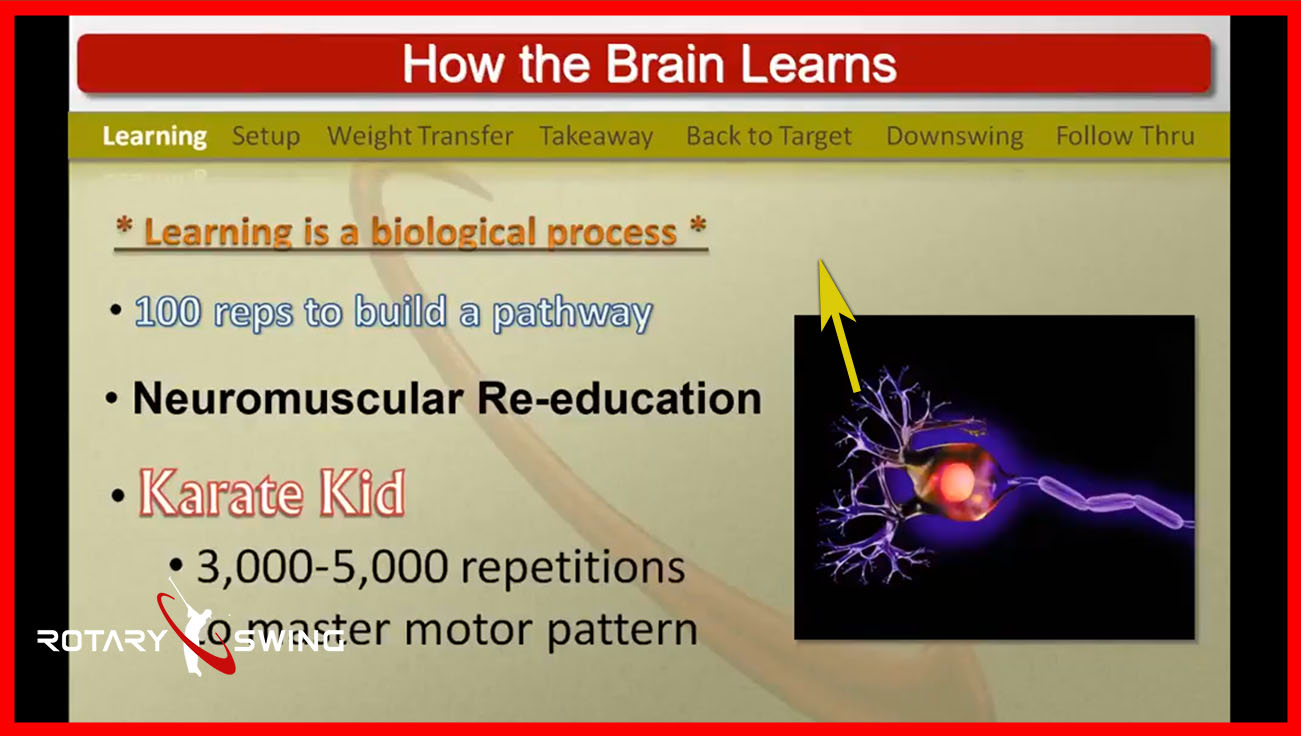

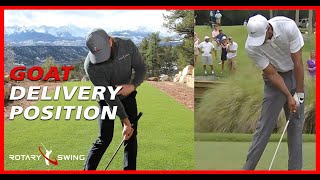
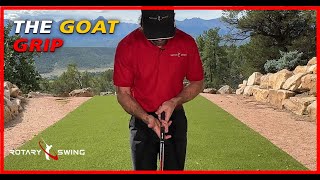
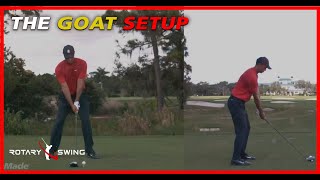
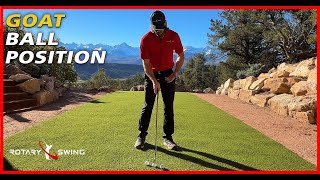
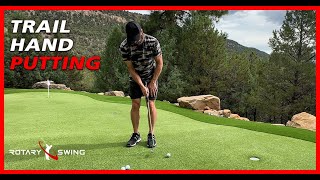

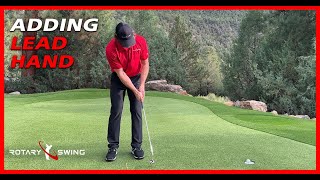

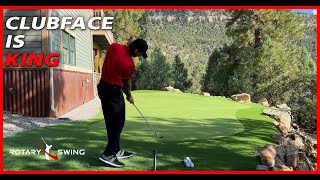
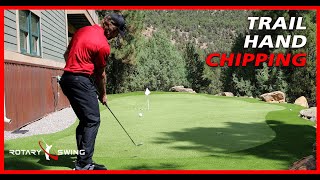
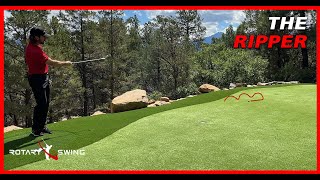
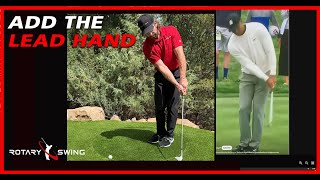


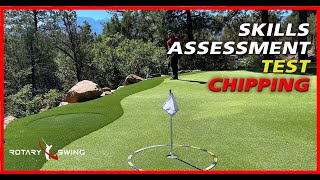

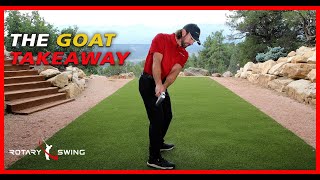
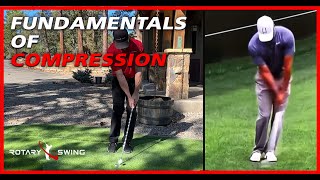
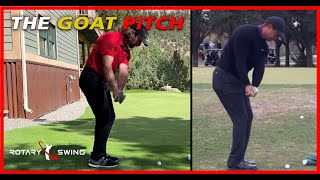
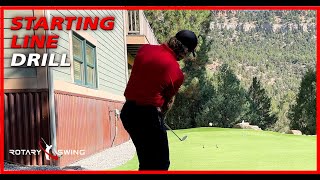
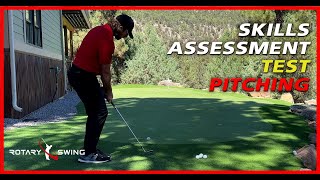
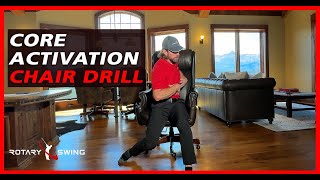
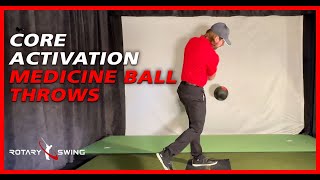
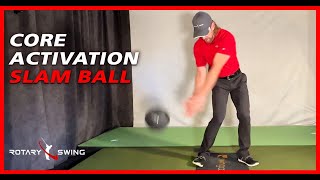
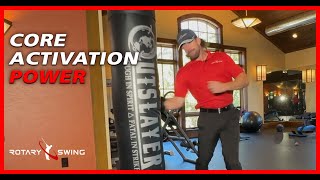
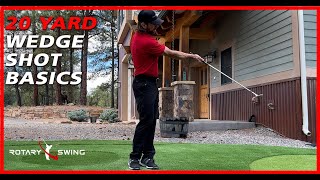
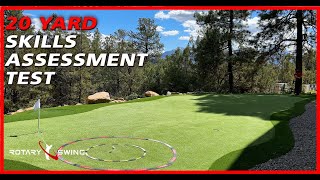
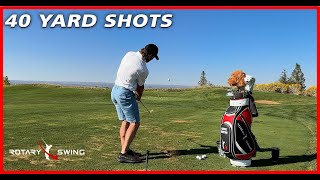
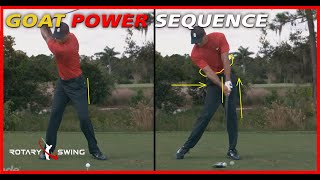
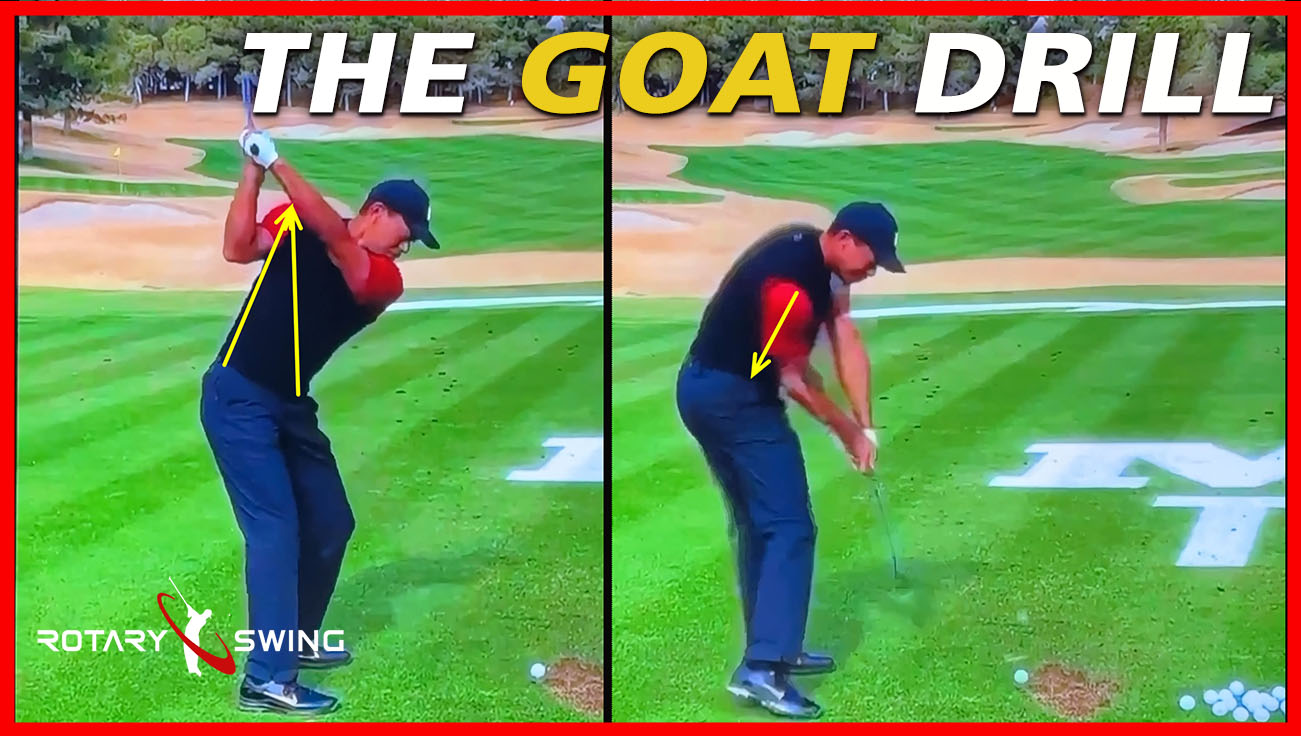
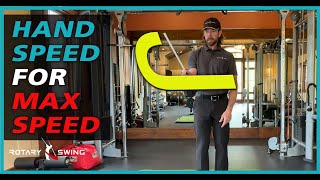
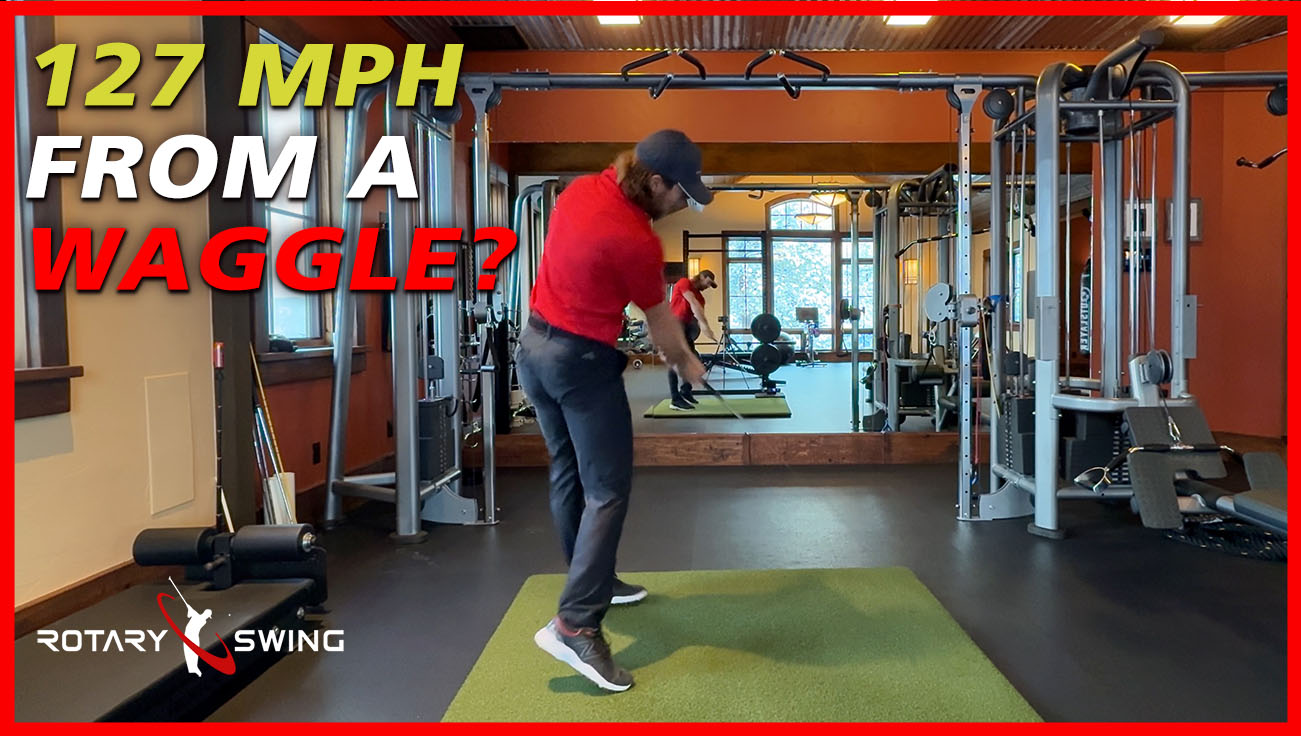
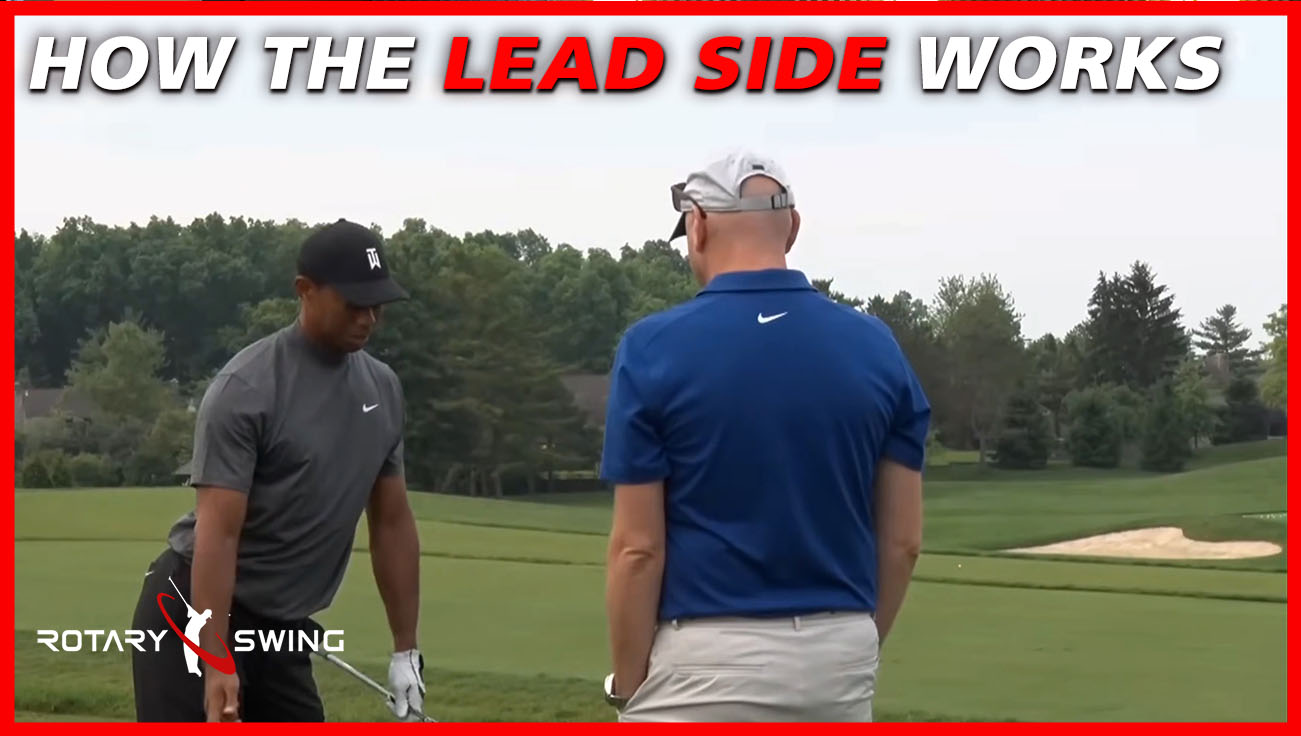
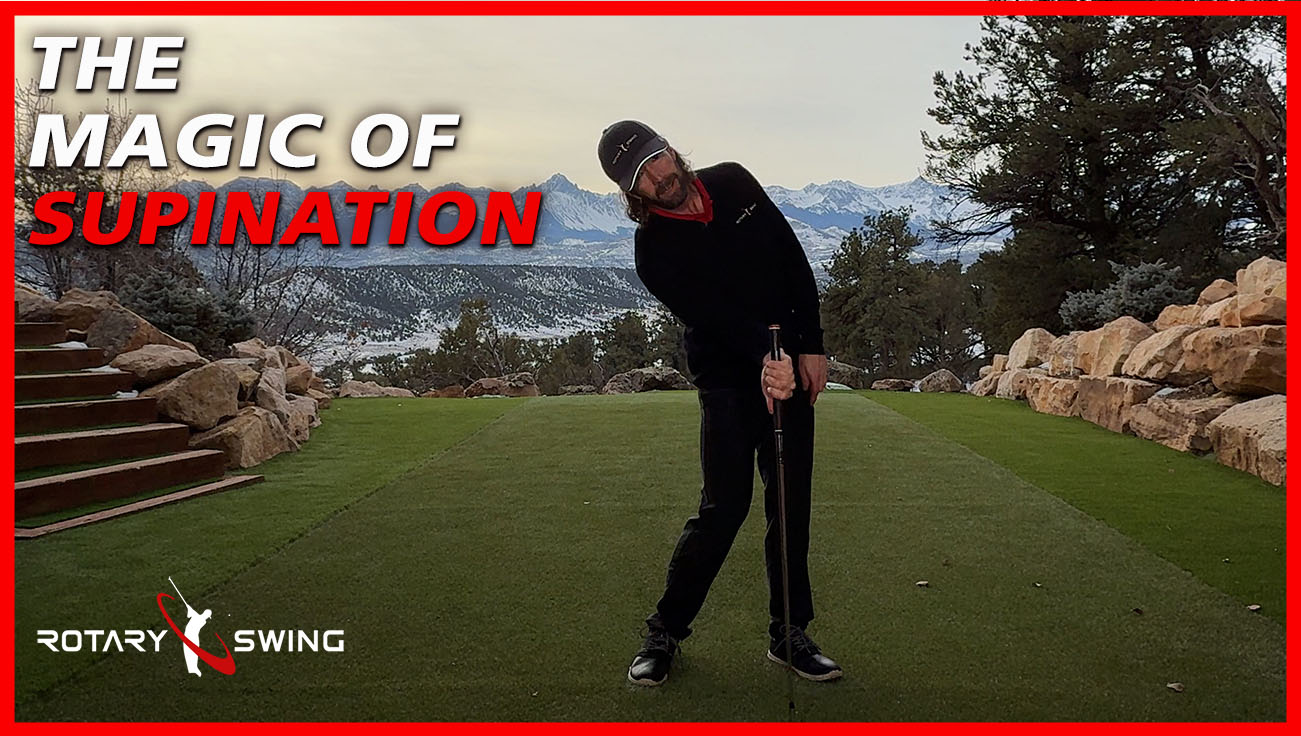
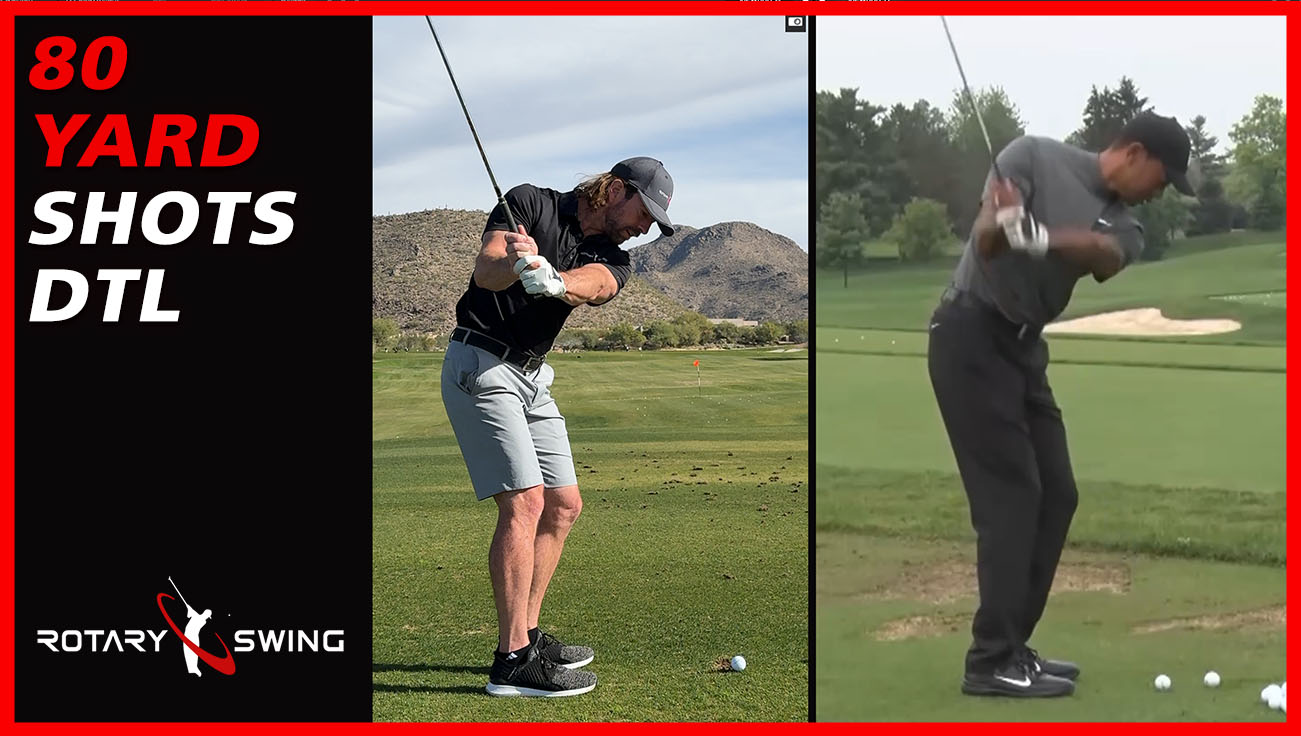
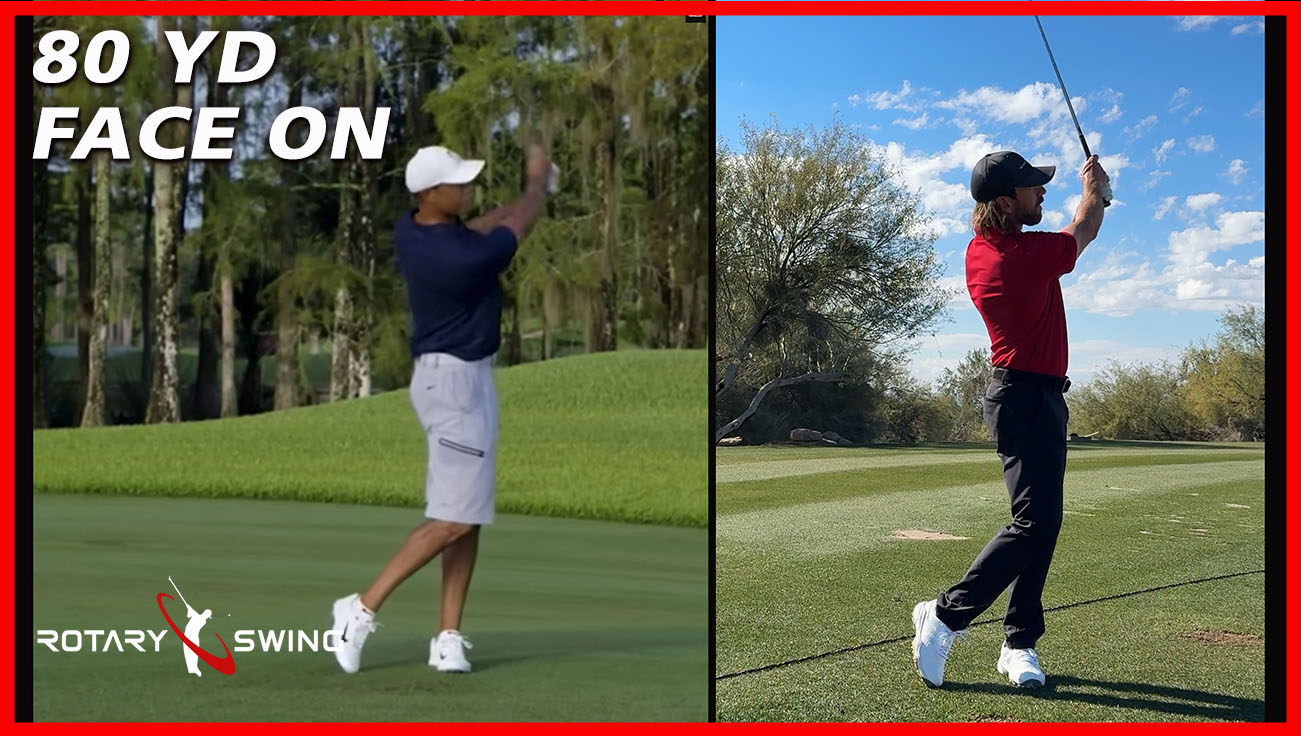
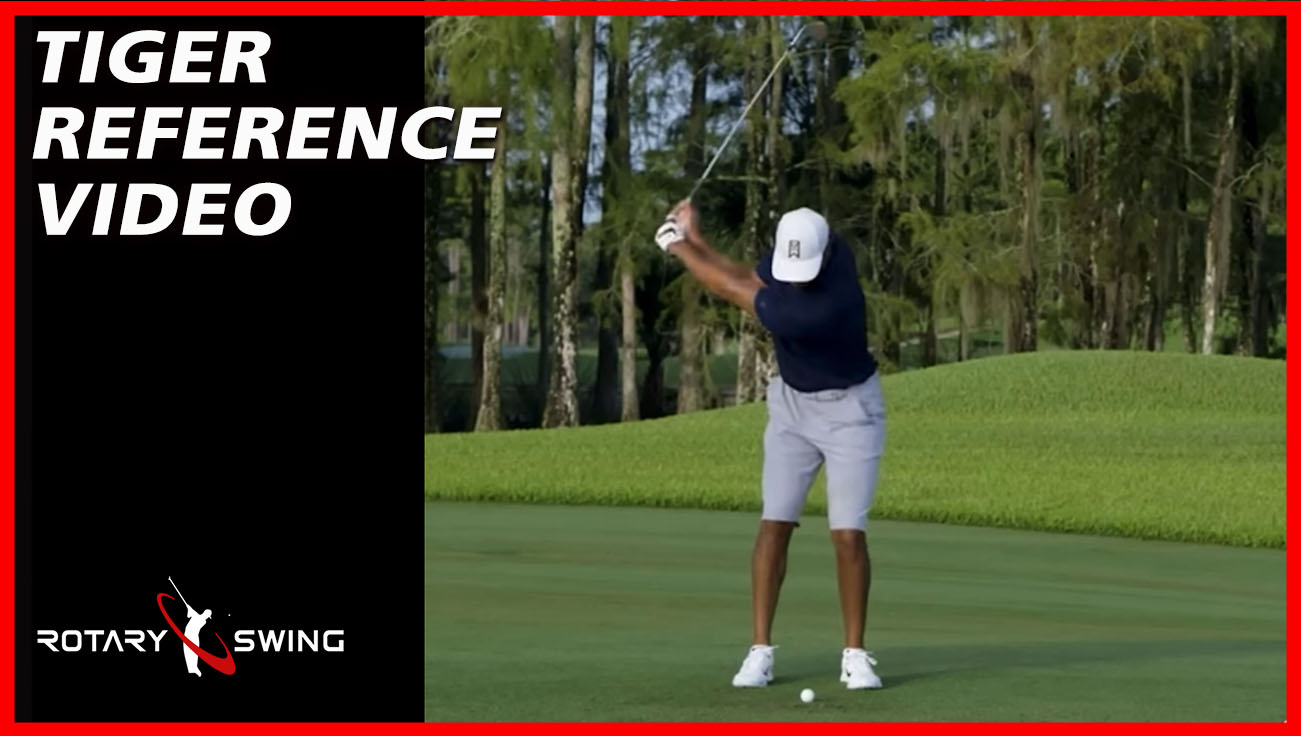
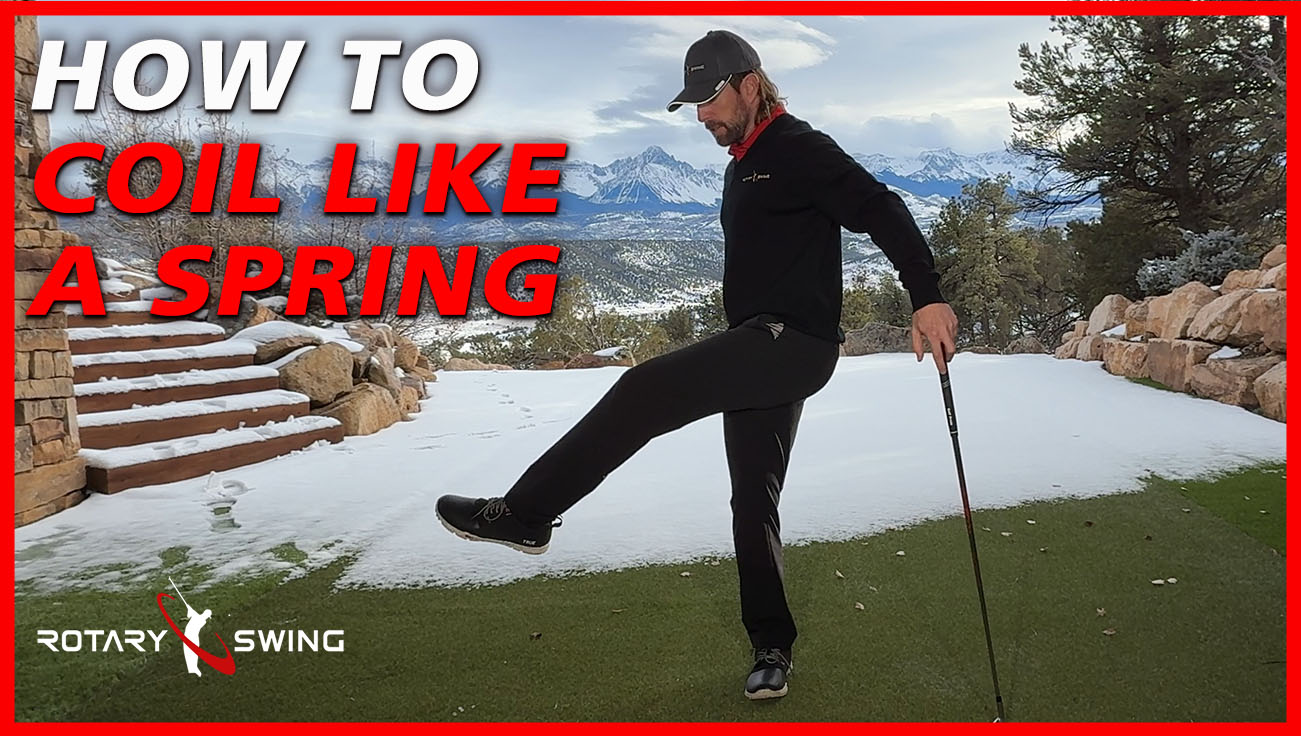

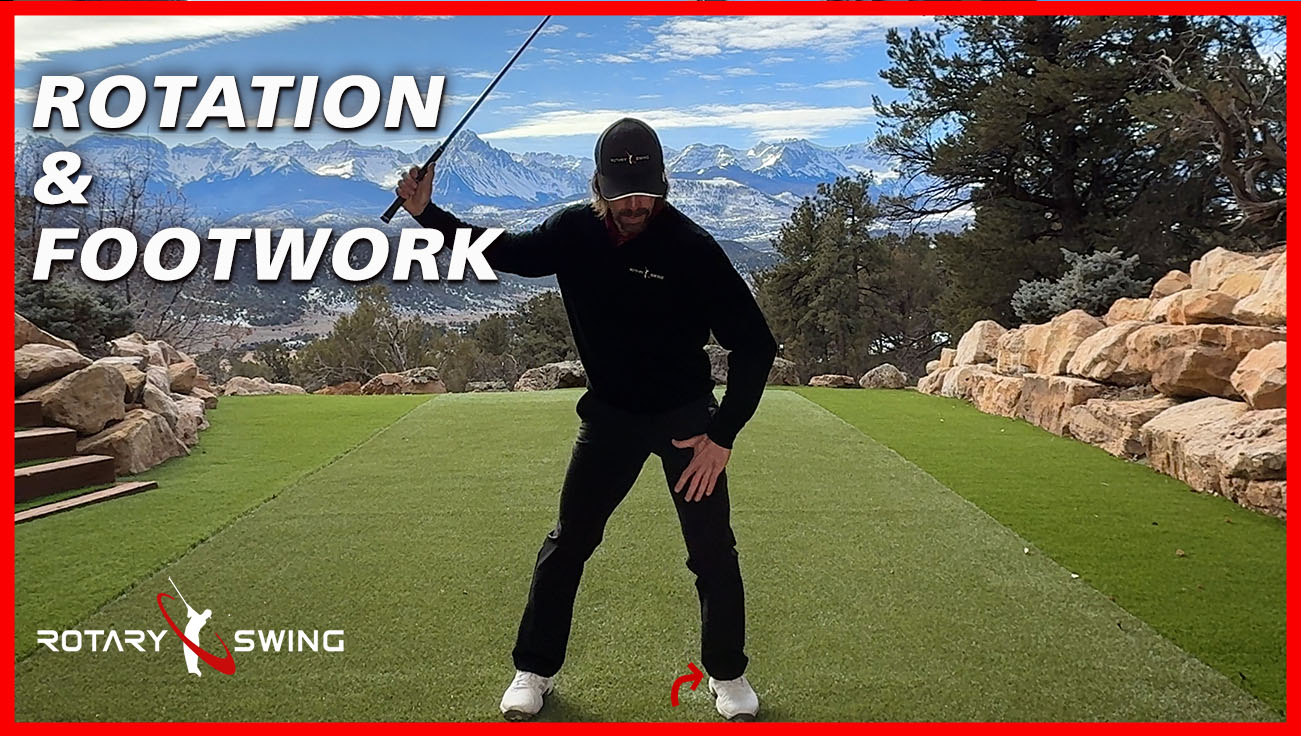
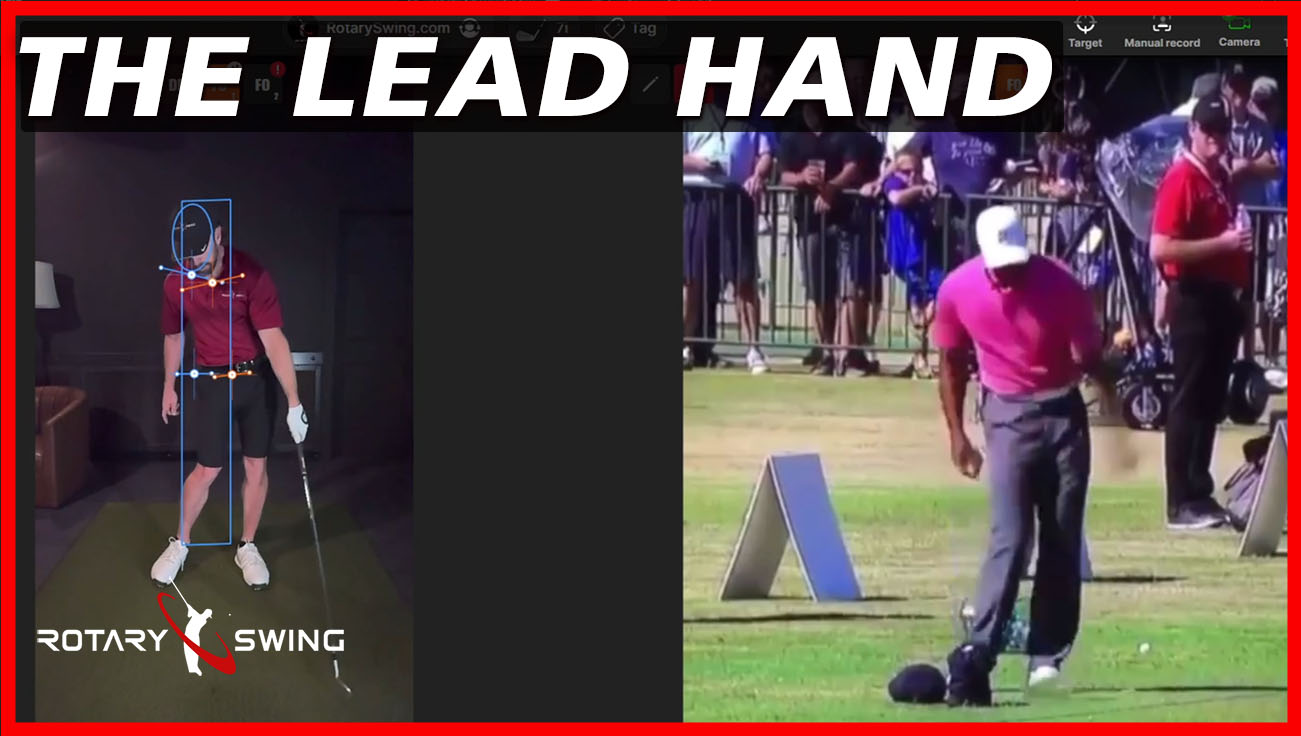
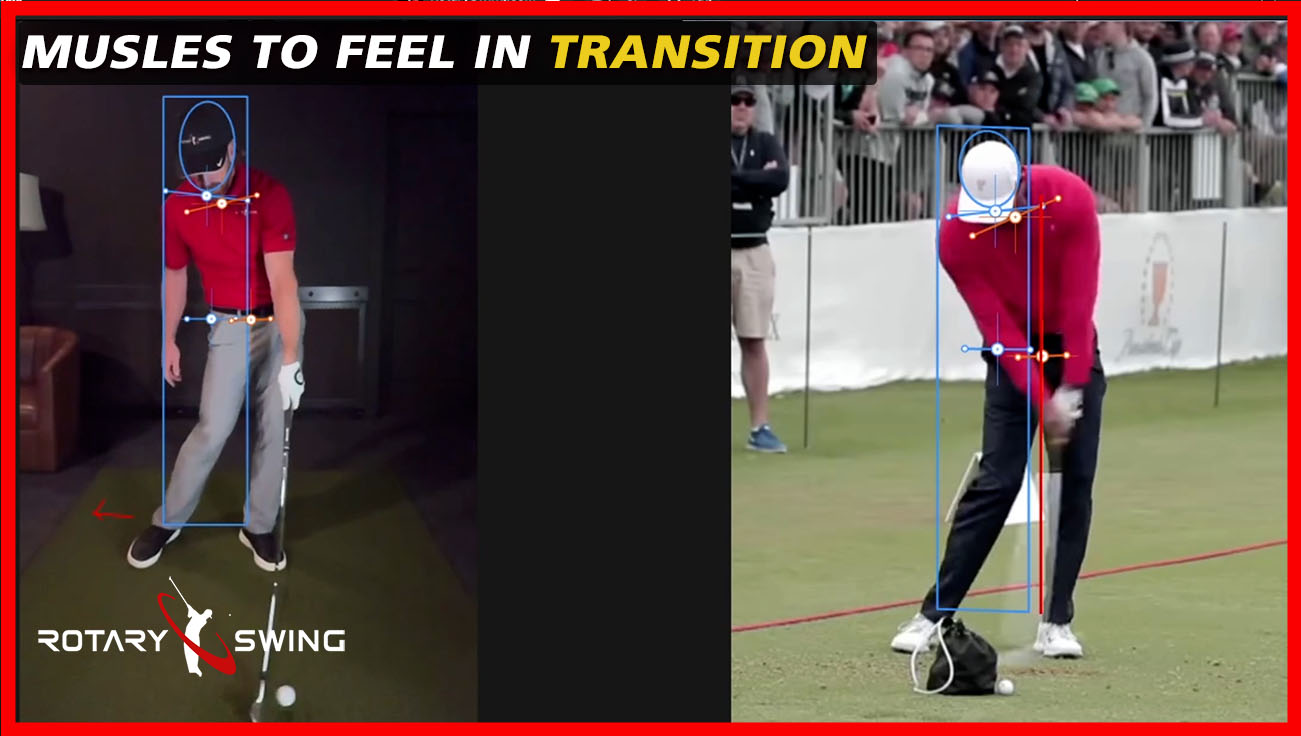
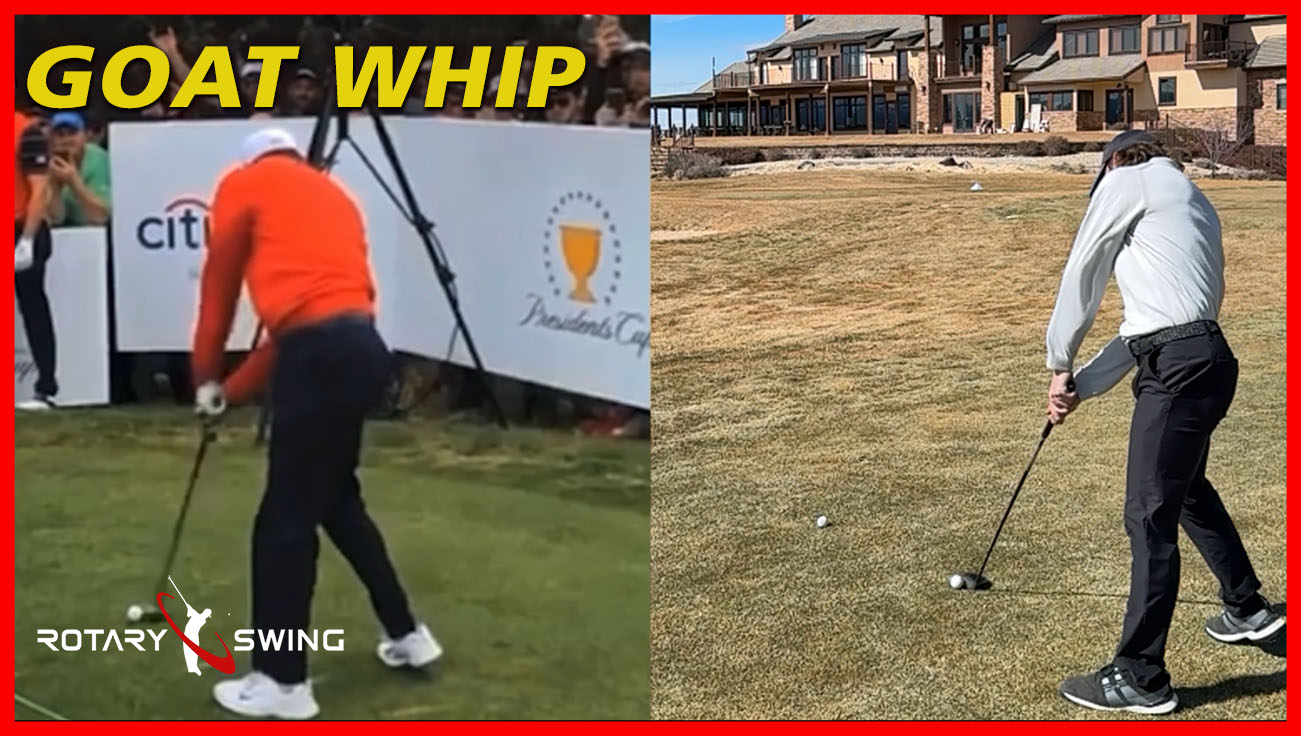
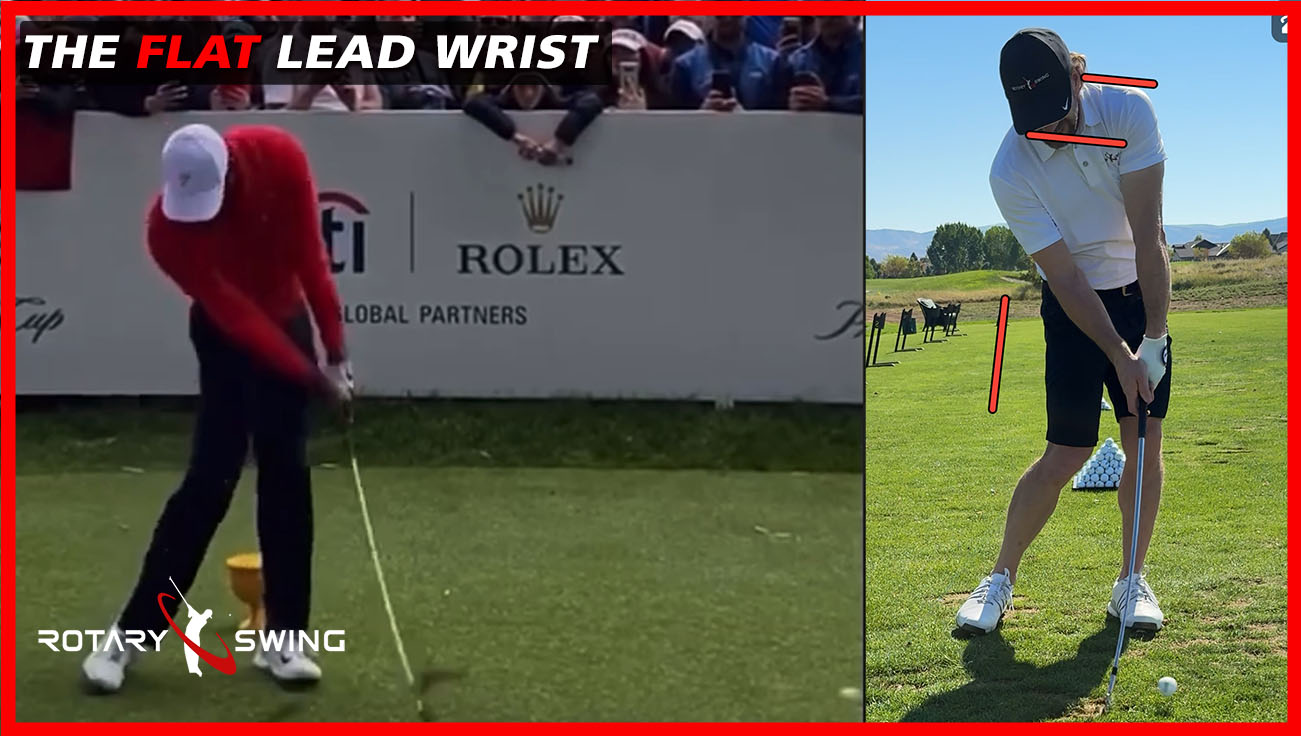
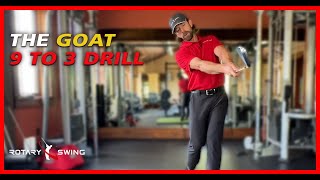
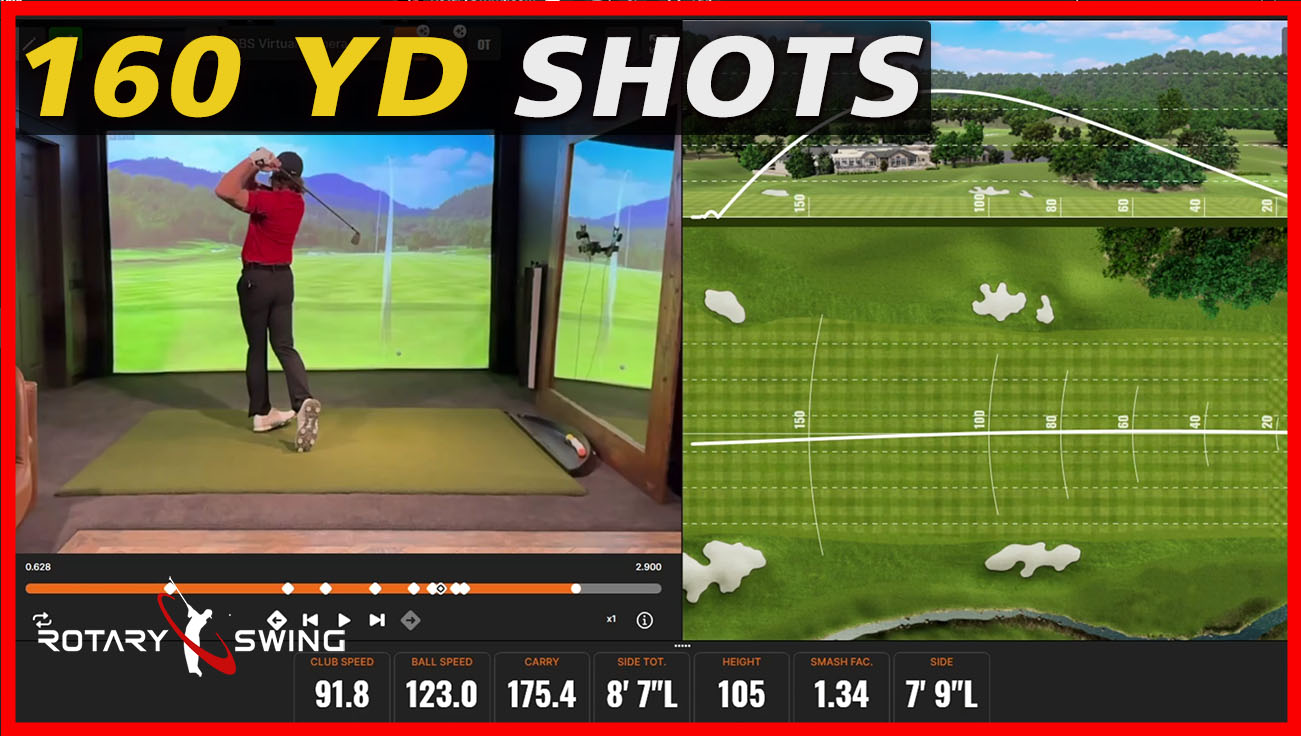
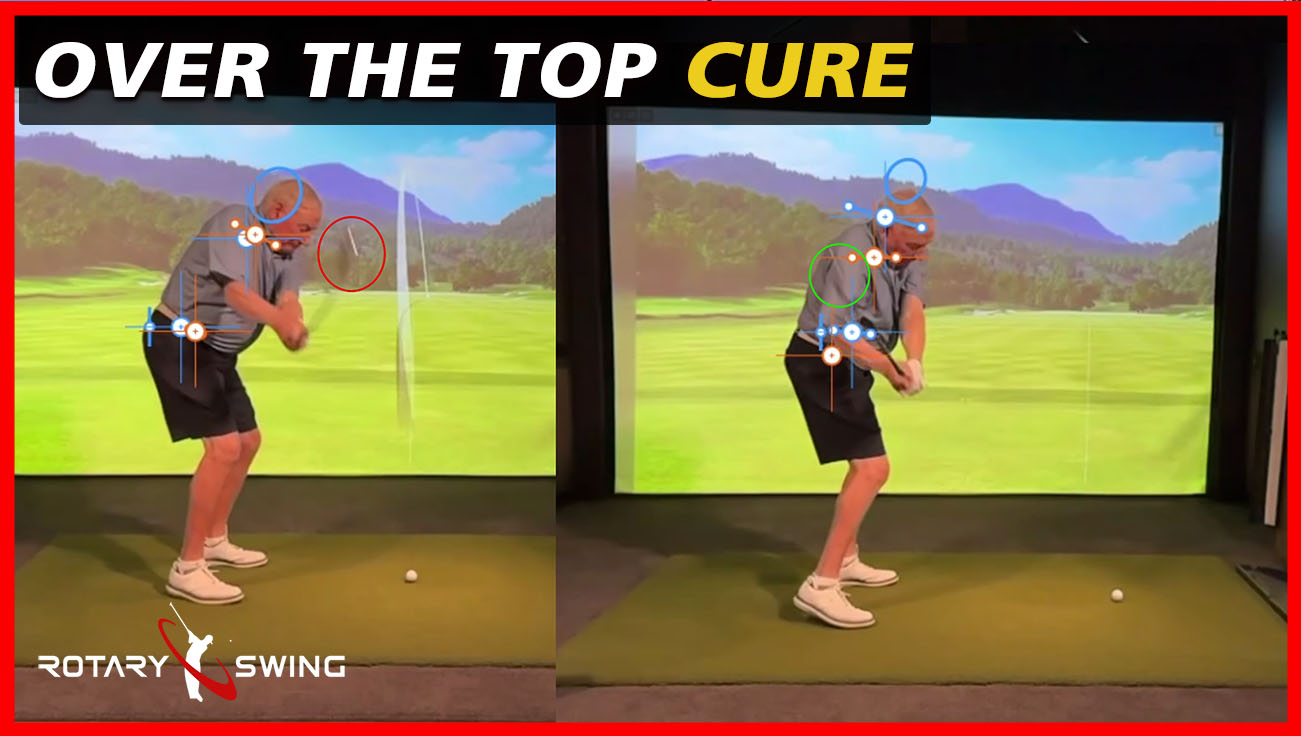

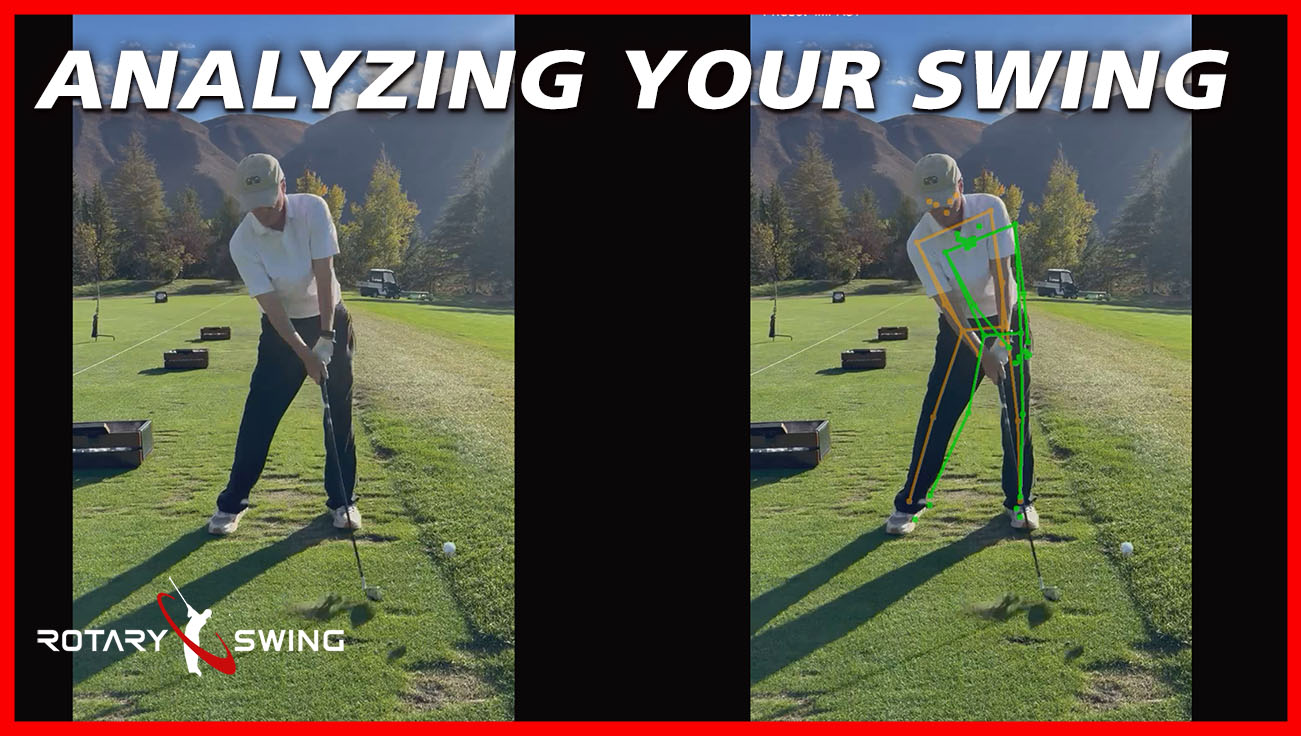
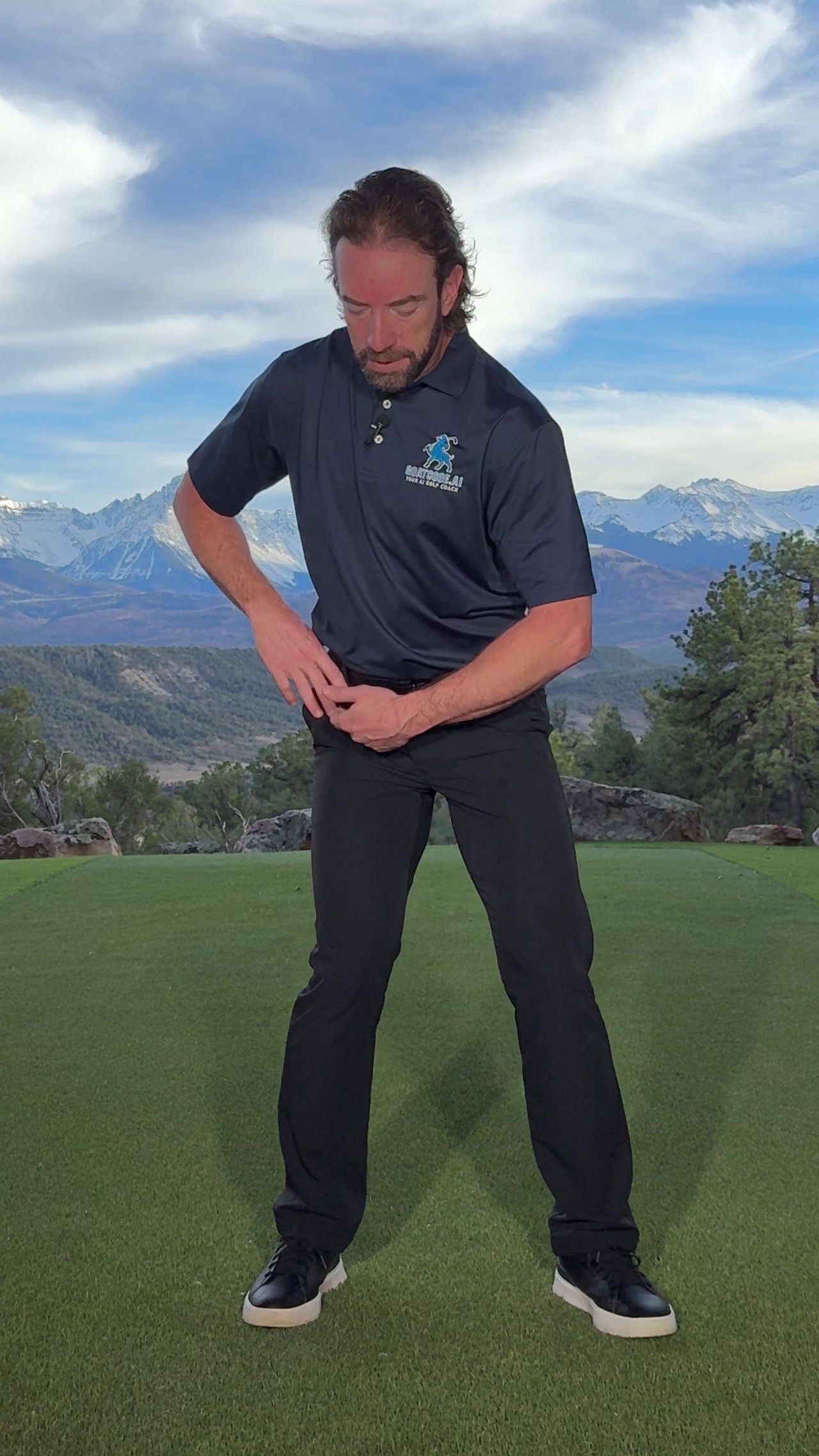
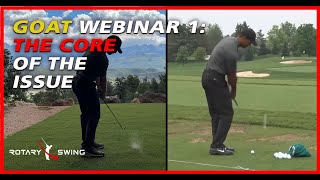
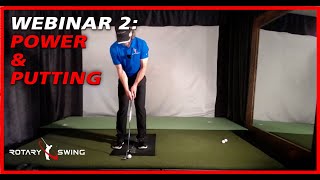
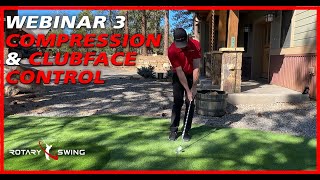
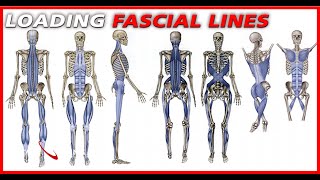
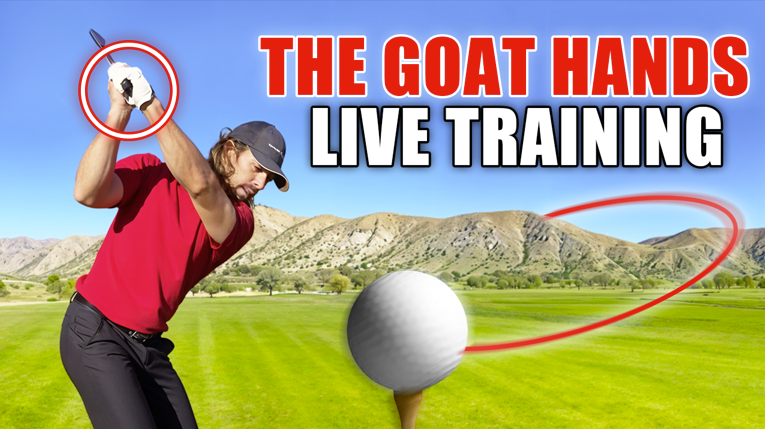
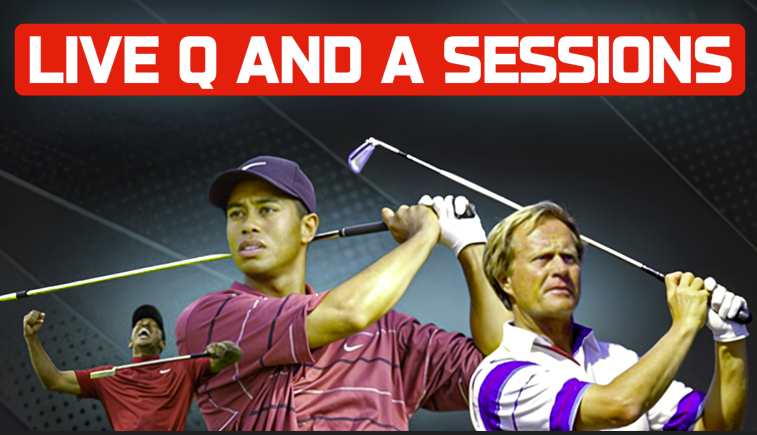
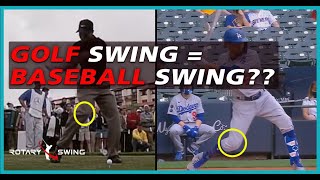

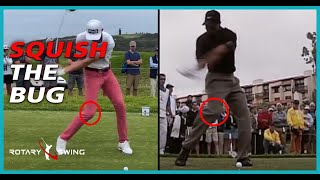
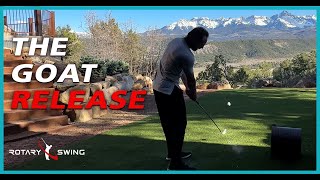
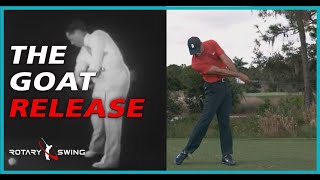
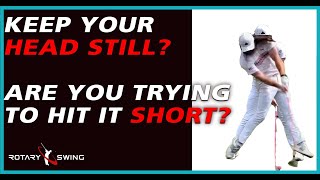
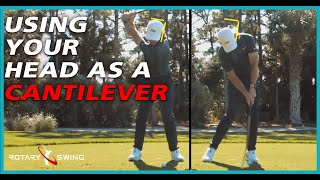
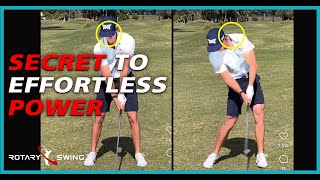
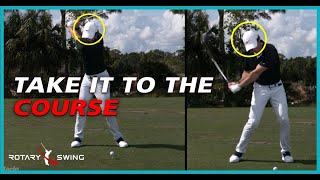
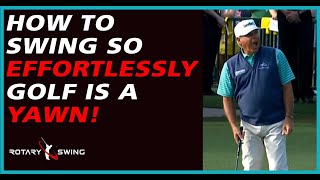
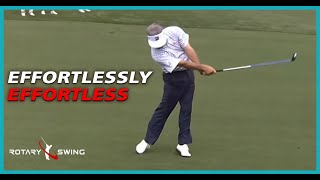
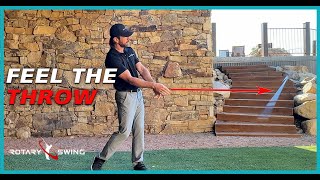
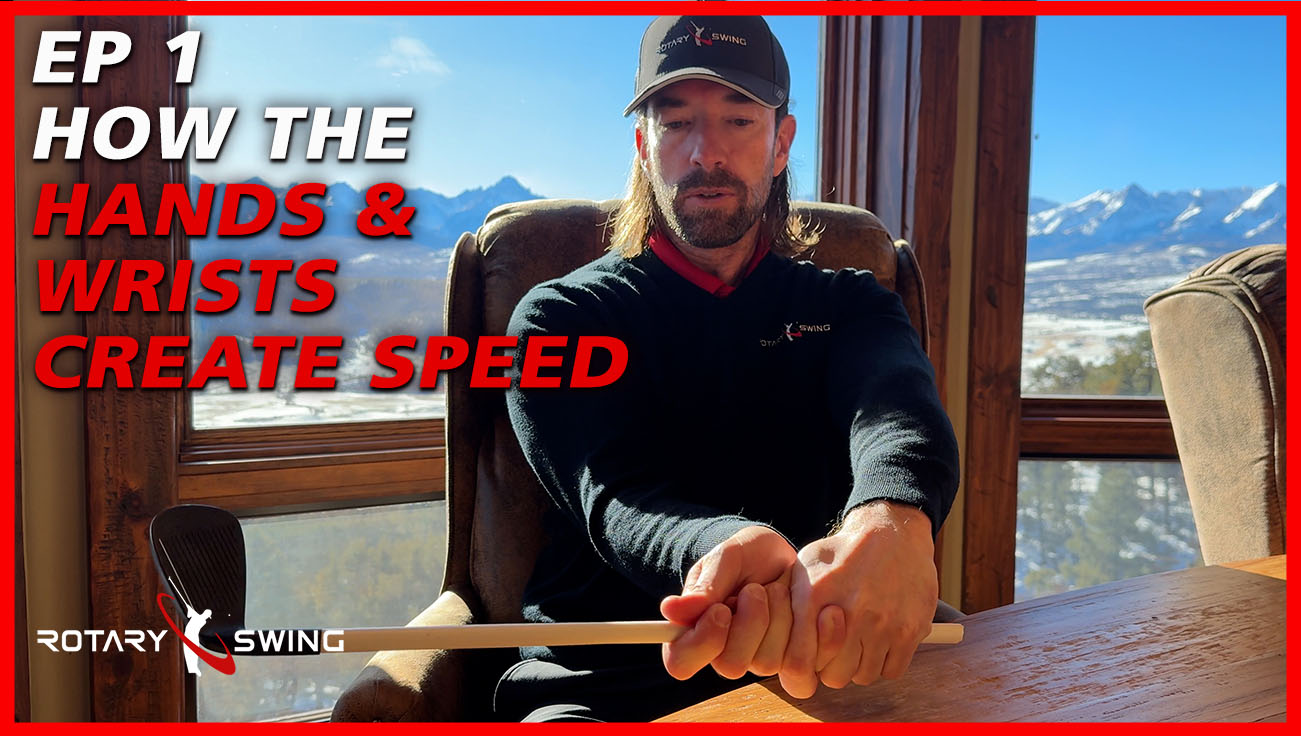

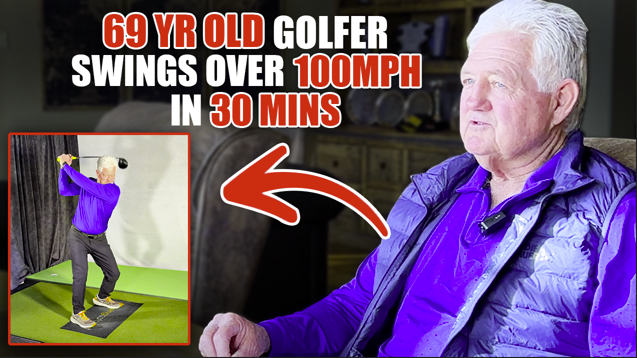
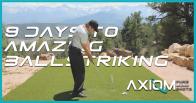
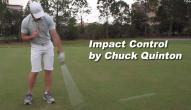
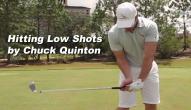

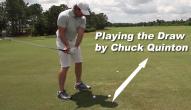
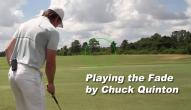
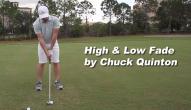
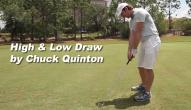
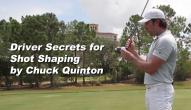
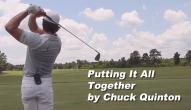

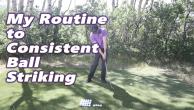
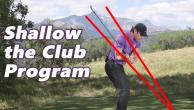
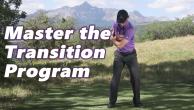
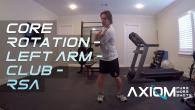
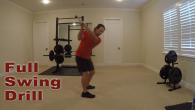
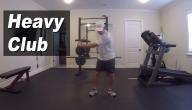
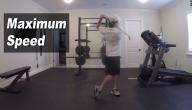
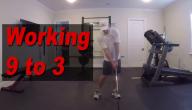
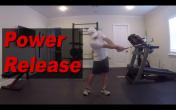
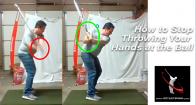
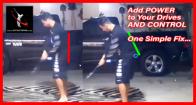
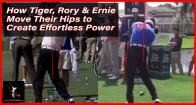
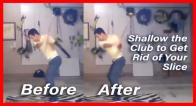

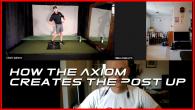
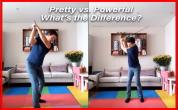
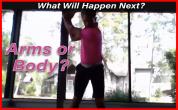
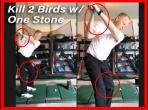
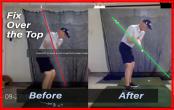
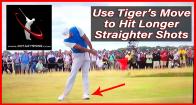
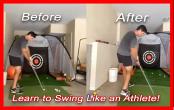
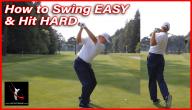
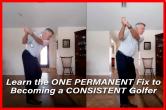
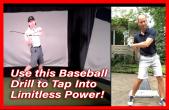
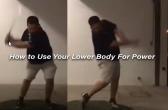
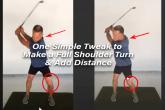
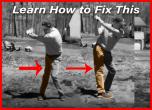
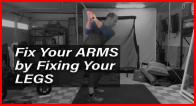
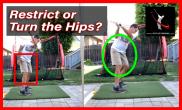
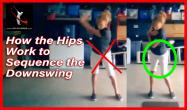
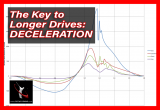
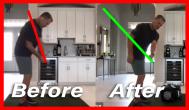
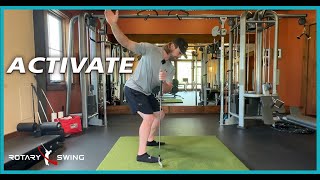
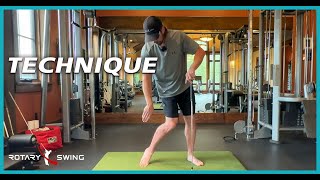
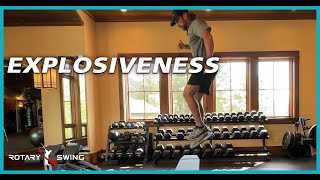
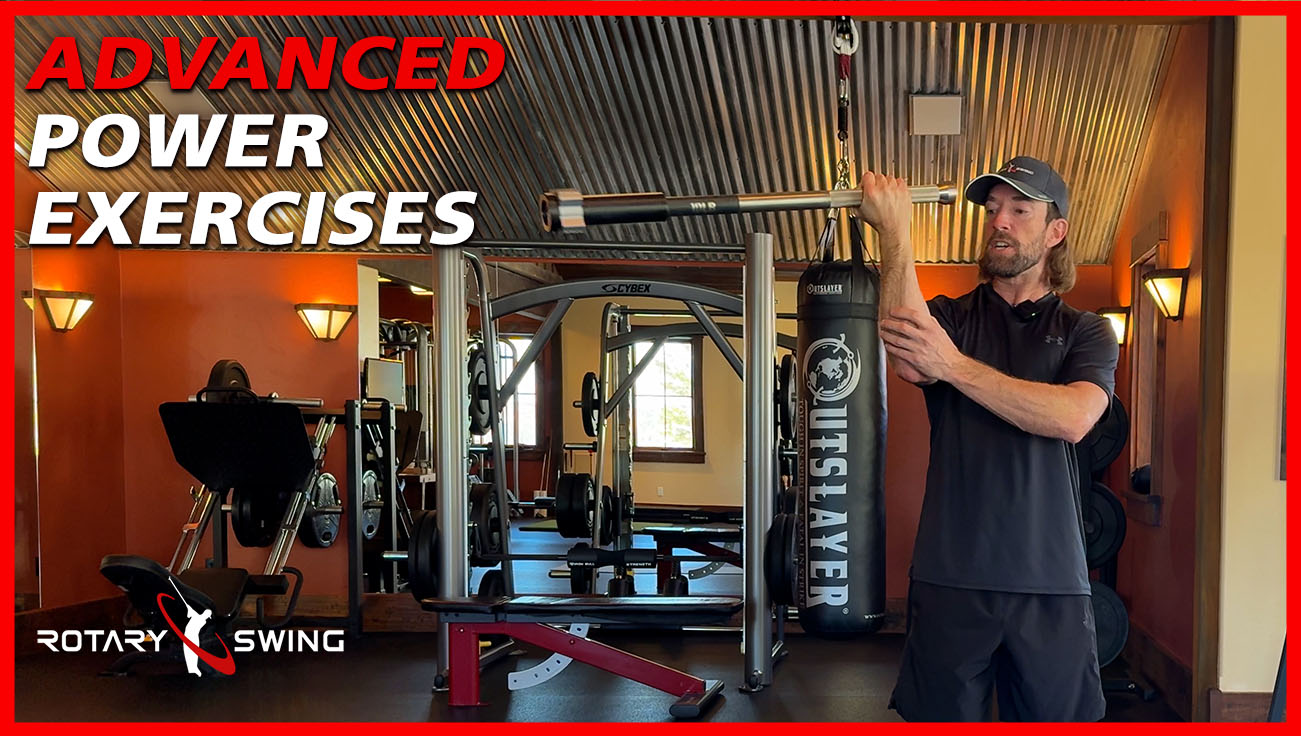
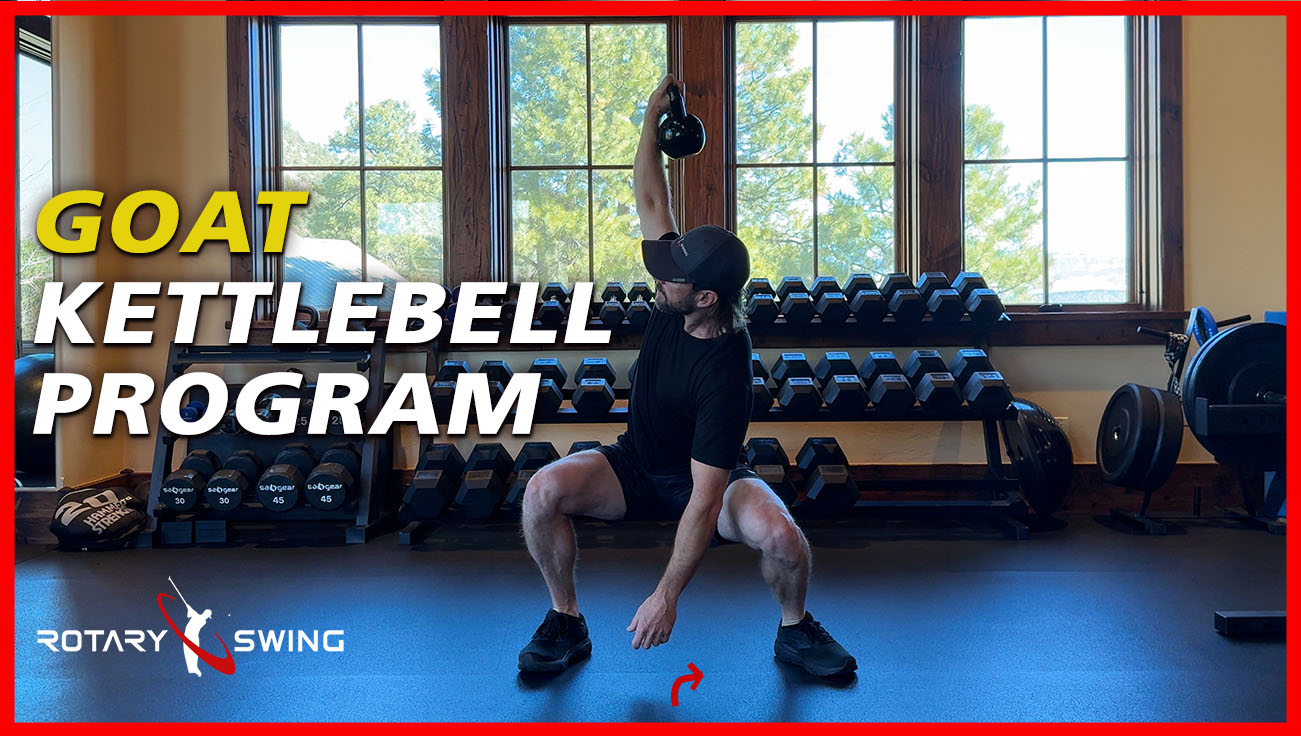

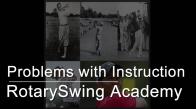
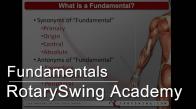

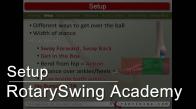
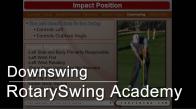
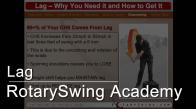
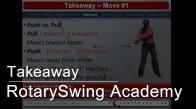
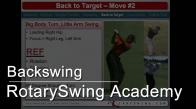
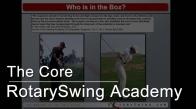
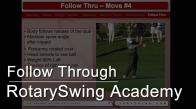

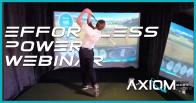

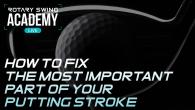
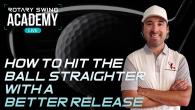
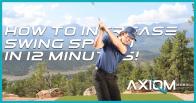
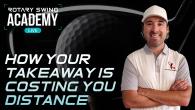
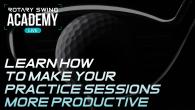
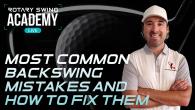
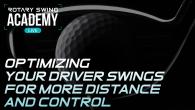
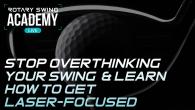


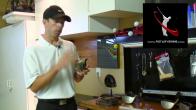
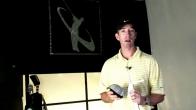
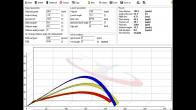
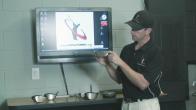
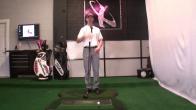
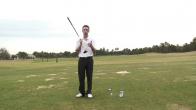
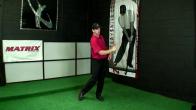
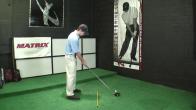

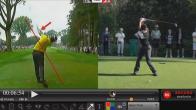
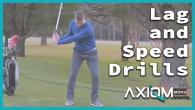
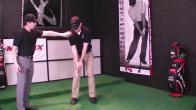
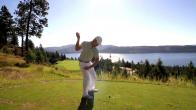
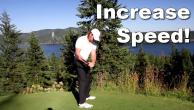
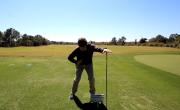
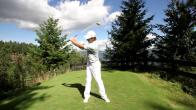

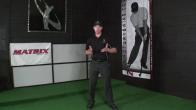
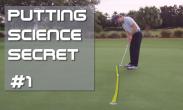
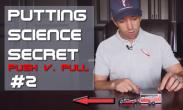
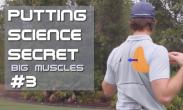
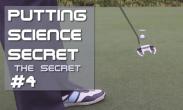
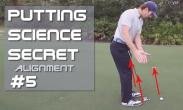
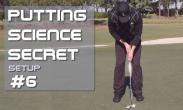
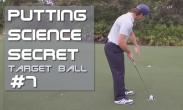
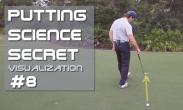
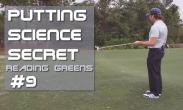
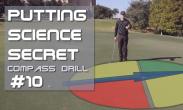
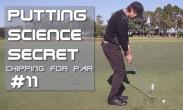
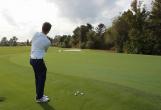

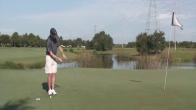
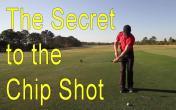
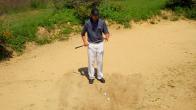
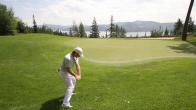
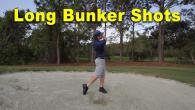
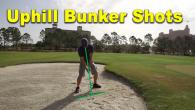
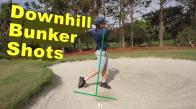
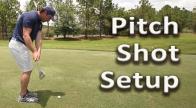
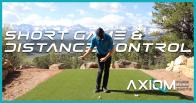
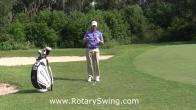
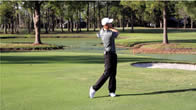
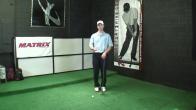
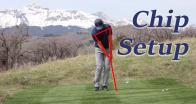
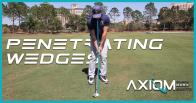
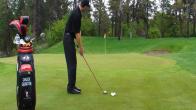
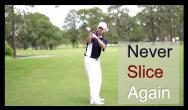
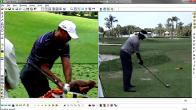
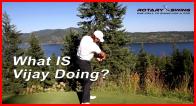
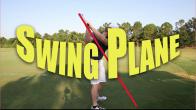
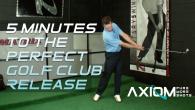
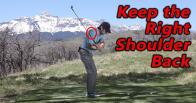

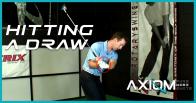



Earl
Craig (Certified RST Instructor)
Scott
Craig (Certified RST Instructor)
Scott
Craig (Certified RST Instructor)